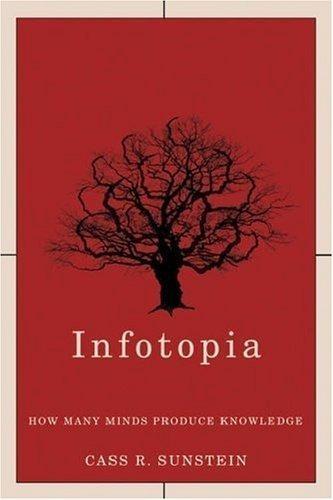
Infotopia: How Many Minds Produce Knowledge
by
Cass R. Sunstein
Published 23 Aug 2006
If the question is the likely winner of an Oscar, or the probability of a natural disaster, or the outcome of an election, there is every reason to pay a great deal of attention to prediction markets. I have suggested that in many domains, private and public institutions should consider the use of such markets to supplement deliberative processes. Government agencies, including those involved with national security (such as the Department of Defense and the Central Intelligence Agency), should experiment with internal prediction markets. To be sure, we do not yet know exactly when prediction markets will work. (Perhaps a prediction market could tell us; shall we bet?) We do know that when people lack information to aggregate, prediction markets are not particularly helpful.
…
Recall that under the Condorcet Jury Theorem, the average vote of a large group will be wrong if most group members are likely to err. In a prediction market, the existence of incentives greatly increases the likelihood that each investor will prove to be right. Those without information will not participate; those with a lot of information will Money, Prices, and Prediction Markets / 105 participate a great deal. Crucially, the problems that infect deliberating groups are reduced in prediction markets. As a result, such markets have often proved remarkably accurate. Perhaps most important, prediction markets have been found not to amplify individual errors but to eliminate them; the prices that result from trading prove reliable even if many individual traders err.
…
An interesting counterpoint: Tradesports.com, a prediction market that uses real rather than virtual money, predicted only six of eight Oscar winners in that year. In fact, prediction markets that use virtual money have been found, in many circumstances, to do as well as markets that rely on real money.23 When entertainment and law meet, prediction markets do well. Days before the ultimate verdict in the Michael Jackson case, insiders knew what would happen. As one reporter noted in advance, “Whether or not Michael Jackson’s jurors still have a reasonable doubt about his guilt, Money, Prices, and Prediction Markets / 111 the wild world of Internet betting has rendered judgment: the smart money is on acquittal.”24 Many people believe that “you can’t predict the weather,” but the National Weather Service does quite well, and orange juice futures do even better.25 The markets for the demand for gas outperform the experts on the demand for gas.26 A large prediction market focuses on the likelihood that economic data released later in the week will show specific values;27 the market has performed at least as well as the consensus forecasts of a survey of about fifty professional forecasters.
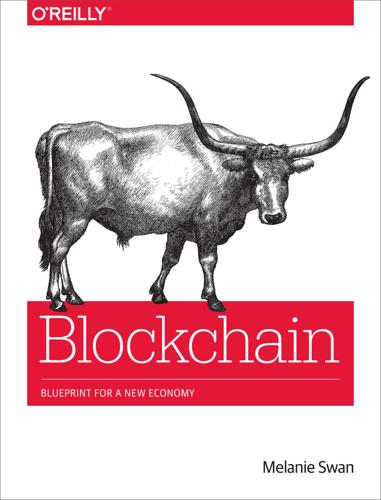
Blockchain: Blueprint for a New Economy
by
Melanie Swan
Published 22 Jan 2014
A better way to crowdfund cryptocurrency projects in a decentralized yet legal way, with more effective checks and balances, is needed. Bitcoin Prediction Markets One example of new tech with old tech is Bitcoin prediction markets like Predictious and Fairlay.50 Bitcoin prediction markets offer a betting venue for the usual real-world outcomes as prediction markets always have, such as elections, political legislation, sports matches, and technology product releases, and also serve as a good source of information about the developing blockchain industry. Bitcoin prediction markets are one way to see what insiders think about Bitcoin’s future price directions, the success of different altcoin and protocol 2.0 projects, and industry issues more generally (e.g., technical development issues with Bitcoin, such as when there will be a hard fork—significant change—of the code, and the level of difficulty of the mining algorithm).
…
-M2M/IoT Bitcoin Payment Network to Enable the Machine Economy and consensus models, Blockchain AI: Consensus as the Mechanism to Foster “Friendly” AI-Blockchain Consensus Increases the Information Resolution of the Universe extensibility of, Extensibility of Blockchain Technology Concepts for facilitating big data predictive task automation, Blockchain Layer Could Facilitate Big Data’s Predictive Task Automation future applications, Blockchain AI: Consensus as the Mechanism to Foster “Friendly” AI-Blockchain Consensus Increases the Information Resolution of the Universe limitations of (see limitations) organizational capabilities, Blockchain Technology Is a New and Highly Effective Model for Organizing Activity tracking capabilities, Fundamental Economic Principles: Discovery, Value Attribution, and Exchange-Fundamental Economic Principles: Discovery, Value Attribution, and Exchange blockchain-recorded marriage, Decentralized Governance Services BlockCypher, Blockchain Development Platforms and APIs BOINC, DAOs and DACs bond deposit postings, Technical Challenges Brin, David, Freedom of Speech/Anti-Censorship Applications: Alexandria and Ostel BTCjam, Financial Services business model challenges, Business Model Challenges Buttercoin, Financial Services Byrne, Patrick, Financial Services C Campus Cryptocurrency Network, Campuscoin Campuscoin, Campuscoin-Campuscoin censorship, Internet (see decentralized DNS system) Chain, Blockchain Development Platforms and APIs challenges (see see limitations) charity donations, Charity Donations and the Blockchain—Sean’s Outpost China, Relation to Fiat Currency ChromaWallet, Wallet Development Projects Chronobit, Virtual Notary, Bitnotar, and Chronobit Circle Internet Financial, eWallet Services and Personal Cryptosecurity Codius, Financial Services coin drops, Coin Drops as a Strategy for Public Adoption coin mixing, eWallet Services and Personal Cryptosecurity coin, defining, Terminology and Concepts, Currency, Token, Tokenizing Coinapult, Global Public Health: Bitcoin for Contagious Disease Relief Coinapult LOCKS, Relation to Fiat Currency Coinbase, Merchant Acceptance of Bitcoin, Financial Services CoinBeyond, Merchant Acceptance of Bitcoin Coinffeine, Financial Services Coinify, Merchant Acceptance of Bitcoin Coinprism, Wallet Development Projects Coinspace, Crowdfunding CoinSpark, Wallet Development Projects colored coins, Smart Property, Blockchain 2.0 Protocol Projects community supercomputing, Community Supercomputing Communitycoin, Currency, Token, Tokenizing-Communitycoin: Hayek’s Private Currencies Vie for Attention complementary currency systems, Demurrage Currencies: Potentially Incitory and Redistributable concepts, redefining, Terminology and Concepts-Terminology and Concepts consensus models, Blockchain AI: Consensus as the Mechanism to Foster “Friendly” AI-Blockchain Consensus Increases the Information Resolution of the Universe consensus-derived information, Blockchain Consensus Increases the Information Resolution of the Universe contagious disease relief, Global Public Health: Bitcoin for Contagious Disease Relief contracts, Blockchain 2.0: Contracts-The Blockchain as a Path to Artificial Intelligence (see also smart contracts) crowdfunding, Crowdfunding-Crowdfunding financial services, Financial Services-Financial Services marriage, Decentralized Governance Services prediction markets, Bitcoin Prediction Markets smart property, Smart Property-Smart Property wallet development projects, Wallet Development Projects copyright protection, Monegraph: Online Graphics Protection Counterparty, Blockchain 2.0 Protocol Projects, Counterparty Re-creates Ethereum’s Smart Contract Platform Counterparty currency (XCP), Currency, Token, Tokenizing Counterwallet, Wallet Development Projects crowdfunding, Crowdfunding-Crowdfunding cryptocurrencies benefits of, Currency, Token, Tokenizing cryptosecurity, eWallet Services and Personal Cryptosecurity eWallet services, eWallet Services and Personal Cryptosecurity mechanics of, How a Cryptocurrency Works-Merchant Acceptance of Bitcoin merchant acceptance, Merchant Acceptance of Bitcoin cryptosecurity challenges, eWallet Services and Personal Cryptosecurity cryptowallet, Blockchain Neutrality currency, Technology Stack: Blockchain, Protocol, Currency-Regulatory Status, Currency, Token, Tokenizing-Extensibility of Demurrage Concept and Features Campuscoin, Campuscoin-Campuscoin coin drops, Coin Drops as a Strategy for Public Adoption Communitycoin, Communitycoin: Hayek’s Private Currencies Vie for Attention-Communitycoin: Hayek’s Private Currencies Vie for Attention cryptocurrencies, How a Cryptocurrency Works-Merchant Acceptance of Bitcoin decentralizing, Communitycoin: Hayek’s Private Currencies Vie for Attention defining, Currency, Token, Tokenizing-Currency, Token, Tokenizing, Currency: New Meanings demurrage, Demurrage Currencies: Potentially Incitory and Redistributable-Extensibility of Demurrage Concept and Features double-spend problem, The Double-Spend and Byzantine Generals’ Computing Problems fiat currency, Relation to Fiat Currency-Relation to Fiat Currency monetary and nonmonetary, Currency Multiplicity: Monetary and Nonmonetary Currencies-Currency Multiplicity: Monetary and Nonmonetary Currencies new meanings, Currency: New Meanings technology stack, Technology Stack: Blockchain, Protocol, Currency-Technology Stack: Blockchain, Protocol, Currency currency mulitplicity, Currency Multiplicity: Monetary and Nonmonetary Currencies-Currency Multiplicity: Monetary and Nonmonetary Currencies D DAOs, DAOs and DACs-DAOs and DACs DAOs/DACs, DAOs and DACs-DAOs and DACs, Batched Notary Chains as a Class of Blockchain Infrastructure, Blockchain Government Dapps, Dapps-Dapps, Extensibility of Demurrage Concept and Features Dark Coin, eWallet Services and Personal Cryptosecurity dark pools, Technical Challenges Dark Wallet, eWallet Services and Personal Cryptosecurity DASs, DASs and Self-Bootstrapped Organizations DDP, Crowdfunding decentralization, Smart Contracts, Centralization-Decentralization Tension and Equilibrium decentralized applications (Dapps), Dapps-Dapps decentralized autonomous organization/corporation (DAO) (see DAOs/DACs) decentralized autonomous societies (DASs), DASs and Self-Bootstrapped Organizations decentralized autonomy, eWallet Services and Personal Cryptosecurity decentralized DNS, Namecoin: Decentralized Domain Name System-Decentralized DNS Functionality Beyond Free Speech: Digital Identity challenges of, Challenges and Other Decentralized DNS Services and digital identity, Decentralized DNS Functionality Beyond Free Speech: Digital Identity-Decentralized DNS Functionality Beyond Free Speech: Digital Identity DotP2P, Challenges and Other Decentralized DNS Services decentralized file storage, Blockchain Ecosystem: Decentralized Storage, Communication, and Computation decentralized secure file serving, Blockchain Ecosystem: Decentralized Storage, Communication, and Computation deeds, Decentralized Governance Services demurrage currencies, Demurrage Currencies: Potentially Incitory and Redistributable-Extensibility of Demurrage Concept and Features action-incitory features, Extensibility of Demurrage Concept and Features limitations of, Demurrage Currencies: Potentially Incitory and Redistributable digital art, Digital Art: Blockchain Attestation Services (Notary, Intellectual Property Protection)-Personal Thinking Blockchains (see also blockchain attestation services) hashing and timestamping, Hashing Plus Timestamping-Limitations online graphics protection, Monegraph: Online Graphics Protection digital cryptography, Ethereum: Turing-Complete Virtual Machine, Public/Private-Key Cryptography 101 digital divide, defining, Digital Divide of Bitcoin digital identity verification, Blockchain 2.0: Contracts, Smart Property, Wallet Development Projects, Digital Identity Verification-Digital Divide of Bitcoin, Limitations, Decentralized Governance Services, Liquid Democracy and Random-Sample Elections, Blockchain Learning: Bitcoin MOOCs and Smart Contract Literacy, Privacy Challenges for Personal Records dispute resolution, PrecedentCoin: Blockchain Dispute Resolution DIYweathermodeling, Community Supercomputing DNAnexus, Genomecoin, GenomicResearchcoin Dogecoin, Technology Stack: Blockchain, Protocol, Currency, Currency Multiplicity: Monetary and Nonmonetary Currencies, Scandals and Public Perception DotP2P, Challenges and Other Decentralized DNS Services double-spend problem, The Double-Spend and Byzantine Generals’ Computing Problems DriveShare, DAOs and DACs dynamic redistribution of currency (see demurrage currency) E education (see learning and literacy) Electronic Freedom Foundation (EFF), Distributed Censorship-Resistant Organizational Models EMR (electronic medical record) system, EMRs on the Blockchain: Personal Health Record Storage Ethereum, Crowdfunding, Blockchain 2.0 Protocol Projects, Blockchain Ecosystem: Decentralized Storage, Communication, and Computation, Ethereum: Turing-Complete Virtual Machine-Counterparty Re-creates Ethereum’s Smart Contract Platform eWallet services, eWallet Services and Personal Cryptosecurity ExperimentalResultscoin, Blockchain Academic Publishing: Journalcoin F Fairlay, Bitcoin Prediction Markets fiat currency, Relation to Fiat Currency-Relation to Fiat Currency file serving, Blockchain Ecosystem: Decentralized Storage, Communication, and Computation, Ethereum: Turing-Complete Virtual Machine file storage, Blockchain Ecosystem: Decentralized Storage, Communication, and Computation financial services, Regulatory Status, Financial Services-Financial Services, Blockchain Technology Is a New and Highly Effective Model for Organizing Activity, Government Regulation Fitbit, Personal Thinking Blockchains, Blockchain Health Research Commons, Extensibility of Demurrage Concept and Features Florincoin, Freedom of Speech/Anti-Censorship Applications: Alexandria and Ostel Folding@Home, DAOs and DACs, Blockchain Science: Gridcoin, Foldingcoin, Community Supercomputing franculates, Blockchain Government freedom of speech, Namecoin: Decentralized Domain Name System, Freedom of Speech/Anti-Censorship Applications: Alexandria and Ostel (see also decentralized DNS system) Freicoin, Demurrage Currencies: Potentially Incitory and Redistributable fundraising (see crowdfunding) futarchy, Futarchy: Two-Step Democracy with Voting + Prediction Markets-Futarchy: Two-Step Democracy with Voting + Prediction Markets G GBIcoin, Demurrage Currencies: Potentially Incitory and Redistributable GBIs (Guaranteed Basic Income initiatives), Demurrage Currencies: Potentially Incitory and Redistributable Gems, Blockchain Development Platforms and APIs, Dapps Genecoin, Blockchain Genomics Genomecoin, Genomecoin, GenomicResearchcoin Genomic Data Commons, Genomecoin, GenomicResearchcoin genomic sequencing, Blockchain Genomics 2.0: Industrialized All-Human-Scale Sequencing Solution-Genomecoin, GenomicResearchcoin GenomicResearchcoin, Genomecoin, GenomicResearchcoin genomics, consumer, Blockchain Genomics-Genomecoin, GenomicResearchcoin Git, Blockchain Ecosystem: Decentralized Storage, Communication, and Computation GitHub, Blockchain Academic Publishing: Journalcoin, Currency Multiplicity: Monetary and Nonmonetary Currencies global public health, Global Public Health: Bitcoin for Contagious Disease Relief GoCoin, Financial Services GoToLunchcoin, Terminology and Concepts governance, Blockchain Government-Societal Maturity Impact of Blockchain Governance decentralized services, Decentralized Governance Services-Decentralized Governance Services dispute resolution, PrecedentCoin: Blockchain Dispute Resolution futarchy, Futarchy: Two-Step Democracy with Voting + Prediction Markets-Futarchy: Two-Step Democracy with Voting + Prediction Markets Liquid Democracy system, Liquid Democracy and Random-Sample Elections-Liquid Democracy and Random-Sample Elections personalized governance services, Blockchain Government random-sample elections, Random-Sample Elections societal maturity impact of blockchain governance, Societal Maturity Impact of Blockchain Governance government regulation, Regulatory Status, Government Regulation-Government Regulation Gridcoin, Blockchain Science: Gridcoin, Foldingcoin-Blockchain Science: Gridcoin, Foldingcoin H hashing, Hashing Plus Timestamping-Limitations, Batched Notary Chains as a Class of Blockchain Infrastructure, Technical Challenges Hayek, Friedrich, Communitycoin: Hayek’s Private Currencies Vie for Attention, Demurrage Currencies: Potentially Incitory and Redistributable, Conclusion, The Blockchain Is an Information Technology health, Blockchain Health-Virus Bank, Seed Vault Backup as demurrage currency, Extensibility of Demurrage Concept and Features doctor vendor RFP services, Doctor Vendor RFP Services and Assurance Contracts health notary services, Blockchain Health Notary health research commons , Blockchain Health Research Commons health spending, Healthcoin healthcare decision making and advocacy, Liquid Democracy and Random-Sample Elections personal health record storage, EMRs on the Blockchain: Personal Health Record Storage virus bank and seed vault backup, Virus Bank, Seed Vault Backup Healthcoin, Healthcoin, Demurrage Currencies: Potentially Incitory and Redistributable I identity authentication, eWallet Services and Personal Cryptosecurity, Blockchain 2.0: Contracts, Smart Property, Smart Property, Wallet Development Projects, Digital Identity Verification-Digital Divide of Bitcoin, Limitations, Decentralized Governance Services, Liquid Democracy and Random-Sample Elections, Blockchain Learning: Bitcoin MOOCs and Smart Contract Literacy, Privacy Challenges for Personal Records Indiegogo, Crowdfunding, Dapps industry scandals, Scandals and Public Perception infrastructure needs and issues, Technical Challenges inheritance gifts, Smart Contracts intellectual property, Monegraph: Online Graphics Protection (see also digital art) Internet administration, Distributed Censorship-Resistant Organizational Models Internet Archive, Blockchain Ecosystem: Decentralized Storage, Communication, and Computation, Personal Thinking Blockchains Internet censorship prevention (see Decentralized DNS system) Intuit Quickbooks, Merchant Acceptance of Bitcoin IP protection, Hashing Plus Timestamping IPFS project, Blockchain Ecosystem: Decentralized Storage, Communication, and Computation J Johnston, David, Blockchain Technology Could Be Used in the Administration of All Quanta Journalcoin, Blockchain Academic Publishing: Journalcoin Judobaby, Crowdfunding justice applications for censorship-resistant organizational models, Distributed Censorship-Resistant Organizational Models-Distributed Censorship-Resistant Organizational Models digital art, Digital Art: Blockchain Attestation Services (Notary, Intellectual Property Protection)-Personal Thinking Blockchains (see also digital art, blockchain attestation services) digital identity verification, Blockchain 2.0: Contracts, Smart Property, Wallet Development Projects, Digital Identity Verification-Digital Divide of Bitcoin, Limitations, Decentralized Governance Services, Liquid Democracy and Random-Sample Elections, Blockchain Learning: Bitcoin MOOCs and Smart Contract Literacy, Privacy Challenges for Personal Records freedom of speech/anti-censorship, Freedom of Speech/Anti-Censorship Applications: Alexandria and Ostel governance, Blockchain Government-Societal Maturity Impact of Blockchain Governance (see also governance) Namecoin, Namecoin: Decentralized Domain Name System-Decentralized DNS Functionality Beyond Free Speech: Digital Identity, Monegraph: Online Graphics Protection (see also decentralized DNS) K Kickstarter, Crowdfunding, Community Supercomputing Kipochi, Blockchain Neutrality, Global Public Health: Bitcoin for Contagious Disease Relief, Blockchain Learning: Bitcoin MOOCs and Smart Contract Literacy Koinify, Crowdfunding, Dapps Kraken, Financial Services L latency, Blockchain 2.0 Protocol Projects, Technical Challenges, Technical Challenges, Scandals and Public Perception LaZooz, Dapps, Campuscoin, Extensibility of Demurrage Concept and Features Learncoin, Learncoin learning and literacy, Blockchain Learning: Bitcoin MOOCs and Smart Contract Literacy-Learning Contract Exchanges learning contract exchanges, Learning Contract Exchanges Ledra Capital, Blockchain 2.0: Contracts, Ledra Capital Mega Master Blockchain List legal implications crowdfunding, Crowdfunding smart contracts, Smart Contracts lending, trustless, Smart Property Lighthouse, Crowdfunding limitations, Limitations-Overall: Decentralization Trends Likely to Persist business model challenges, Business Model Challenges government regulation, Government Regulation-Government Regulation personal records privacy challenges, Privacy Challenges for Personal Records scandals and public perception, Scandals and Public Perception-Scandals and Public Perception technical challenges, Technical Challenges-Technical Challenges Liquid Democracy system, Liquid Democracy and Random-Sample Elections-Liquid Democracy and Random-Sample Elections Litecoin, Technology Stack: Blockchain, Protocol, Currency, Technology Stack: Blockchain, Protocol, Currency, Freedom of Speech/Anti-Censorship Applications: Alexandria and Ostel, Currency Multiplicity: Monetary and Nonmonetary Currencies, Technical Challenges literacy (see learning and literacy) LTBcoin, Wallet Development Projects, Currency, Token, Tokenizing M M2M/IoT infrastructure, M2M/IoT Bitcoin Payment Network to Enable the Machine Economy, Blockchain Development Platforms and APIs, Blockchain Academic Publishing: Journalcoin-The Blockchain Is Not for Every Situation, The Blockchain Is an Information Technology Maidsafe, Blockchain Ecosystem: Decentralized Storage, Communication, and Computation, Technical Challenges Manna, Crowdfunding marriage, blockchain recorded, Decentralized Governance Services Mastercoin, Blockchain 2.0 Protocol Projects mechanics of cryptocurrencies, How a Cryptocurrency Works Medici, Financial Services mega master blockchain list, Ledra Capital Mega Master Blockchain List-Ledra Capital Mega Master Blockchain List Melotic, Crowdfunding, Wallet Development Projects merchant acceptance, Merchant Acceptance of Bitcoin merchant payment fees, Summary: Blockchain 1.0 in Practical Use messaging, Ethereum: Turing-Complete Virtual Machine, Dapps, Challenges and Other Decentralized DNS Services, Technical Challenges MetaDisk, DAOs and DACs mindfiles, Personal Thinking Blockchains MIT Bitcoin Project, Campuscoin Monegraph, Monegraph: Online Graphics Protection money (see currency) MOOCs (massive open online courses), Blockchain Learning: Bitcoin MOOCs and Smart Contract Literacy Moroz, Tatiana, Communitycoin: Hayek’s Private Currencies Vie for Attention multicurrency systems, Demurrage Currencies: Potentially Incitory and Redistributable N Nakamoto, Satoshi, Blockchain 2.0: Contracts, Blockchain 2.0: Contracts Namecoin, Namecoin: Decentralized Domain Name System-Decentralized DNS Functionality Beyond Free Speech: Digital Identity, Monegraph: Online Graphics Protection Nationcoin, Coin Drops as a Strategy for Public Adoption, Demurrage Currencies: Potentially Incitory and Redistributable notary chains, Batched Notary Chains as a Class of Blockchain Infrastructure notary services, Hashing Plus Timestamping, Blockchain Health Notary NSA surveillance, Freedom of Speech/Anti-Censorship Applications: Alexandria and Ostel NXT, Technology Stack: Blockchain, Protocol, Currency, Blockchain 2.0 Protocol Projects O offline wallets, Technical Challenges OneName, Digital Identity Verification-Digital Identity Verification OneWallet, Wallet Development Projects online graphics protection, Monegraph: Online Graphics Protection-Monegraph: Online Graphics Protection Open Assets, Blockchain 2.0 Protocol Projects Open Transactions, Blockchain 2.0 Protocol Projects OpenBazaar, Dapps, Government Regulation Ostel, Freedom of Speech/Anti-Censorship Applications: Alexandria and Ostel P passports, Decentralized Governance Services PayPal, The Double-Spend and Byzantine Generals’ Computing Problems, Financial Services, Distributed Censorship-Resistant Organizational Models peer-to-peer lending, Financial Services Peercoin, Technology Stack: Blockchain, Protocol, Currency personal cryptosecurity, eWallet Services and Personal Cryptosecurity personal data rights, Blockchain Genomics personal mindfile blockchains, Personal Thinking Blockchains personal thinking chains, Personal Thinking Blockchains-Personal Thinking Blockchains physical asset keys, Blockchain 2.0: Contracts, Smart Property plagiarism detection/avoidance, Blockchain Academic Publishing: Journalcoin Precedent, PrecedentCoin: Blockchain Dispute Resolution, Terminology and Concepts prediction markets, Bitcoin Prediction Markets, DASs and Self-Bootstrapped Organizations, Decentralized Governance Services, Futarchy: Two-Step Democracy with Voting + Prediction Markets-Futarchy: Two-Step Democracy with Voting + Prediction Markets Predictious, Bitcoin Prediction Markets predictive task automation, Blockchain Layer Could Facilitate Big Data’s Predictive Task Automation privacy challenges, Privacy Challenges for Personal Records private key, eWallet Services and Personal Cryptosecurity Proof of Existence, Proof of Existence-Proof of Existence proof of stake, Blockchain 2.0 Protocol Projects, PrecedentCoin: Blockchain Dispute Resolution, Technical Challenges proof of work, PrecedentCoin: Blockchain Dispute Resolution, Technical Challenges-Technical Challenges property ownership, Smart Property property registration, Decentralized Governance Services public documents registries, Decentralized Governance Services public health, Blockchain Ecosystem: Decentralized Storage, Communication, and Computation, Global Public Health: Bitcoin for Contagious Disease Relief public perception, Scandals and Public Perception-Scandals and Public Perception public/private key cryptography, Public/Private-Key Cryptography 101-Public/Private-Key Cryptography 101 publishing, academic, Blockchain Academic Publishing: Journalcoin-Blockchain Academic Publishing: Journalcoin pull technology, eWallet Services and Personal Cryptosecurity push technology, eWallet Services and Personal Cryptosecurity R random-sample elections, Random-Sample Elections Realcoin, Relation to Fiat Currency redistribution of currency (see demurrage currency) regulation, Government Regulation-Government Regulation regulatory status, Regulatory Status reputation vouching, Ethereum: Turing-Complete Virtual Machine Researchcoin, Blockchain Academic Publishing: Journalcoin REST APIs, Technical Challenges Ripple, Technology Stack: Blockchain, Protocol, Currency, Relation to Fiat Currency, Blockchain 2.0 Protocol Projects Ripple Labs, Financial Services Roadcoin, Blockchain Government S Saldo.mx, Blockchain Neutrality scandals, Scandals and Public Perception science, Blockchain Science: Gridcoin, Foldingcoin-Charity Donations and the Blockchain—Sean’s Outpost community supercomputing, Community Supercomputing global public health, Global Public Health: Bitcoin for Contagious Disease Relief Sean's Outpost, Charity Donations and the Blockchain—Sean’s Outpost secret messaging, Ethereum: Turing-Complete Virtual Machine security issues, Technical Challenges self-bootstrapped organizations, DASs and Self-Bootstrapped Organizations self-directing assets, Automatic Markets and Tradenets self-enforced code, Smart Property self-sufficiency, Smart Contracts SETI@home, Blockchain Science: Gridcoin, Foldingcoin, Community Supercomputing size and bandwidth, Technical Challenges smart contracts, Smart Contracts-Smart Contracts, Smart Contract Advocates on Behalf of Digital Intelligence automatic markets and tradenets, Automatic Markets and Tradenets Counterparty, Counterparty Re-creates Ethereum’s Smart Contract Platform DAOs/DACs, DAOs and DACs-DAOs and DACs Dapps, Dapps-Dapps DASs, DASs and Self-Bootstrapped Organizations Ethereum, Ethereum: Turing-Complete Virtual Machine increasingly autonomous, Dapps, DAOs, DACs, and DASs: Increasingly Autonomous Smart Contracts-Automatic Markets and Tradenets smart literacy contracts, Blockchain Learning: Bitcoin MOOCs and Smart Contract Literacy-Learning Contract Exchanges smart property, Smart Property-Smart Property, Monegraph: Online Graphics Protection smartwatch, Extensibility of Demurrage Concept and Features Snowden, Edward, Distributed Censorship-Resistant Organizational Models social contracts, Smart Contracts social network currencies, Currency Multiplicity: Monetary and Nonmonetary Currencies Stellar, Blockchain Development Platforms and APIs stock market, Financial Services Storj, Blockchain Ecosystem: Decentralized Storage, Communication, and Computation, Dapps, Technical Challenges Stripe, Blockchain Development Platforms and APIs supercomputing, Community Supercomputing Svalbard Global Seed Vault, Virus Bank, Seed Vault Backup Swancoin, Smart Property swaps exchange, Financial Services Swarm, Crowdfunding, Dapps Swarm (Ethereum), Ethereum: Turing-Complete Virtual Machine Swarmops, Crowdfunding T Tatianacoin, Communitycoin: Hayek’s Private Currencies Vie for Attention technical challenges, Technical Challenges-Technical Challenges Tendermint, Technical Challenges Tera Exchange, Financial Services terminology, Terminology and Concepts-Terminology and Concepts 37Coins, Global Public Health: Bitcoin for Contagious Disease Relief throughput, Technical Challenges timestamping, Hashing Plus Timestamping-Limitations titling, Decentralized Governance Services tradenets, Automatic Markets and Tradenets transaction fees, Summary: Blockchain 1.0 in Practical Use Tribecoin, Coin Drops as a Strategy for Public Adoption trustless lending, Smart Property Truthcoin, Futarchy: Two-Step Democracy with Voting + Prediction Markets Turing completeness, Ethereum: Turing-Complete Virtual Machine Twister, Dapps Twitter, Monegraph: Online Graphics Protection U Uber, Government Regulation unbanked/underbanked markets, Blockchain Neutrality usability issues, Technical Challenges V value chain composition, How a Cryptocurrency Works versioning issues, Technical Challenges Virtual Notary, Virtual Notary, Bitnotar, and Chronobit voting and prediction, Futarchy: Two-Step Democracy with Voting + Prediction Markets-Futarchy: Two-Step Democracy with Voting + Prediction Markets W wallet APIs, Blockchain Development Platforms and APIs wallet companies, Wallet Development Projects wallet software, How a Cryptocurrency Works wasted resources, Technical Challenges Wayback Machine, Blockchain Ecosystem: Decentralized Storage, Communication, and Computation Wedbush Securities, Financial Services Whatevercoin, Terminology and Concepts WikiLeaks, Distributed Censorship-Resistant Organizational Models Wikinomics, Community Supercomputing World Citizen project, Decentralized Governance Services X Xapo, eWallet Services and Personal Cryptosecurity Z Zennet Supercomputer, Community Supercomputing Zooko's Triangle, Decentralized DNS Functionality Beyond Free Speech: Digital Identity About the Author Melanie Swan is the Founder of the Institute for Blockchain Studies and a Contemporary Philosophy MA candidate at Kingston University London and Université Paris VIII.
…
As articulated by cryptographer David Chaum,120 the idea is that (like the ideal of a poll) randomly sampled voters would be more representative (or could at least include underrepresented voters) and give voters more time to deliberate on issues privately at home, seeking their own decision-making resources rather than being swayed by advertising.121 Blockchain technology could be a means of implementing random-sample elections in a large-scale, trustable, pseudonymous way. Futarchy: Two-Step Democracy with Voting + Prediction Markets Another concept is futarchy, a two-level process by which individuals first vote on generally specified outcomes (like “increase GDP”), and second, vote on specific proposals for achieving these outcomes. The first step would be carried out by regular voting processes, the second step via prediction markets. Prediction market voting could be by different cryptocurrencies (the EconomicVotingCoin or EnvironmentalPolicyVotingCoin) or other economically significant tokens. Prediction market voting is investing/speculating, taking a bet on one or the other side of a proposal, betting on the proposal that you want to win.

Everything Is Obvious: *Once You Know the Answer
by
Duncan J. Watts
Published 28 Mar 2011
Possibly the disaster could have been averted. These are the sorts of claims that the proponents of prediction markets tend to make, and it’s easy to see why they’ve generated so much interest. In recent years, in fact, prediction markets have been set up to make predictions as varied as the likely success of new products, the box office revenues of upcoming movies, and the outcomes of sporting events. In practice, however, prediction markets are more complicated than the theory suggests. In the 2008 presidential election, for example, one of the most popular prediction markets, Intrade, experienced a series of strange fluctuations when an unknown trader started placing very large bets on John McCain, generating large spikes in the market’s prediction for a McCain victory.
…
MARKETS, CROWDS, AND MODELS One increasingly popular method is to use what is called a prediction market—meaning a market in which buyers and sellers can trade specially designed securities whose prices correspond to the predicted probability that a specific outcome will take place. For example, the day before the 2008 US presidential election, an investor could have paid $0.92 for a contract in the Iowa Electronic Markets—one of the longest-running and best-known prediction markets—that would have yielded him or her $1 if Barack Obama had won. Participants in prediction markets therefore behave much like participants in financial markets, buying and selling contracts for whatever price is on offer.
…
Since then, we have either found or learned about the same kind of result for other kinds of events that prediction markets have been used to predict, from the opening weekend box office revenues for feature films to the outcomes of presidential elections. Unlike sports, these events occur without any of the rules or conditions that are designed to make sports competitive. There is also a lot of relevant information that prediction markets could conceivably exploit to boost their performance well beyond that of a simple model or a poll of relatively uninformed individuals. Yet when we compared the Hollywood Stock Exchange (HSX)—one of the most popular prediction markets, which has a reputation for accurate prediction—with a simple statistical model, the HSX did only slightly better.7 And in a separate study of the outcomes of five US presidential elections from 1988 to 2004, political scientists Robert Erikson and Christopher Wlezien found that a simple statistical correction of ordinary opinion polls outperformed even the vaunted Iowa Electronic Markets.8 TRUST NO ONE, ESPECIALLY YOURSELF So what’s going on here?
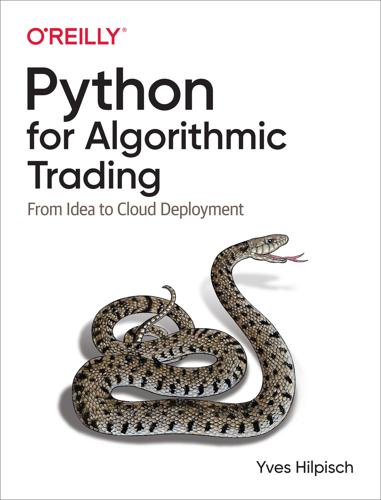
Python for Algorithmic Trading: From Idea to Cloud Deployment
by
Yves Hilpisch
Published 8 Dec 2020
Index A absolute maximum drawdown, Case Study AdaBoost algorithm, Vectorized Backtesting addition (+) operator, Data Types adjusted return appraisal ratio, Algorithmic Trading algorithmic trading (generally)advantages of, Algorithmic Trading basics, Algorithmic Trading-Algorithmic Trading strategies, Trading Strategies-Conclusions alpha seeking strategies, Trading Strategies alpha, defined, Algorithmic Trading anonymous functions, Python Idioms API key, for data sets, Working with Open Data Sources-Working with Open Data Sources Apple, Inc.intraday stock prices, Getting into the Basics reading stock price data from different sources, Reading Financial Data From Different Sources-Reading from Excel and JSON retrieving historical unstructured data about, Retrieving Historical Unstructured Data-Retrieving Historical Unstructured Data app_key, for Eikon Data API, Eikon Data API AQR Capital Management, pandas and the DataFrame Class arithmetic operations, Data Types array programming, Making Use of Vectorization(see also vectorization) automated trading operations, Automating Trading Operations-Strategy Monitoringcapital management, Capital Management-Kelly Criterion for Stocks and Indices configuring Oanda account, Configuring Oanda Account hardware setup, Setting Up the Hardware infrastructure and deployment, Infrastructure and Deployment logging and monitoring, Logging and Monitoring-Logging and Monitoring ML-based trading strategy, ML-Based Trading Strategy-Persisting the Model Object online algorithm, Online Algorithm-Online Algorithm Python environment setup, Setting Up the Python Environment Python scripts for, Python Script-Strategy Monitoring real-time monitoring, Real-Time Monitoring running code, Running the Code uploading code, Uploading the Code visual step-by-step overview, Visual Step-by-Step Overview-Real-Time Monitoring B backtestingbased on simple moving averages, Strategies Based on Simple Moving Averages-Generalizing the Approach Python scripts for classification algorithm backtesting, Classification Algorithm Backtesting Class Python scripts for linear regression backtesting class, Linear Regression Backtesting Class vectorized (see vectorized backtesting) BacktestLongShort class, Long-Short Backtesting Class, Long-Short Backtesting Class bar charts, matplotlib bar plots (see Plotly; streaming bar plot) base class, for event-based backtesting, Backtesting Base Class-Backtesting Base Class, Backtesting Base Class Bash script, Building a Ubuntu and Python Docker Imagefor Droplet set-up, Script to Orchestrate the Droplet Set Up-Script to Orchestrate the Droplet Set Up for Python/Jupyter Lab installation, Installation Script for Python and Jupyter Lab-Installation Script for Python and Jupyter Lab Bitcoin, pandas and the DataFrame Class, Working with Open Data Sources Boolean operationsNumPy, Boolean Operations pandas, Boolean Operations C callback functions, Retrieving Streaming Data capital managementautomated trading operations and, Capital Management-Kelly Criterion for Stocks and Indices Kelly criterion for stocks and indices, Kelly Criterion for Stocks and Indices-Kelly Criterion for Stocks and Indices Kelly criterion in binomial setting, Kelly Criterion in Binomial Setting-Kelly Criterion in Binomial Setting Carter, Graydon, FX Trading with FXCM CFD (contracts for difference)algorithmic trading risks, Logging and Monitoring defined, CFD Trading with Oanda risks of losses, Long-Short Backtesting Class risks of trading on margin, FX Trading with FXCM trading with Oanda, CFD Trading with Oanda-Python Script(see also Oanda) classification problemsmachine learning for, A Simple Classification Problem-A Simple Classification Problem neural networks for, The Simple Classification Problem Revisited-The Simple Classification Problem Revisited Python scripts for vectorized backtesting, Classification Algorithm Backtesting Class .close_all() method, Placing Orders cloud instances, Using Cloud Instances-Script to Orchestrate the Droplet Set Upinstallation script for Python and Jupyter Lab, Installation Script for Python and Jupyter Lab-Installation Script for Python and Jupyter Lab Jupyter Notebook configuration file, Jupyter Notebook Configuration File RSA public/private keys, RSA Public and Private Keys script to orchestrate Droplet set-up, Script to Orchestrate the Droplet Set Up-Script to Orchestrate the Droplet Set Up Cocteau, Jean, Building Classes for Event-Based Backtesting comma separated value (CSV) files (see CSV files) condaas package manager, Conda as a Package Manager-Basic Operations with Conda as virtual environment manager, Conda as a Virtual Environment Manager-Conda as a Virtual Environment Manager basic operations, Basic Operations with Conda-Basic Operations with Conda installing Miniconda, Installing Miniconda-Installing Miniconda conda remove, Basic Operations with Conda configparser module, The Oanda API containers (see Docker containers) contracts for difference (see CFD) control structures, Control Structures CPython, Python for Finance, Python Infrastructure .create_market_buy_order() method, Placing Orders .create_order() method, Placing Market Orders-Placing Market Orders cross-sectional momentum strategies, Strategies Based on Momentum CSV filesinput-output operations, Input-Output Operations-Input-Output Operations reading from a CSV file with pandas, Reading from a CSV File with pandas reading from a CSV file with Python, Reading from a CSV File with Python-Reading from a CSV File with Python .cummax() method, Case Study currency pairs, Logging and Monitoring(see also EUR/USD exchange rate) algorithmic trading risks, Logging and Monitoring D data science stack, Python, NumPy, matplotlib, pandas data snooping, Data Snooping and Overfitting data storageSQLite3 for, Storing Data with SQLite3-Storing Data with SQLite3 storing data efficiently, Storing Financial Data Efficiently-Storing Data with SQLite3 storing DataFrame objects, Storing DataFrame Objects-Storing DataFrame Objects TsTables package for, Using TsTables-Using TsTables data structures, Data Structures-Data Structures DataFrame class, pandas and the DataFrame Class-pandas and the DataFrame Class, Reading from a CSV File with pandas, DataFrame Class-DataFrame Class DataFrame objectscreating, Vectorization with pandas storing, Storing DataFrame Objects-Storing DataFrame Objects dataism, Preface DatetimeIndex() constructor, Plotting with pandas decision tree classification algorithm, Vectorized Backtesting deep learningadding features to analysis, Adding Different Types of Features-Adding Different Types of Features classification problem, The Simple Classification Problem Revisited-The Simple Classification Problem Revisited deep neural networks for predicting market direction, Using Deep Neural Networks to Predict Market Direction-Adding Different Types of Features market movement prediction, Using Deep Learning for Market Movement Prediction-Adding Different Types of Features trading strategies and, Machine and Deep Learning deep neural networks, Using Deep Neural Networks to Predict Market Direction-Adding Different Types of Features delta hedging, Algorithmic Trading dense neural network (DNN), The Simple Classification Problem Revisited, Using Deep Neural Networks to Predict Market Direction dictionary (dict) objects, Reading from a CSV File with Python, Data Structures DigitalOceancloud instances, Using Cloud Instances-Script to Orchestrate the Droplet Set Up droplet setup, Setting Up the Hardware DNN (dense neural network), The Simple Classification Problem Revisited, Using Deep Neural Networks to Predict Market Direction Docker containers, Using Docker Containers-Building a Ubuntu and Python Docker Imagebuilding a Ubuntu and Python Docker image, Building a Ubuntu and Python Docker Image-Building a Ubuntu and Python Docker Image defined, Docker Images and Containers Docker images versus, Docker Images and Containers Docker imagesdefined, Docker Images and Containers Docker containers versus, Docker Images and Containers Dockerfile, Building a Ubuntu and Python Docker Image-Building a Ubuntu and Python Docker Image Domingos, Pedro, Automating Trading Operations Droplet, Using Cloud Instancescosts, Infrastructure and Deployment script to orchestrate set-up, Script to Orchestrate the Droplet Set Up-Script to Orchestrate the Droplet Set Up dynamic hedging, Algorithmic Trading E efficient market hypothesis, Predicting Market Movements with Machine Learning Eikon Data API, Eikon Data API-Retrieving Historical Unstructured Dataretrieving historical structured data, Retrieving Historical Structured Data-Retrieving Historical Structured Data retrieving historical unstructured data, Retrieving Historical Unstructured Data-Retrieving Historical Unstructured Data Euler discretization, Python Versus Pseudo-Code EUR/USD exchange ratebacktesting momentum strategy on minute bars, Backtesting a Momentum Strategy on Minute Bars-Backtesting a Momentum Strategy on Minute Bars evaluation of regression-based strategy, Generalizing the Approach factoring in leverage/margin, Factoring In Leverage and Margin-Factoring In Leverage and Margin gross performance versus deep learning-based strategy, Using Deep Neural Networks to Predict Market Direction-Using Deep Neural Networks to Predict Market Direction, Adding Different Types of Features-Adding Different Types of Features historical ask close prices, Retrieving Historical Data-Retrieving Historical Data historical candles data for, Retrieving Candles Data historical tick data for, Retrieving Tick Data implementing trading strategies in real time, Implementing Trading Strategies in Real Time-Implementing Trading Strategies in Real Time logistic regression-based strategies, Generalizing the Approach placing orders, Placing Orders-Placing Orders predicting, Predicting Index Levels-Predicting Index Levels predicting future returns, Predicting Future Returns-Predicting Future Returns predicting index levels, Predicting Index Levels-Predicting Index Levels retrieving streaming data for, Retrieving Streaming Data retrieving trading account information, Retrieving Account Information-Retrieving Account Information SMA calculation, Getting into the Basics-Generalizing the Approach vectorized backtesting of ML-based trading strategy, Vectorized Backtesting-Vectorized Backtesting vectorized backtesting of regression-based strategy, Vectorized Backtesting of Regression-Based Strategy event-based backtesting, Building Classes for Event-Based Backtesting-Long-Short Backtesting Classadvantages, Building Classes for Event-Based Backtesting base class, Backtesting Base Class-Backtesting Base Class, Backtesting Base Class building classes for, Building Classes for Event-Based Backtesting-Long-Short Backtesting Class long-only backtesting class, Long-Only Backtesting Class-Long-Only Backtesting Class, Long-Only Backtesting Class long-short backtesting class, Long-Short Backtesting Class-Long-Short Backtesting Class, Long-Short Backtesting Class Python scripts for, Backtesting Base Class-Long-Short Backtesting Class Excelexporting financial data to, Exporting to Excel and JSON reading financial data from, Reading from Excel and JSON F featuresadding different types, Adding Different Types of Features-Adding Different Types of Features lags and, Using Logistic Regression to Predict Market Direction financial data, working with, Working with Financial Data-Python Scriptsdata set for examples, The Data Set Eikon Data API, Eikon Data API-Retrieving Historical Unstructured Data exporting to Excel/JSON, Exporting to Excel and JSON open data sources, Working with Open Data Sources-Working with Open Data Sources reading data from different sources, Reading Financial Data From Different Sources-Reading from Excel and JSON reading data from Excel/JSON, Reading from Excel and JSON reading from a CSV file with pandas, Reading from a CSV File with pandas reading from a CSV file with Python, Reading from a CSV File with Python-Reading from a CSV File with Python storing data efficiently, Storing Financial Data Efficiently-Storing Data with SQLite3 .flatten() method, matplotlib foreign exchange trading (see FX trading; FXCM) future returns, predicting, Predicting Future Returns-Predicting Future Returns FX trading, FX Trading with FXCM-References and Further Resources(see also EUR/USD exchange rate) FXCMFX trading, FX Trading with FXCM-References and Further Resources getting started, Getting Started placing orders, Placing Orders-Placing Orders retrieving account information, Account Information retrieving candles data, Retrieving Candles Data-Retrieving Candles Data retrieving data, Retrieving Data-Retrieving Candles Data retrieving historical data, Retrieving Historical Data-Retrieving Historical Data retrieving streaming data, Retrieving Streaming Data retrieving tick data, Retrieving Tick Data-Retrieving Tick Data working with the API, Working with the API-Account Information fxcmpy wrapper packagecallback functions, Retrieving Streaming Data installing, Getting Started tick data retrieval, Retrieving Tick Data fxTrade, CFD Trading with Oanda G GDX (VanEck Vectors Gold Miners ETF)logistic regression-based strategies, Generalizing the Approach mean-reversion strategies, Getting into the Basics-Generalizing the Approach regression-based strategies, Generalizing the Approach generate_sample_data(), Storing Financial Data Efficiently .get_account_summary() method, Retrieving Account Information .get_candles() method, Retrieving Historical Data .get_data() method, Backtesting Base Class, Retrieving Tick Data .get_date_price() method, Backtesting Base Class .get_instruments() method, Looking Up Instruments Available for Trading .get_last_price() method, Retrieving Streaming Data .get_raw_data() method, Retrieving Tick Data get_timeseries() function, Retrieving Historical Structured Data .get_transactions() method, Retrieving Account Information GLD (SPDR Gold Shares)logistic regression-based strategies, Using Logistic Regression to Predict Market Direction-Using Logistic Regression to Predict Market Direction mean-reversion strategies, Getting into the Basics-Generalizing the Approach gold pricemean-reversion strategies, Getting into the Basics-Getting into the Basics momentum strategy and, Getting into the Basics-Getting into the Basics, Generalizing the Approach-Generalizing the Approach Goldman Sachs, Python and Algorithmic Trading, Algorithmic Trading .go_long() method, Long-Short Backtesting Class H half Kelly criterion, Optimal Leverage Harari, Yuval Noah, Preface HDF5 binary storage library, Using TsTables-Using TsTables HDFStore wrapper, Storing DataFrame Objects-Storing DataFrame Objects high frequency trading (HFQ), Algorithmic Trading histograms, matplotlib hit ratio, defined, Vectorized Backtesting I if-elif-else control structure, Python Idioms in-sample fitting, Generalizing the Approach index levels, predicting, Predicting Index Levels-Predicting Index Levels infrastructure (see Python infrastructure) installation script, Python/Jupyter Lab, Installation Script for Python and Jupyter Lab-Installation Script for Python and Jupyter Lab Intel Math Kernel Library, Basic Operations with Conda iterations, Control Structures J JSONexporting financial data to, Exporting to Excel and JSON reading financial data from, Reading from Excel and JSON Jupyter Labinstallation script for, Installation Script for Python and Jupyter Lab-Installation Script for Python and Jupyter Lab RSA public/private keys for, RSA Public and Private Keys tools included, Using Cloud Instances Jupyter Notebook, Jupyter Notebook Configuration File K Kelly criterionin binomial setting, Kelly Criterion in Binomial Setting-Kelly Criterion in Binomial Setting optimal leverage, Optimal Leverage-Optimal Leverage stocks and indices, Kelly Criterion for Stocks and Indices-Kelly Criterion for Stocks and Indices Keras, Using Deep Learning for Market Movement Prediction, Using Deep Neural Networks to Predict Market Direction, Adding Different Types of Features key-value stores, Data Structures keys, public/private, RSA Public and Private Keys L lags, The Basic Idea for Price Prediction, Using Logistic Regression to Predict Market Direction lambda functions, Python Idioms LaTeX, Python Versus Pseudo-Code leveraged trading, risks of, Factoring In Leverage and Margin, FX Trading with FXCM, Optimal Leverage linear regressiongeneralizing the approach, Generalizing the Approach market movement prediction, Using Linear Regression for Market Movement Prediction-Generalizing the Approach predicting future market direction, Predicting Future Market Direction predicting future returns, Predicting Future Returns-Predicting Future Returns predicting index levels, Predicting Index Levels-Predicting Index Levels price prediction based on time series data, The Basic Idea for Price Prediction-The Basic Idea for Price Prediction review of, A Quick Review of Linear Regression scikit-learn and, Linear Regression with scikit-learn vectorized backtesting of regression-based strategy, Vectorized Backtesting of Regression-Based Strategy, Linear Regression Backtesting Class list comprehension, Python Idioms list constructor, Data Structures list objects, Reading from a CSV File with Python, Data Structures, Regular ndarray Object logging, of automated trading operations, Logging and Monitoring-Logging and Monitoring logistic regressiongeneralizing the approach, Generalizing the Approach-Generalizing the Approach market direction prediction, Using Logistic Regression to Predict Market Direction-Using Logistic Regression to Predict Market Direction Python script for vectorized backtesting, Classification Algorithm Backtesting Class long-only backtesting class, Long-Only Backtesting Class-Long-Only Backtesting Class, Long-Only Backtesting Class long-short backtesting class, Long-Short Backtesting Class-Long-Short Backtesting Class, Long-Short Backtesting Class longest drawdown period, Risk Analysis M machine learningclassification problem, A Simple Classification Problem-A Simple Classification Problem linear regression with scikit-learn, Linear Regression with scikit-learn market movement prediction, Using Machine Learning for Market Movement Prediction-Generalizing the Approach ML-based trading strategy, ML-Based Trading Strategy-Persisting the Model Object Python scripts, Linear Regression Backtesting Class trading strategies and, Machine and Deep Learning using logistic regression to predict market direction, Using Logistic Regression to Predict Market Direction-Using Logistic Regression to Predict Market Direction macro hedge funds, algorithmic trading and, Algorithmic Trading __main__ method, Backtesting Base Class margin trading, FX Trading with FXCM market direction prediction, Predicting Future Market Direction market movement predictiondeep learning for, Using Deep Learning for Market Movement Prediction-Adding Different Types of Features deep neural networks for, Using Deep Neural Networks to Predict Market Direction-Adding Different Types of Features linear regression for, Using Linear Regression for Market Movement Prediction-Generalizing the Approach linear regression with scikit-learn, Linear Regression with scikit-learn logistic regression to predict market direction, Using Logistic Regression to Predict Market Direction-Using Logistic Regression to Predict Market Direction machine learning for, Using Machine Learning for Market Movement Prediction-Generalizing the Approach predicting future market direction, Predicting Future Market Direction predicting future returns, Predicting Future Returns-Predicting Future Returns predicting index levels, Predicting Index Levels-Predicting Index Levels price prediction based on time series data, The Basic Idea for Price Prediction-The Basic Idea for Price Prediction vectorized backtesting of regression-based strategy, Vectorized Backtesting of Regression-Based Strategy market orders, placing, Placing Market Orders-Placing Market Orders math module, Data Types mathematical functions, Data Types matplotlib, matplotlib-matplotlib, Plotting with pandas-Plotting with pandas maximum drawdown, Risk Analysis, Case Study McKinney, Wes, pandas and the DataFrame Class mean-reversion strategies, NumPy and Vectorization, Strategies Based on Mean Reversion-Generalizing the Approachbasics, Getting into the Basics-Generalizing the Approach generalizing the approach, Generalizing the Approach Python code with a class for vectorized backtesting, Momentum Backtesting Class Miniconda, Installing Miniconda-Installing Miniconda mkl (Intel Math Kernel Library), Basic Operations with Conda ML-based strategies, ML-Based Trading Strategy-Persisting the Model Objectoptimal leverage, Optimal Leverage-Optimal Leverage persisting the model object, Persisting the Model Object Python script for, Automated Trading Strategy risk analysis, Risk Analysis-Risk Analysis vectorized backtesting, Vectorized Backtesting-Vectorized Backtesting MLPClassifier, The Simple Classification Problem Revisited MLTrader class, Online Algorithm-Online Algorithm momentum strategies, Momentumbacktesting on minute bars, Backtesting a Momentum Strategy on Minute Bars-Backtesting a Momentum Strategy on Minute Bars basics, Getting into the Basics-Getting into the Basics generalizing the approach, Generalizing the Approach Python code with a class for vectorized backtesting, Momentum Backtesting Class Python script for custom streaming class, Python Script Python script for momentum online algorithm, Momentum Online Algorithm vectorized backtesting of, Strategies Based on Momentum-Generalizing the Approach MomentumTrader class, Implementing Trading Strategies in Real Time-Implementing Trading Strategies in Real Time MomVectorBacktester class, Generalizing the Approach monitoringautomated trading operations, Logging and Monitoring-Logging and Monitoring, Real-Time Monitoring Python scripts for strategy monitoring, Strategy Monitoring Monte Carlo simulationsample tick data server, Sample Tick Data Server time series data based on, Python Scripts motives, for trading, Algorithmic Trading MRVectorBacktester class, Generalizing the Approach multi-layer perceptron, The Simple Classification Problem Revisited Musashi, Miyamoto, Python Infrastructure N natural language processing (NLP), Retrieving Historical Unstructured Data ndarray class, Vectorization with NumPy-Vectorization with NumPy ndarray objects, NumPy and Vectorization, ndarray Methods and NumPy Functions-ndarray Methods and NumPy Functionscreating, ndarray Creation linear regression and, A Quick Review of Linear Regression regular, Regular ndarray Object nested structures, Data Structures NLP (natural language processing), Retrieving Historical Unstructured Data np.arange(), ndarray Creation numbers, data typing of, Data Types numerical operations, pandas, Numerical Operations NumPy, NumPy and Vectorization-NumPy and Vectorization, NumPy-Random NumbersBoolean operations, Boolean Operations ndarray creation, ndarray Creation ndarray methods, ndarray Methods and NumPy Functions-ndarray Methods and NumPy Functions random numbers, Random Numbers regular ndarray object, Regular ndarray Object universal functions, ndarray Methods and NumPy Functions vectorization, Vectorization with NumPy-Vectorization with NumPy vectorized operations, Vectorized Operations numpy.random sub-package, Random Numbers NYSE Arca Gold Miners Index, Getting into the Basics O Oandaaccount configuration, Configuring Oanda Account account setup, Setting Up an Account API access, The Oanda API-The Oanda API backtesting momentum strategy on minute bars, Backtesting a Momentum Strategy on Minute Bars-Backtesting a Momentum Strategy on Minute Bars CFD trading, CFD Trading with Oanda-Python Script factoring in leverage/margin with historical data, Factoring In Leverage and Margin-Factoring In Leverage and Margin implementing trading strategies in real time, Implementing Trading Strategies in Real Time-Implementing Trading Strategies in Real Time looking up instruments available for trading, Looking Up Instruments Available for Trading placing market orders, Placing Market Orders-Placing Market Orders Python script for custom streaming class, Python Script retrieving account information, Retrieving Account Information-Retrieving Account Information retrieving historical data, Retrieving Historical Data-Factoring In Leverage and Margin working with streaming data, Working with Streaming Data Oanda v20 RESTful API, The Oanda API, ML-Based Trading Strategy-Persisting the Model Object, Vectorized Backtesting offline algorithmdefined, Signal Generation in Real Time transformation to online algorithm, Online Algorithm OLS (ordinary least squares) regression, matplotlib online algorithmautomated trading operations, Online Algorithm-Online Algorithm defined, Signal Generation in Real Time Python script for momentum online algorithm, Momentum Online Algorithm signal generation in real time, Signal Generation in Real Time-Signal Generation in Real Time transformation of offline algorithm to, Online Algorithm .on_success() method, Implementing Trading Strategies in Real Time, Online Algorithm open data sources, Working with Open Data Sources-Working with Open Data Sources ordinary least squares (OLS) regression, matplotlib out-of-sample evaluation, Generalizing the Approach overfitting, Data Snooping and Overfitting P package manager, conda as, Conda as a Package Manager-Basic Operations with Conda pandas, pandas and the DataFrame Class-pandas and the DataFrame Class, pandas-Input-Output OperationsBoolean operations, Boolean Operations case study, Case Study-Case Study data selection, Data Selection-Data Selection DataFrame class, DataFrame Class-DataFrame Class exporting financial data to Excel/JSON, Exporting to Excel and JSON input-output operations, Input-Output Operations-Input-Output Operations numerical operations, Numerical Operations plotting, Plotting with pandas-Plotting with pandas reading financial data from Excel/JSON, Reading from Excel and JSON reading from a CSV file, Reading from a CSV File with pandas storing DataFrame objects, Storing DataFrame Objects-Storing DataFrame Objects vectorization, Vectorization with pandas-Vectorization with pandas password protection, for Jupyter lab, Jupyter Notebook Configuration File .place_buy_order() method, Backtesting Base Class .place_sell_order() method, Backtesting Base Class Plotlybasics, The Basics multiple real-time streams for, Three Real-Time Streams multiple sub-plots for streams, Three Sub-Plots for Three Streams streaming data as bars, Streaming Data as Bars visualization of streaming data, Visualizing Streaming Data with Plotly-Streaming Data as Bars plotting, with pandas, Plotting with pandas-Plotting with pandas .plot_data() method, Backtesting Base Class polyfit()/polyval() convenience functions, matplotlib price prediction, based on time series data, The Basic Idea for Price Prediction-The Basic Idea for Price Prediction .print_balance() method, Backtesting Base Class .print_net_wealth() method, Backtesting Base Class .print_transactions() method, Retrieving Account Information pseudo-code, Python versus, Python Versus Pseudo-Code publisher-subscriber (PUB-SUB) pattern, Working with Real-Time Data and Sockets Python (generally)advantages of, Python for Algorithmic Trading basics, Python and Algorithmic Trading-References and Further Resources control structures, Control Structures data structures, Data Structures-Data Structures data types, Data Types-Data Types deployment difficulties, Python Infrastructure idioms, Python Idioms-Python Idioms NumPy and vectorization, NumPy and Vectorization-NumPy and Vectorization obstacles to adoption in financial industry, Python for Finance origins, Python for Finance pandas and DataFrame class, pandas and the DataFrame Class-pandas and the DataFrame Class pseudo-code versus, Python Versus Pseudo-Code reading from a CSV file, Reading from a CSV File with Python-Reading from a CSV File with Python Python infrastructure, Python Infrastructure-References and Further Resourcesconda as package manager, Conda as a Package Manager-Basic Operations with Conda conda as virtual environment manager, Conda as a Virtual Environment Manager-Conda as a Virtual Environment Manager Docker containers, Using Docker Containers-Building a Ubuntu and Python Docker Image using cloud instances, Using Cloud Instances-Script to Orchestrate the Droplet Set Up Python scriptsautomated trading operations, Running the Code, Python Script-Strategy Monitoring backtesting base class, Backtesting Base Class custom streaming class that trades a momentum strategy, Python Script linear regression backtesting class, Linear Regression Backtesting Class long-only backtesting class, Long-Only Backtesting Class long-short backtesting class, Long-Short Backtesting Class real-time data handling, Python Scripts-Sample Data Server for Bar Plot sample time series data set, Python Scripts strategy monitoring, Strategy Monitoring uploading for automated trading operations, Uploading the Code vectorized backtesting, Python Scripts-Mean Reversion Backtesting Class Q Quandlpremium data sets, Working with Open Data Sources working with open data sources, Working with Open Data Sources-Working with Open Data Sources R random numbers, Random Numbers random walk hypothesis, Predicting Index Levels range (iterator object), Control Structures read_csv() function, Reading from a CSV File with pandas real-time data, Working with Real-Time Data and Sockets-Sample Data Server for Bar PlotPython script for handling, Python Scripts-Sample Data Server for Bar Plot signal generation in real time, Signal Generation in Real Time-Signal Generation in Real Time tick data client for, Connecting a Simple Tick Data Client tick data server for, Running a Simple Tick Data Server-Running a Simple Tick Data Server, Sample Tick Data Server visualizing streaming data with Plotly, Visualizing Streaming Data with Plotly-Streaming Data as Bars real-time monitoring, Real-Time Monitoring Refinitiv, Eikon Data API relative maximum drawdown, Case Study returns, predicting future, Predicting Future Returns-Predicting Future Returns risk analysis, for ML-based trading strategy, Risk Analysis-Risk Analysis RSA public/private keys, RSA Public and Private Keys .run_mean_reversion_strategy() method, Long-Only Backtesting Class, Long-Short Backtesting Class .run_simulation() method, Kelly Criterion in Binomial Setting S S&P 500, Algorithmic Trading-Algorithmic Tradinglogistic regression-based strategies and, Generalizing the Approach momentum strategies, Getting into the Basics passive long position in, Kelly Criterion for Stocks and Indices-Kelly Criterion for Stocks and Indices scatter objects, Three Real-Time Streams scientific stack, NumPy and Vectorization, Python, NumPy, matplotlib, pandas scikit-learn, Linear Regression with scikit-learn ScikitBacktester class, Generalizing the Approach-Generalizing the Approach SciPy package project, NumPy and Vectorization seaborn library, matplotlib-matplotlib simple moving averages (SMAs), pandas and the DataFrame Class, Simple Moving Averagestrading strategies based on, Strategies Based on Simple Moving Averages-Generalizing the Approach visualization with price ticks, Three Real-Time Streams .simulate_value() method, Running a Simple Tick Data Server Singer, Paul, CFD Trading with Oanda sockets, real-time data and, Working with Real-Time Data and Sockets-Sample Data Server for Bar Plot sorting list objects, Data Structures SQLite3, Storing Data with SQLite3-Storing Data with SQLite3 SSL certificate, RSA Public and Private Keys storage (see data storage) streaming bar plots, Streaming Data as Bars, Sample Data Server for Bar Plot streaming dataOanda and, Working with Streaming Data visualization with Plotly, Visualizing Streaming Data with Plotly-Streaming Data as Bars string objects (str), Data Types-Data Types Swiss Franc event, CFD Trading with Oanda systematic macro hedge funds, Algorithmic Trading T TensorFlow, Using Deep Learning for Market Movement Prediction, Using Deep Neural Networks to Predict Market Direction Thomas, Rob, Working with Financial Data Thorp, Edward, Capital Management tick data client, Connecting a Simple Tick Data Client tick data server, Running a Simple Tick Data Server-Running a Simple Tick Data Server, Sample Tick Data Server time series data setspandas and vectorization, Vectorization with pandas price prediction based on, The Basic Idea for Price Prediction-The Basic Idea for Price Prediction Python script for generating sample set, Python Scripts SQLite3 for storage of, Storing Data with SQLite3-Storing Data with SQLite3 TsTables for storing, Using TsTables-Using TsTables time series momentum strategies, Strategies Based on Momentum(see also momentum strategies) .to_hdf() method, Storing DataFrame Objects tpqoa wrapper package, The Oanda API, Working with Streaming Data trading platforms, factors influencing choice of, CFD Trading with Oanda trading strategies, Trading Strategies-Conclusions(see also specific strategies) implementing in real time with Oanda, Implementing Trading Strategies in Real Time-Implementing Trading Strategies in Real Time machine learning/deep learning, Machine and Deep Learning mean-reversion, NumPy and Vectorization momentum, Momentum simple moving averages, Simple Moving Averages trading, motives for, Algorithmic Trading transaction costs, Long-Only Backtesting Class, Vectorized Backtesting TsTables package, Using TsTables-Using TsTables tuple objects, Data Structures U Ubuntu, Building a Ubuntu and Python Docker Image-Building a Ubuntu and Python Docker Image universal functions, NumPy, ndarray Methods and NumPy Functions V v20 wrapper package, The Oanda API, ML-Based Trading Strategy-Persisting the Model Object, Vectorized Backtesting value-at-risk (VAR), Risk Analysis-Risk Analysis vectorization, NumPy and Vectorization, Strategies Based on Mean Reversion-Generalizing the Approach vectorized backtestingdata snooping and overfitting, Data Snooping and Overfitting-Conclusions ML-based trading strategy, Vectorized Backtesting-Vectorized Backtesting momentum-based trading strategies, Strategies Based on Momentum-Generalizing the Approach potential shortcomings, Building Classes for Event-Based Backtesting Python code with a class for vectorized backtesting of mean-reversion trading strategies, Momentum Backtesting Class Python scripts for, Python Scripts-Mean Reversion Backtesting Class, Linear Regression Backtesting Class regression-based strategy, Vectorized Backtesting of Regression-Based Strategy trading strategies based on simple moving averages, Strategies Based on Simple Moving Averages-Generalizing the Approach vectorization with NumPy, Vectorization with NumPy-Vectorization with NumPy vectorization with pandas, Vectorization with pandas-Vectorization with pandas vectorized operations, Vectorized Operations virtual environment management, Conda as a Virtual Environment Manager-Conda as a Virtual Environment Manager W while loops, Control Structures Z ZeroMQ, Working with Real-Time Data and Sockets About the Author Dr.
…
Index A absolute maximum drawdown, Case Study AdaBoost algorithm, Vectorized Backtesting addition (+) operator, Data Types adjusted return appraisal ratio, Algorithmic Trading algorithmic trading (generally)advantages of, Algorithmic Trading basics, Algorithmic Trading-Algorithmic Trading strategies, Trading Strategies-Conclusions alpha seeking strategies, Trading Strategies alpha, defined, Algorithmic Trading anonymous functions, Python Idioms API key, for data sets, Working with Open Data Sources-Working with Open Data Sources Apple, Inc.intraday stock prices, Getting into the Basics reading stock price data from different sources, Reading Financial Data From Different Sources-Reading from Excel and JSON retrieving historical unstructured data about, Retrieving Historical Unstructured Data-Retrieving Historical Unstructured Data app_key, for Eikon Data API, Eikon Data API AQR Capital Management, pandas and the DataFrame Class arithmetic operations, Data Types array programming, Making Use of Vectorization(see also vectorization) automated trading operations, Automating Trading Operations-Strategy Monitoringcapital management, Capital Management-Kelly Criterion for Stocks and Indices configuring Oanda account, Configuring Oanda Account hardware setup, Setting Up the Hardware infrastructure and deployment, Infrastructure and Deployment logging and monitoring, Logging and Monitoring-Logging and Monitoring ML-based trading strategy, ML-Based Trading Strategy-Persisting the Model Object online algorithm, Online Algorithm-Online Algorithm Python environment setup, Setting Up the Python Environment Python scripts for, Python Script-Strategy Monitoring real-time monitoring, Real-Time Monitoring running code, Running the Code uploading code, Uploading the Code visual step-by-step overview, Visual Step-by-Step Overview-Real-Time Monitoring B backtestingbased on simple moving averages, Strategies Based on Simple Moving Averages-Generalizing the Approach Python scripts for classification algorithm backtesting, Classification Algorithm Backtesting Class Python scripts for linear regression backtesting class, Linear Regression Backtesting Class vectorized (see vectorized backtesting) BacktestLongShort class, Long-Short Backtesting Class, Long-Short Backtesting Class bar charts, matplotlib bar plots (see Plotly; streaming bar plot) base class, for event-based backtesting, Backtesting Base Class-Backtesting Base Class, Backtesting Base Class Bash script, Building a Ubuntu and Python Docker Imagefor Droplet set-up, Script to Orchestrate the Droplet Set Up-Script to Orchestrate the Droplet Set Up for Python/Jupyter Lab installation, Installation Script for Python and Jupyter Lab-Installation Script for Python and Jupyter Lab Bitcoin, pandas and the DataFrame Class, Working with Open Data Sources Boolean operationsNumPy, Boolean Operations pandas, Boolean Operations C callback functions, Retrieving Streaming Data capital managementautomated trading operations and, Capital Management-Kelly Criterion for Stocks and Indices Kelly criterion for stocks and indices, Kelly Criterion for Stocks and Indices-Kelly Criterion for Stocks and Indices Kelly criterion in binomial setting, Kelly Criterion in Binomial Setting-Kelly Criterion in Binomial Setting Carter, Graydon, FX Trading with FXCM CFD (contracts for difference)algorithmic trading risks, Logging and Monitoring defined, CFD Trading with Oanda risks of losses, Long-Short Backtesting Class risks of trading on margin, FX Trading with FXCM trading with Oanda, CFD Trading with Oanda-Python Script(see also Oanda) classification problemsmachine learning for, A Simple Classification Problem-A Simple Classification Problem neural networks for, The Simple Classification Problem Revisited-The Simple Classification Problem Revisited Python scripts for vectorized backtesting, Classification Algorithm Backtesting Class .close_all() method, Placing Orders cloud instances, Using Cloud Instances-Script to Orchestrate the Droplet Set Upinstallation script for Python and Jupyter Lab, Installation Script for Python and Jupyter Lab-Installation Script for Python and Jupyter Lab Jupyter Notebook configuration file, Jupyter Notebook Configuration File RSA public/private keys, RSA Public and Private Keys script to orchestrate Droplet set-up, Script to Orchestrate the Droplet Set Up-Script to Orchestrate the Droplet Set Up Cocteau, Jean, Building Classes for Event-Based Backtesting comma separated value (CSV) files (see CSV files) condaas package manager, Conda as a Package Manager-Basic Operations with Conda as virtual environment manager, Conda as a Virtual Environment Manager-Conda as a Virtual Environment Manager basic operations, Basic Operations with Conda-Basic Operations with Conda installing Miniconda, Installing Miniconda-Installing Miniconda conda remove, Basic Operations with Conda configparser module, The Oanda API containers (see Docker containers) contracts for difference (see CFD) control structures, Control Structures CPython, Python for Finance, Python Infrastructure .create_market_buy_order() method, Placing Orders .create_order() method, Placing Market Orders-Placing Market Orders cross-sectional momentum strategies, Strategies Based on Momentum CSV filesinput-output operations, Input-Output Operations-Input-Output Operations reading from a CSV file with pandas, Reading from a CSV File with pandas reading from a CSV file with Python, Reading from a CSV File with Python-Reading from a CSV File with Python .cummax() method, Case Study currency pairs, Logging and Monitoring(see also EUR/USD exchange rate) algorithmic trading risks, Logging and Monitoring D data science stack, Python, NumPy, matplotlib, pandas data snooping, Data Snooping and Overfitting data storageSQLite3 for, Storing Data with SQLite3-Storing Data with SQLite3 storing data efficiently, Storing Financial Data Efficiently-Storing Data with SQLite3 storing DataFrame objects, Storing DataFrame Objects-Storing DataFrame Objects TsTables package for, Using TsTables-Using TsTables data structures, Data Structures-Data Structures DataFrame class, pandas and the DataFrame Class-pandas and the DataFrame Class, Reading from a CSV File with pandas, DataFrame Class-DataFrame Class DataFrame objectscreating, Vectorization with pandas storing, Storing DataFrame Objects-Storing DataFrame Objects dataism, Preface DatetimeIndex() constructor, Plotting with pandas decision tree classification algorithm, Vectorized Backtesting deep learningadding features to analysis, Adding Different Types of Features-Adding Different Types of Features classification problem, The Simple Classification Problem Revisited-The Simple Classification Problem Revisited deep neural networks for predicting market direction, Using Deep Neural Networks to Predict Market Direction-Adding Different Types of Features market movement prediction, Using Deep Learning for Market Movement Prediction-Adding Different Types of Features trading strategies and, Machine and Deep Learning deep neural networks, Using Deep Neural Networks to Predict Market Direction-Adding Different Types of Features delta hedging, Algorithmic Trading dense neural network (DNN), The Simple Classification Problem Revisited, Using Deep Neural Networks to Predict Market Direction dictionary (dict) objects, Reading from a CSV File with Python, Data Structures DigitalOceancloud instances, Using Cloud Instances-Script to Orchestrate the Droplet Set Up droplet setup, Setting Up the Hardware DNN (dense neural network), The Simple Classification Problem Revisited, Using Deep Neural Networks to Predict Market Direction Docker containers, Using Docker Containers-Building a Ubuntu and Python Docker Imagebuilding a Ubuntu and Python Docker image, Building a Ubuntu and Python Docker Image-Building a Ubuntu and Python Docker Image defined, Docker Images and Containers Docker images versus, Docker Images and Containers Docker imagesdefined, Docker Images and Containers Docker containers versus, Docker Images and Containers Dockerfile, Building a Ubuntu and Python Docker Image-Building a Ubuntu and Python Docker Image Domingos, Pedro, Automating Trading Operations Droplet, Using Cloud Instancescosts, Infrastructure and Deployment script to orchestrate set-up, Script to Orchestrate the Droplet Set Up-Script to Orchestrate the Droplet Set Up dynamic hedging, Algorithmic Trading E efficient market hypothesis, Predicting Market Movements with Machine Learning Eikon Data API, Eikon Data API-Retrieving Historical Unstructured Dataretrieving historical structured data, Retrieving Historical Structured Data-Retrieving Historical Structured Data retrieving historical unstructured data, Retrieving Historical Unstructured Data-Retrieving Historical Unstructured Data Euler discretization, Python Versus Pseudo-Code EUR/USD exchange ratebacktesting momentum strategy on minute bars, Backtesting a Momentum Strategy on Minute Bars-Backtesting a Momentum Strategy on Minute Bars evaluation of regression-based strategy, Generalizing the Approach factoring in leverage/margin, Factoring In Leverage and Margin-Factoring In Leverage and Margin gross performance versus deep learning-based strategy, Using Deep Neural Networks to Predict Market Direction-Using Deep Neural Networks to Predict Market Direction, Adding Different Types of Features-Adding Different Types of Features historical ask close prices, Retrieving Historical Data-Retrieving Historical Data historical candles data for, Retrieving Candles Data historical tick data for, Retrieving Tick Data implementing trading strategies in real time, Implementing Trading Strategies in Real Time-Implementing Trading Strategies in Real Time logistic regression-based strategies, Generalizing the Approach placing orders, Placing Orders-Placing Orders predicting, Predicting Index Levels-Predicting Index Levels predicting future returns, Predicting Future Returns-Predicting Future Returns predicting index levels, Predicting Index Levels-Predicting Index Levels retrieving streaming data for, Retrieving Streaming Data retrieving trading account information, Retrieving Account Information-Retrieving Account Information SMA calculation, Getting into the Basics-Generalizing the Approach vectorized backtesting of ML-based trading strategy, Vectorized Backtesting-Vectorized Backtesting vectorized backtesting of regression-based strategy, Vectorized Backtesting of Regression-Based Strategy event-based backtesting, Building Classes for Event-Based Backtesting-Long-Short Backtesting Classadvantages, Building Classes for Event-Based Backtesting base class, Backtesting Base Class-Backtesting Base Class, Backtesting Base Class building classes for, Building Classes for Event-Based Backtesting-Long-Short Backtesting Class long-only backtesting class, Long-Only Backtesting Class-Long-Only Backtesting Class, Long-Only Backtesting Class long-short backtesting class, Long-Short Backtesting Class-Long-Short Backtesting Class, Long-Short Backtesting Class Python scripts for, Backtesting Base Class-Long-Short Backtesting Class Excelexporting financial data to, Exporting to Excel and JSON reading financial data from, Reading from Excel and JSON F featuresadding different types, Adding Different Types of Features-Adding Different Types of Features lags and, Using Logistic Regression to Predict Market Direction financial data, working with, Working with Financial Data-Python Scriptsdata set for examples, The Data Set Eikon Data API, Eikon Data API-Retrieving Historical Unstructured Data exporting to Excel/JSON, Exporting to Excel and JSON open data sources, Working with Open Data Sources-Working with Open Data Sources reading data from different sources, Reading Financial Data From Different Sources-Reading from Excel and JSON reading data from Excel/JSON, Reading from Excel and JSON reading from a CSV file with pandas, Reading from a CSV File with pandas reading from a CSV file with Python, Reading from a CSV File with Python-Reading from a CSV File with Python storing data efficiently, Storing Financial Data Efficiently-Storing Data with SQLite3 .flatten() method, matplotlib foreign exchange trading (see FX trading; FXCM) future returns, predicting, Predicting Future Returns-Predicting Future Returns FX trading, FX Trading with FXCM-References and Further Resources(see also EUR/USD exchange rate) FXCMFX trading, FX Trading with FXCM-References and Further Resources getting started, Getting Started placing orders, Placing Orders-Placing Orders retrieving account information, Account Information retrieving candles data, Retrieving Candles Data-Retrieving Candles Data retrieving data, Retrieving Data-Retrieving Candles Data retrieving historical data, Retrieving Historical Data-Retrieving Historical Data retrieving streaming data, Retrieving Streaming Data retrieving tick data, Retrieving Tick Data-Retrieving Tick Data working with the API, Working with the API-Account Information fxcmpy wrapper packagecallback functions, Retrieving Streaming Data installing, Getting Started tick data retrieval, Retrieving Tick Data fxTrade, CFD Trading with Oanda G GDX (VanEck Vectors Gold Miners ETF)logistic regression-based strategies, Generalizing the Approach mean-reversion strategies, Getting into the Basics-Generalizing the Approach regression-based strategies, Generalizing the Approach generate_sample_data(), Storing Financial Data Efficiently .get_account_summary() method, Retrieving Account Information .get_candles() method, Retrieving Historical Data .get_data() method, Backtesting Base Class, Retrieving Tick Data .get_date_price() method, Backtesting Base Class .get_instruments() method, Looking Up Instruments Available for Trading .get_last_price() method, Retrieving Streaming Data .get_raw_data() method, Retrieving Tick Data get_timeseries() function, Retrieving Historical Structured Data .get_transactions() method, Retrieving Account Information GLD (SPDR Gold Shares)logistic regression-based strategies, Using Logistic Regression to Predict Market Direction-Using Logistic Regression to Predict Market Direction mean-reversion strategies, Getting into the Basics-Generalizing the Approach gold pricemean-reversion strategies, Getting into the Basics-Getting into the Basics momentum strategy and, Getting into the Basics-Getting into the Basics, Generalizing the Approach-Generalizing the Approach Goldman Sachs, Python and Algorithmic Trading, Algorithmic Trading .go_long() method, Long-Short Backtesting Class H half Kelly criterion, Optimal Leverage Harari, Yuval Noah, Preface HDF5 binary storage library, Using TsTables-Using TsTables HDFStore wrapper, Storing DataFrame Objects-Storing DataFrame Objects high frequency trading (HFQ), Algorithmic Trading histograms, matplotlib hit ratio, defined, Vectorized Backtesting I if-elif-else control structure, Python Idioms in-sample fitting, Generalizing the Approach index levels, predicting, Predicting Index Levels-Predicting Index Levels infrastructure (see Python infrastructure) installation script, Python/Jupyter Lab, Installation Script for Python and Jupyter Lab-Installation Script for Python and Jupyter Lab Intel Math Kernel Library, Basic Operations with Conda iterations, Control Structures J JSONexporting financial data to, Exporting to Excel and JSON reading financial data from, Reading from Excel and JSON Jupyter Labinstallation script for, Installation Script for Python and Jupyter Lab-Installation Script for Python and Jupyter Lab RSA public/private keys for, RSA Public and Private Keys tools included, Using Cloud Instances Jupyter Notebook, Jupyter Notebook Configuration File K Kelly criterionin binomial setting, Kelly Criterion in Binomial Setting-Kelly Criterion in Binomial Setting optimal leverage, Optimal Leverage-Optimal Leverage stocks and indices, Kelly Criterion for Stocks and Indices-Kelly Criterion for Stocks and Indices Keras, Using Deep Learning for Market Movement Prediction, Using Deep Neural Networks to Predict Market Direction, Adding Different Types of Features key-value stores, Data Structures keys, public/private, RSA Public and Private Keys L lags, The Basic Idea for Price Prediction, Using Logistic Regression to Predict Market Direction lambda functions, Python Idioms LaTeX, Python Versus Pseudo-Code leveraged trading, risks of, Factoring In Leverage and Margin, FX Trading with FXCM, Optimal Leverage linear regressiongeneralizing the approach, Generalizing the Approach market movement prediction, Using Linear Regression for Market Movement Prediction-Generalizing the Approach predicting future market direction, Predicting Future Market Direction predicting future returns, Predicting Future Returns-Predicting Future Returns predicting index levels, Predicting Index Levels-Predicting Index Levels price prediction based on time series data, The Basic Idea for Price Prediction-The Basic Idea for Price Prediction review of, A Quick Review of Linear Regression scikit-learn and, Linear Regression with scikit-learn vectorized backtesting of regression-based strategy, Vectorized Backtesting of Regression-Based Strategy, Linear Regression Backtesting Class list comprehension, Python Idioms list constructor, Data Structures list objects, Reading from a CSV File with Python, Data Structures, Regular ndarray Object logging, of automated trading operations, Logging and Monitoring-Logging and Monitoring logistic regressiongeneralizing the approach, Generalizing the Approach-Generalizing the Approach market direction prediction, Using Logistic Regression to Predict Market Direction-Using Logistic Regression to Predict Market Direction Python script for vectorized backtesting, Classification Algorithm Backtesting Class long-only backtesting class, Long-Only Backtesting Class-Long-Only Backtesting Class, Long-Only Backtesting Class long-short backtesting class, Long-Short Backtesting Class-Long-Short Backtesting Class, Long-Short Backtesting Class longest drawdown period, Risk Analysis M machine learningclassification problem, A Simple Classification Problem-A Simple Classification Problem linear regression with scikit-learn, Linear Regression with scikit-learn market movement prediction, Using Machine Learning for Market Movement Prediction-Generalizing the Approach ML-based trading strategy, ML-Based Trading Strategy-Persisting the Model Object Python scripts, Linear Regression Backtesting Class trading strategies and, Machine and Deep Learning using logistic regression to predict market direction, Using Logistic Regression to Predict Market Direction-Using Logistic Regression to Predict Market Direction macro hedge funds, algorithmic trading and, Algorithmic Trading __main__ method, Backtesting Base Class margin trading, FX Trading with FXCM market direction prediction, Predicting Future Market Direction market movement predictiondeep learning for, Using Deep Learning for Market Movement Prediction-Adding Different Types of Features deep neural networks for, Using Deep Neural Networks to Predict Market Direction-Adding Different Types of Features linear regression for, Using Linear Regression for Market Movement Prediction-Generalizing the Approach linear regression with scikit-learn, Linear Regression with scikit-learn logistic regression to predict market direction, Using Logistic Regression to Predict Market Direction-Using Logistic Regression to Predict Market Direction machine learning for, Using Machine Learning for Market Movement Prediction-Generalizing the Approach predicting future market direction, Predicting Future Market Direction predicting future returns, Predicting Future Returns-Predicting Future Returns predicting index levels, Predicting Index Levels-Predicting Index Levels price prediction based on time series data, The Basic Idea for Price Prediction-The Basic Idea for Price Prediction vectorized backtesting of regression-based strategy, Vectorized Backtesting of Regression-Based Strategy market orders, placing, Placing Market Orders-Placing Market Orders math module, Data Types mathematical functions, Data Types matplotlib, matplotlib-matplotlib, Plotting with pandas-Plotting with pandas maximum drawdown, Risk Analysis, Case Study McKinney, Wes, pandas and the DataFrame Class mean-reversion strategies, NumPy and Vectorization, Strategies Based on Mean Reversion-Generalizing the Approachbasics, Getting into the Basics-Generalizing the Approach generalizing the approach, Generalizing the Approach Python code with a class for vectorized backtesting, Momentum Backtesting Class Miniconda, Installing Miniconda-Installing Miniconda mkl (Intel Math Kernel Library), Basic Operations with Conda ML-based strategies, ML-Based Trading Strategy-Persisting the Model Objectoptimal leverage, Optimal Leverage-Optimal Leverage persisting the model object, Persisting the Model Object Python script for, Automated Trading Strategy risk analysis, Risk Analysis-Risk Analysis vectorized backtesting, Vectorized Backtesting-Vectorized Backtesting MLPClassifier, The Simple Classification Problem Revisited MLTrader class, Online Algorithm-Online Algorithm momentum strategies, Momentumbacktesting on minute bars, Backtesting a Momentum Strategy on Minute Bars-Backtesting a Momentum Strategy on Minute Bars basics, Getting into the Basics-Getting into the Basics generalizing the approach, Generalizing the Approach Python code with a class for vectorized backtesting, Momentum Backtesting Class Python script for custom streaming class, Python Script Python script for momentum online algorithm, Momentum Online Algorithm vectorized backtesting of, Strategies Based on Momentum-Generalizing the Approach MomentumTrader class, Implementing Trading Strategies in Real Time-Implementing Trading Strategies in Real Time MomVectorBacktester class, Generalizing the Approach monitoringautomated trading operations, Logging and Monitoring-Logging and Monitoring, Real-Time Monitoring Python scripts for strategy monitoring, Strategy Monitoring Monte Carlo simulationsample tick data server, Sample Tick Data Server time series data based on, Python Scripts motives, for trading, Algorithmic Trading MRVectorBacktester class, Generalizing the Approach multi-layer perceptron, The Simple Classification Problem Revisited Musashi, Miyamoto, Python Infrastructure N natural language processing (NLP), Retrieving Historical Unstructured Data ndarray class, Vectorization with NumPy-Vectorization with NumPy ndarray objects, NumPy and Vectorization, ndarray Methods and NumPy Functions-ndarray Methods and NumPy Functionscreating, ndarray Creation linear regression and, A Quick Review of Linear Regression regular, Regular ndarray Object nested structures, Data Structures NLP (natural language processing), Retrieving Historical Unstructured Data np.arange(), ndarray Creation numbers, data typing of, Data Types numerical operations, pandas, Numerical Operations NumPy, NumPy and Vectorization-NumPy and Vectorization, NumPy-Random NumbersBoolean operations, Boolean Operations ndarray creation, ndarray Creation ndarray methods, ndarray Methods and NumPy Functions-ndarray Methods and NumPy Functions random numbers, Random Numbers regular ndarray object, Regular ndarray Object universal functions, ndarray Methods and NumPy Functions vectorization, Vectorization with NumPy-Vectorization with NumPy vectorized operations, Vectorized Operations numpy.random sub-package, Random Numbers NYSE Arca Gold Miners Index, Getting into the Basics O Oandaaccount configuration, Configuring Oanda Account account setup, Setting Up an Account API access, The Oanda API-The Oanda API backtesting momentum strategy on minute bars, Backtesting a Momentum Strategy on Minute Bars-Backtesting a Momentum Strategy on Minute Bars CFD trading, CFD Trading with Oanda-Python Script factoring in leverage/margin with historical data, Factoring In Leverage and Margin-Factoring In Leverage and Margin implementing trading strategies in real time, Implementing Trading Strategies in Real Time-Implementing Trading Strategies in Real Time looking up instruments available for trading, Looking Up Instruments Available for Trading placing market orders, Placing Market Orders-Placing Market Orders Python script for custom streaming class, Python Script retrieving account information, Retrieving Account Information-Retrieving Account Information retrieving historical data, Retrieving Historical Data-Factoring In Leverage and Margin working with streaming data, Working with Streaming Data Oanda v20 RESTful API, The Oanda API, ML-Based Trading Strategy-Persisting the Model Object, Vectorized Backtesting offline algorithmdefined, Signal Generation in Real Time transformation to online algorithm, Online Algorithm OLS (ordinary least squares) regression, matplotlib online algorithmautomated trading operations, Online Algorithm-Online Algorithm defined, Signal Generation in Real Time Python script for momentum online algorithm, Momentum Online Algorithm signal generation in real time, Signal Generation in Real Time-Signal Generation in Real Time transformation of offline algorithm to, Online Algorithm .on_success() method, Implementing Trading Strategies in Real Time, Online Algorithm open data sources, Working with Open Data Sources-Working with Open Data Sources ordinary least squares (OLS) regression, matplotlib out-of-sample evaluation, Generalizing the Approach overfitting, Data Snooping and Overfitting P package manager, conda as, Conda as a Package Manager-Basic Operations with Conda pandas, pandas and the DataFrame Class-pandas and the DataFrame Class, pandas-Input-Output OperationsBoolean operations, Boolean Operations case study, Case Study-Case Study data selection, Data Selection-Data Selection DataFrame class, DataFrame Class-DataFrame Class exporting financial data to Excel/JSON, Exporting to Excel and JSON input-output operations, Input-Output Operations-Input-Output Operations numerical operations, Numerical Operations plotting, Plotting with pandas-Plotting with pandas reading financial data from Excel/JSON, Reading from Excel and JSON reading from a CSV file, Reading from a CSV File with pandas storing DataFrame objects, Storing DataFrame Objects-Storing DataFrame Objects vectorization, Vectorization with pandas-Vectorization with pandas password protection, for Jupyter lab, Jupyter Notebook Configuration File .place_buy_order() method, Backtesting Base Class .place_sell_order() method, Backtesting Base Class Plotlybasics, The Basics multiple real-time streams for, Three Real-Time Streams multiple sub-plots for streams, Three Sub-Plots for Three Streams streaming data as bars, Streaming Data as Bars visualization of streaming data, Visualizing Streaming Data with Plotly-Streaming Data as Bars plotting, with pandas, Plotting with pandas-Plotting with pandas .plot_data() method, Backtesting Base Class polyfit()/polyval() convenience functions, matplotlib price prediction, based on time series data, The Basic Idea for Price Prediction-The Basic Idea for Price Prediction .print_balance() method, Backtesting Base Class .print_net_wealth() method, Backtesting Base Class .print_transactions() method, Retrieving Account Information pseudo-code, Python versus, Python Versus Pseudo-Code publisher-subscriber (PUB-SUB) pattern, Working with Real-Time Data and Sockets Python (generally)advantages of, Python for Algorithmic Trading basics, Python and Algorithmic Trading-References and Further Resources control structures, Control Structures data structures, Data Structures-Data Structures data types, Data Types-Data Types deployment difficulties, Python Infrastructure idioms, Python Idioms-Python Idioms NumPy and vectorization, NumPy and Vectorization-NumPy and Vectorization obstacles to adoption in financial industry, Python for Finance origins, Python for Finance pandas and DataFrame class, pandas and the DataFrame Class-pandas and the DataFrame Class pseudo-code versus, Python Versus Pseudo-Code reading from a CSV file, Reading from a CSV File with Python-Reading from a CSV File with Python Python infrastructure, Python Infrastructure-References and Further Resourcesconda as package manager, Conda as a Package Manager-Basic Operations with Conda conda as virtual environment manager, Conda as a Virtual Environment Manager-Conda as a Virtual Environment Manager Docker containers, Using Docker Containers-Building a Ubuntu and Python Docker Image using cloud instances, Using Cloud Instances-Script to Orchestrate the Droplet Set Up Python scriptsautomated trading operations, Running the Code, Python Script-Strategy Monitoring backtesting base class, Backtesting Base Class custom streaming class that trades a momentum strategy, Python Script linear regression backtesting class, Linear Regression Backtesting Class long-only backtesting class, Long-Only Backtesting Class long-short backtesting class, Long-Short Backtesting Class real-time data handling, Python Scripts-Sample Data Server for Bar Plot sample time series data set, Python Scripts strategy monitoring, Strategy Monitoring uploading for automated trading operations, Uploading the Code vectorized backtesting, Python Scripts-Mean Reversion Backtesting Class Q Quandlpremium data sets, Working with Open Data Sources working with open data sources, Working with Open Data Sources-Working with Open Data Sources R random numbers, Random Numbers random walk hypothesis, Predicting Index Levels range (iterator object), Control Structures read_csv() function, Reading from a CSV File with pandas real-time data, Working with Real-Time Data and Sockets-Sample Data Server for Bar PlotPython script for handling, Python Scripts-Sample Data Server for Bar Plot signal generation in real time, Signal Generation in Real Time-Signal Generation in Real Time tick data client for, Connecting a Simple Tick Data Client tick data server for, Running a Simple Tick Data Server-Running a Simple Tick Data Server, Sample Tick Data Server visualizing streaming data with Plotly, Visualizing Streaming Data with Plotly-Streaming Data as Bars real-time monitoring, Real-Time Monitoring Refinitiv, Eikon Data API relative maximum drawdown, Case Study returns, predicting future, Predicting Future Returns-Predicting Future Returns risk analysis, for ML-based trading strategy, Risk Analysis-Risk Analysis RSA public/private keys, RSA Public and Private Keys .run_mean_reversion_strategy() method, Long-Only Backtesting Class, Long-Short Backtesting Class .run_simulation() method, Kelly Criterion in Binomial Setting S S&P 500, Algorithmic Trading-Algorithmic Tradinglogistic regression-based strategies and, Generalizing the Approach momentum strategies, Getting into the Basics passive long position in, Kelly Criterion for Stocks and Indices-Kelly Criterion for Stocks and Indices scatter objects, Three Real-Time Streams scientific stack, NumPy and Vectorization, Python, NumPy, matplotlib, pandas scikit-learn, Linear Regression with scikit-learn ScikitBacktester class, Generalizing the Approach-Generalizing the Approach SciPy package project, NumPy and Vectorization seaborn library, matplotlib-matplotlib simple moving averages (SMAs), pandas and the DataFrame Class, Simple Moving Averagestrading strategies based on, Strategies Based on Simple Moving Averages-Generalizing the Approach visualization with price ticks, Three Real-Time Streams .simulate_value() method, Running a Simple Tick Data Server Singer, Paul, CFD Trading with Oanda sockets, real-time data and, Working with Real-Time Data and Sockets-Sample Data Server for Bar Plot sorting list objects, Data Structures SQLite3, Storing Data with SQLite3-Storing Data with SQLite3 SSL certificate, RSA Public and Private Keys storage (see data storage) streaming bar plots, Streaming Data as Bars, Sample Data Server for Bar Plot streaming dataOanda and, Working with Streaming Data visualization with Plotly, Visualizing Streaming Data with Plotly-Streaming Data as Bars string objects (str), Data Types-Data Types Swiss Franc event, CFD Trading with Oanda systematic macro hedge funds, Algorithmic Trading T TensorFlow, Using Deep Learning for Market Movement Prediction, Using Deep Neural Networks to Predict Market Direction Thomas, Rob, Working with Financial Data Thorp, Edward, Capital Management tick data client, Connecting a Simple Tick Data Client tick data server, Running a Simple Tick Data Server-Running a Simple Tick Data Server, Sample Tick Data Server time series data setspandas and vectorization, Vectorization with pandas price prediction based on, The Basic Idea for Price Prediction-The Basic Idea for Price Prediction Python script for generating sample set, Python Scripts SQLite3 for storage of, Storing Data with SQLite3-Storing Data with SQLite3 TsTables for storing, Using TsTables-Using TsTables time series momentum strategies, Strategies Based on Momentum(see also momentum strategies) .to_hdf() method, Storing DataFrame Objects tpqoa wrapper package, The Oanda API, Working with Streaming Data trading platforms, factors influencing choice of, CFD Trading with Oanda trading strategies, Trading Strategies-Conclusions(see also specific strategies) implementing in real time with Oanda, Implementing Trading Strategies in Real Time-Implementing Trading Strategies in Real Time machine learning/deep learning, Machine and Deep Learning mean-reversion, NumPy and Vectorization momentum, Momentum simple moving averages, Simple Moving Averages trading, motives for, Algorithmic Trading transaction costs, Long-Only Backtesting Class, Vectorized Backtesting TsTables package, Using TsTables-Using TsTables tuple objects, Data Structures U Ubuntu, Building a Ubuntu and Python Docker Image-Building a Ubuntu and Python Docker Image universal functions, NumPy, ndarray Methods and NumPy Functions V v20 wrapper package, The Oanda API, ML-Based Trading Strategy-Persisting the Model Object, Vectorized Backtesting value-at-risk (VAR), Risk Analysis-Risk Analysis vectorization, NumPy and Vectorization, Strategies Based on Mean Reversion-Generalizing the Approach vectorized backtestingdata snooping and overfitting, Data Snooping and Overfitting-Conclusions ML-based trading strategy, Vectorized Backtesting-Vectorized Backtesting momentum-based trading strategies, Strategies Based on Momentum-Generalizing the Approach potential shortcomings, Building Classes for Event-Based Backtesting Python code with a class for vectorized backtesting of mean-reversion trading strategies, Momentum Backtesting Class Python scripts for, Python Scripts-Mean Reversion Backtesting Class, Linear Regression Backtesting Class regression-based strategy, Vectorized Backtesting of Regression-Based Strategy trading strategies based on simple moving averages, Strategies Based on Simple Moving Averages-Generalizing the Approach vectorization with NumPy, Vectorization with NumPy-Vectorization with NumPy vectorization with pandas, Vectorization with pandas-Vectorization with pandas vectorized operations, Vectorized Operations virtual environment management, Conda as a Virtual Environment Manager-Conda as a Virtual Environment Manager W while loops, Control Structures Z ZeroMQ, Working with Real-Time Data and Sockets About the Author Dr.
…
Index A absolute maximum drawdown, Case Study AdaBoost algorithm, Vectorized Backtesting addition (+) operator, Data Types adjusted return appraisal ratio, Algorithmic Trading algorithmic trading (generally)advantages of, Algorithmic Trading basics, Algorithmic Trading-Algorithmic Trading strategies, Trading Strategies-Conclusions alpha seeking strategies, Trading Strategies alpha, defined, Algorithmic Trading anonymous functions, Python Idioms API key, for data sets, Working with Open Data Sources-Working with Open Data Sources Apple, Inc.intraday stock prices, Getting into the Basics reading stock price data from different sources, Reading Financial Data From Different Sources-Reading from Excel and JSON retrieving historical unstructured data about, Retrieving Historical Unstructured Data-Retrieving Historical Unstructured Data app_key, for Eikon Data API, Eikon Data API AQR Capital Management, pandas and the DataFrame Class arithmetic operations, Data Types array programming, Making Use of Vectorization(see also vectorization) automated trading operations, Automating Trading Operations-Strategy Monitoringcapital management, Capital Management-Kelly Criterion for Stocks and Indices configuring Oanda account, Configuring Oanda Account hardware setup, Setting Up the Hardware infrastructure and deployment, Infrastructure and Deployment logging and monitoring, Logging and Monitoring-Logging and Monitoring ML-based trading strategy, ML-Based Trading Strategy-Persisting the Model Object online algorithm, Online Algorithm-Online Algorithm Python environment setup, Setting Up the Python Environment Python scripts for, Python Script-Strategy Monitoring real-time monitoring, Real-Time Monitoring running code, Running the Code uploading code, Uploading the Code visual step-by-step overview, Visual Step-by-Step Overview-Real-Time Monitoring B backtestingbased on simple moving averages, Strategies Based on Simple Moving Averages-Generalizing the Approach Python scripts for classification algorithm backtesting, Classification Algorithm Backtesting Class Python scripts for linear regression backtesting class, Linear Regression Backtesting Class vectorized (see vectorized backtesting) BacktestLongShort class, Long-Short Backtesting Class, Long-Short Backtesting Class bar charts, matplotlib bar plots (see Plotly; streaming bar plot) base class, for event-based backtesting, Backtesting Base Class-Backtesting Base Class, Backtesting Base Class Bash script, Building a Ubuntu and Python Docker Imagefor Droplet set-up, Script to Orchestrate the Droplet Set Up-Script to Orchestrate the Droplet Set Up for Python/Jupyter Lab installation, Installation Script for Python and Jupyter Lab-Installation Script for Python and Jupyter Lab Bitcoin, pandas and the DataFrame Class, Working with Open Data Sources Boolean operationsNumPy, Boolean Operations pandas, Boolean Operations C callback functions, Retrieving Streaming Data capital managementautomated trading operations and, Capital Management-Kelly Criterion for Stocks and Indices Kelly criterion for stocks and indices, Kelly Criterion for Stocks and Indices-Kelly Criterion for Stocks and Indices Kelly criterion in binomial setting, Kelly Criterion in Binomial Setting-Kelly Criterion in Binomial Setting Carter, Graydon, FX Trading with FXCM CFD (contracts for difference)algorithmic trading risks, Logging and Monitoring defined, CFD Trading with Oanda risks of losses, Long-Short Backtesting Class risks of trading on margin, FX Trading with FXCM trading with Oanda, CFD Trading with Oanda-Python Script(see also Oanda) classification problemsmachine learning for, A Simple Classification Problem-A Simple Classification Problem neural networks for, The Simple Classification Problem Revisited-The Simple Classification Problem Revisited Python scripts for vectorized backtesting, Classification Algorithm Backtesting Class .close_all() method, Placing Orders cloud instances, Using Cloud Instances-Script to Orchestrate the Droplet Set Upinstallation script for Python and Jupyter Lab, Installation Script for Python and Jupyter Lab-Installation Script for Python and Jupyter Lab Jupyter Notebook configuration file, Jupyter Notebook Configuration File RSA public/private keys, RSA Public and Private Keys script to orchestrate Droplet set-up, Script to Orchestrate the Droplet Set Up-Script to Orchestrate the Droplet Set Up Cocteau, Jean, Building Classes for Event-Based Backtesting comma separated value (CSV) files (see CSV files) condaas package manager, Conda as a Package Manager-Basic Operations with Conda as virtual environment manager, Conda as a Virtual Environment Manager-Conda as a Virtual Environment Manager basic operations, Basic Operations with Conda-Basic Operations with Conda installing Miniconda, Installing Miniconda-Installing Miniconda conda remove, Basic Operations with Conda configparser module, The Oanda API containers (see Docker containers) contracts for difference (see CFD) control structures, Control Structures CPython, Python for Finance, Python Infrastructure .create_market_buy_order() method, Placing Orders .create_order() method, Placing Market Orders-Placing Market Orders cross-sectional momentum strategies, Strategies Based on Momentum CSV filesinput-output operations, Input-Output Operations-Input-Output Operations reading from a CSV file with pandas, Reading from a CSV File with pandas reading from a CSV file with Python, Reading from a CSV File with Python-Reading from a CSV File with Python .cummax() method, Case Study currency pairs, Logging and Monitoring(see also EUR/USD exchange rate) algorithmic trading risks, Logging and Monitoring D data science stack, Python, NumPy, matplotlib, pandas data snooping, Data Snooping and Overfitting data storageSQLite3 for, Storing Data with SQLite3-Storing Data with SQLite3 storing data efficiently, Storing Financial Data Efficiently-Storing Data with SQLite3 storing DataFrame objects, Storing DataFrame Objects-Storing DataFrame Objects TsTables package for, Using TsTables-Using TsTables data structures, Data Structures-Data Structures DataFrame class, pandas and the DataFrame Class-pandas and the DataFrame Class, Reading from a CSV File with pandas, DataFrame Class-DataFrame Class DataFrame objectscreating, Vectorization with pandas storing, Storing DataFrame Objects-Storing DataFrame Objects dataism, Preface DatetimeIndex() constructor, Plotting with pandas decision tree classification algorithm, Vectorized Backtesting deep learningadding features to analysis, Adding Different Types of Features-Adding Different Types of Features classification problem, The Simple Classification Problem Revisited-The Simple Classification Problem Revisited deep neural networks for predicting market direction, Using Deep Neural Networks to Predict Market Direction-Adding Different Types of Features market movement prediction, Using Deep Learning for Market Movement Prediction-Adding Different Types of Features trading strategies and, Machine and Deep Learning deep neural networks, Using Deep Neural Networks to Predict Market Direction-Adding Different Types of Features delta hedging, Algorithmic Trading dense neural network (DNN), The Simple Classification Problem Revisited, Using Deep Neural Networks to Predict Market Direction dictionary (dict) objects, Reading from a CSV File with Python, Data Structures DigitalOceancloud instances, Using Cloud Instances-Script to Orchestrate the Droplet Set Up droplet setup, Setting Up the Hardware DNN (dense neural network), The Simple Classification Problem Revisited, Using Deep Neural Networks to Predict Market Direction Docker containers, Using Docker Containers-Building a Ubuntu and Python Docker Imagebuilding a Ubuntu and Python Docker image, Building a Ubuntu and Python Docker Image-Building a Ubuntu and Python Docker Image defined, Docker Images and Containers Docker images versus, Docker Images and Containers Docker imagesdefined, Docker Images and Containers Docker containers versus, Docker Images and Containers Dockerfile, Building a Ubuntu and Python Docker Image-Building a Ubuntu and Python Docker Image Domingos, Pedro, Automating Trading Operations Droplet, Using Cloud Instancescosts, Infrastructure and Deployment script to orchestrate set-up, Script to Orchestrate the Droplet Set Up-Script to Orchestrate the Droplet Set Up dynamic hedging, Algorithmic Trading E efficient market hypothesis, Predicting Market Movements with Machine Learning Eikon Data API, Eikon Data API-Retrieving Historical Unstructured Dataretrieving historical structured data, Retrieving Historical Structured Data-Retrieving Historical Structured Data retrieving historical unstructured data, Retrieving Historical Unstructured Data-Retrieving Historical Unstructured Data Euler discretization, Python Versus Pseudo-Code EUR/USD exchange ratebacktesting momentum strategy on minute bars, Backtesting a Momentum Strategy on Minute Bars-Backtesting a Momentum Strategy on Minute Bars evaluation of regression-based strategy, Generalizing the Approach factoring in leverage/margin, Factoring In Leverage and Margin-Factoring In Leverage and Margin gross performance versus deep learning-based strategy, Using Deep Neural Networks to Predict Market Direction-Using Deep Neural Networks to Predict Market Direction, Adding Different Types of Features-Adding Different Types of Features historical ask close prices, Retrieving Historical Data-Retrieving Historical Data historical candles data for, Retrieving Candles Data historical tick data for, Retrieving Tick Data implementing trading strategies in real time, Implementing Trading Strategies in Real Time-Implementing Trading Strategies in Real Time logistic regression-based strategies, Generalizing the Approach placing orders, Placing Orders-Placing Orders predicting, Predicting Index Levels-Predicting Index Levels predicting future returns, Predicting Future Returns-Predicting Future Returns predicting index levels, Predicting Index Levels-Predicting Index Levels retrieving streaming data for, Retrieving Streaming Data retrieving trading account information, Retrieving Account Information-Retrieving Account Information SMA calculation, Getting into the Basics-Generalizing the Approach vectorized backtesting of ML-based trading strategy, Vectorized Backtesting-Vectorized Backtesting vectorized backtesting of regression-based strategy, Vectorized Backtesting of Regression-Based Strategy event-based backtesting, Building Classes for Event-Based Backtesting-Long-Short Backtesting Classadvantages, Building Classes for Event-Based Backtesting base class, Backtesting Base Class-Backtesting Base Class, Backtesting Base Class building classes for, Building Classes for Event-Based Backtesting-Long-Short Backtesting Class long-only backtesting class, Long-Only Backtesting Class-Long-Only Backtesting Class, Long-Only Backtesting Class long-short backtesting class, Long-Short Backtesting Class-Long-Short Backtesting Class, Long-Short Backtesting Class Python scripts for, Backtesting Base Class-Long-Short Backtesting Class Excelexporting financial data to, Exporting to Excel and JSON reading financial data from, Reading from Excel and JSON F featuresadding different types, Adding Different Types of Features-Adding Different Types of Features lags and, Using Logistic Regression to Predict Market Direction financial data, working with, Working with Financial Data-Python Scriptsdata set for examples, The Data Set Eikon Data API, Eikon Data API-Retrieving Historical Unstructured Data exporting to Excel/JSON, Exporting to Excel and JSON open data sources, Working with Open Data Sources-Working with Open Data Sources reading data from different sources, Reading Financial Data From Different Sources-Reading from Excel and JSON reading data from Excel/JSON, Reading from Excel and JSON reading from a CSV file with pandas, Reading from a CSV File with pandas reading from a CSV file with Python, Reading from a CSV File with Python-Reading from a CSV File with Python storing data efficiently, Storing Financial Data Efficiently-Storing Data with SQLite3 .flatten() method, matplotlib foreign exchange trading (see FX trading; FXCM) future returns, predicting, Predicting Future Returns-Predicting Future Returns FX trading, FX Trading with FXCM-References and Further Resources(see also EUR/USD exchange rate) FXCMFX trading, FX Trading with FXCM-References and Further Resources getting started, Getting Started placing orders, Placing Orders-Placing Orders retrieving account information, Account Information retrieving candles data, Retrieving Candles Data-Retrieving Candles Data retrieving data, Retrieving Data-Retrieving Candles Data retrieving historical data, Retrieving Historical Data-Retrieving Historical Data retrieving streaming data, Retrieving Streaming Data retrieving tick data, Retrieving Tick Data-Retrieving Tick Data working with the API, Working with the API-Account Information fxcmpy wrapper packagecallback functions, Retrieving Streaming Data installing, Getting Started tick data retrieval, Retrieving Tick Data fxTrade, CFD Trading with Oanda G GDX (VanEck Vectors Gold Miners ETF)logistic regression-based strategies, Generalizing the Approach mean-reversion strategies, Getting into the Basics-Generalizing the Approach regression-based strategies, Generalizing the Approach generate_sample_data(), Storing Financial Data Efficiently .get_account_summary() method, Retrieving Account Information .get_candles() method, Retrieving Historical Data .get_data() method, Backtesting Base Class, Retrieving Tick Data .get_date_price() method, Backtesting Base Class .get_instruments() method, Looking Up Instruments Available for Trading .get_last_price() method, Retrieving Streaming Data .get_raw_data() method, Retrieving Tick Data get_timeseries() function, Retrieving Historical Structured Data .get_transactions() method, Retrieving Account Information GLD (SPDR Gold Shares)logistic regression-based strategies, Using Logistic Regression to Predict Market Direction-Using Logistic Regression to Predict Market Direction mean-reversion strategies, Getting into the Basics-Generalizing the Approach gold pricemean-reversion strategies, Getting into the Basics-Getting into the Basics momentum strategy and, Getting into the Basics-Getting into the Basics, Generalizing the Approach-Generalizing the Approach Goldman Sachs, Python and Algorithmic Trading, Algorithmic Trading .go_long() method, Long-Short Backtesting Class H half Kelly criterion, Optimal Leverage Harari, Yuval Noah, Preface HDF5 binary storage library, Using TsTables-Using TsTables HDFStore wrapper, Storing DataFrame Objects-Storing DataFrame Objects high frequency trading (HFQ), Algorithmic Trading histograms, matplotlib hit ratio, defined, Vectorized Backtesting I if-elif-else control structure, Python Idioms in-sample fitting, Generalizing the Approach index levels, predicting, Predicting Index Levels-Predicting Index Levels infrastructure (see Python infrastructure) installation script, Python/Jupyter Lab, Installation Script for Python and Jupyter Lab-Installation Script for Python and Jupyter Lab Intel Math Kernel Library, Basic Operations with Conda iterations, Control Structures J JSONexporting financial data to, Exporting to Excel and JSON reading financial data from, Reading from Excel and JSON Jupyter Labinstallation script for, Installation Script for Python and Jupyter Lab-Installation Script for Python and Jupyter Lab RSA public/private keys for, RSA Public and Private Keys tools included, Using Cloud Instances Jupyter Notebook, Jupyter Notebook Configuration File K Kelly criterionin binomial setting, Kelly Criterion in Binomial Setting-Kelly Criterion in Binomial Setting optimal leverage, Optimal Leverage-Optimal Leverage stocks and indices, Kelly Criterion for Stocks and Indices-Kelly Criterion for Stocks and Indices Keras, Using Deep Learning for Market Movement Prediction, Using Deep Neural Networks to Predict Market Direction, Adding Different Types of Features key-value stores, Data Structures keys, public/private, RSA Public and Private Keys L lags, The Basic Idea for Price Prediction, Using Logistic Regression to Predict Market Direction lambda functions, Python Idioms LaTeX, Python Versus Pseudo-Code leveraged trading, risks of, Factoring In Leverage and Margin, FX Trading with FXCM, Optimal Leverage linear regressiongeneralizing the approach, Generalizing the Approach market movement prediction, Using Linear Regression for Market Movement Prediction-Generalizing the Approach predicting future market direction, Predicting Future Market Direction predicting future returns, Predicting Future Returns-Predicting Future Returns predicting index levels, Predicting Index Levels-Predicting Index Levels price prediction based on time series data, The Basic Idea for Price Prediction-The Basic Idea for Price Prediction review of, A Quick Review of Linear Regression scikit-learn and, Linear Regression with scikit-learn vectorized backtesting of regression-based strategy, Vectorized Backtesting of Regression-Based Strategy, Linear Regression Backtesting Class list comprehension, Python Idioms list constructor, Data Structures list objects, Reading from a CSV File with Python, Data Structures, Regular ndarray Object logging, of automated trading operations, Logging and Monitoring-Logging and Monitoring logistic regressiongeneralizing the approach, Generalizing the Approach-Generalizing the Approach market direction prediction, Using Logistic Regression to Predict Market Direction-Using Logistic Regression to Predict Market Direction Python script for vectorized backtesting, Classification Algorithm Backtesting Class long-only backtesting class, Long-Only Backtesting Class-Long-Only Backtesting Class, Long-Only Backtesting Class long-short backtesting class, Long-Short Backtesting Class-Long-Short Backtesting Class, Long-Short Backtesting Class longest drawdown period, Risk Analysis M machine learningclassification problem, A Simple Classification Problem-A Simple Classification Problem linear regression with scikit-learn, Linear Regression with scikit-learn market movement prediction, Using Machine Learning for Market Movement Prediction-Generalizing the Approach ML-based trading strategy, ML-Based Trading Strategy-Persisting the Model Object Python scripts, Linear Regression Backtesting Class trading strategies and, Machine and Deep Learning using logistic regression to predict market direction, Using Logistic Regression to Predict Market Direction-Using Logistic Regression to Predict Market Direction macro hedge funds, algorithmic trading and, Algorithmic Trading __main__ method, Backtesting Base Class margin trading, FX Trading with FXCM market direction prediction, Predicting Future Market Direction market movement predictiondeep learning for, Using Deep Learning for Market Movement Prediction-Adding Different Types of Features deep neural networks for, Using Deep Neural Networks to Predict Market Direction-Adding Different Types of Features linear regression for, Using Linear Regression for Market Movement Prediction-Generalizing the Approach linear regression with scikit-learn, Linear Regression with scikit-learn logistic regression to predict market direction, Using Logistic Regression to Predict Market Direction-Using Logistic Regression to Predict Market Direction machine learning for, Using Machine Learning for Market Movement Prediction-Generalizing the Approach predicting future market direction, Predicting Future Market Direction predicting future returns, Predicting Future Returns-Predicting Future Returns predicting index levels, Predicting Index Levels-Predicting Index Levels price prediction based on time series data, The Basic Idea for Price Prediction-The Basic Idea for Price Prediction vectorized backtesting of regression-based strategy, Vectorized Backtesting of Regression-Based Strategy market orders, placing, Placing Market Orders-Placing Market Orders math module, Data Types mathematical functions, Data Types matplotlib, matplotlib-matplotlib, Plotting with pandas-Plotting with pandas maximum drawdown, Risk Analysis, Case Study McKinney, Wes, pandas and the DataFrame Class mean-reversion strategies, NumPy and Vectorization, Strategies Based on Mean Reversion-Generalizing the Approachbasics, Getting into the Basics-Generalizing the Approach generalizing the approach, Generalizing the Approach Python code with a class for vectorized backtesting, Momentum Backtesting Class Miniconda, Installing Miniconda-Installing Miniconda mkl (Intel Math Kernel Library), Basic Operations with Conda ML-based strategies, ML-Based Trading Strategy-Persisting the Model Objectoptimal leverage, Optimal Leverage-Optimal Leverage persisting the model object, Persisting the Model Object Python script for, Automated Trading Strategy risk analysis, Risk Analysis-Risk Analysis vectorized backtesting, Vectorized Backtesting-Vectorized Backtesting MLPClassifier, The Simple Classification Problem Revisited MLTrader class, Online Algorithm-Online Algorithm momentum strategies, Momentumbacktesting on minute bars, Backtesting a Momentum Strategy on Minute Bars-Backtesting a Momentum Strategy on Minute Bars basics, Getting into the Basics-Getting into the Basics generalizing the approach, Generalizing the Approach Python code with a class for vectorized backtesting, Momentum Backtesting Class Python script for custom streaming class, Python Script Python script for momentum online algorithm, Momentum Online Algorithm vectorized backtesting of, Strategies Based on Momentum-Generalizing the Approach MomentumTrader class, Implementing Trading Strategies in Real Time-Implementing Trading Strategies in Real Time MomVectorBacktester class, Generalizing the Approach monitoringautomated trading operations, Logging and Monitoring-Logging and Monitoring, Real-Time Monitoring Python scripts for strategy monitoring, Strategy Monitoring Monte Carlo simulationsample tick data server, Sample Tick Data Server time series data based on, Python Scripts motives, for trading, Algorithmic Trading MRVectorBacktester class, Generalizing the Approach multi-layer perceptron, The Simple Classification Problem Revisited Musashi, Miyamoto, Python Infrastructure N natural language processing (NLP), Retrieving Historical Unstructured Data ndarray class, Vectorization with NumPy-Vectorization with NumPy ndarray objects, NumPy and Vectorization, ndarray Methods and NumPy Functions-ndarray Methods and NumPy Functionscreating, ndarray Creation linear regression and, A Quick Review of Linear Regression regular, Regular ndarray Object nested structures, Data Structures NLP (natural language processing), Retrieving Historical Unstructured Data np.arange(), ndarray Creation numbers, data typing of, Data Types numerical operations, pandas, Numerical Operations NumPy, NumPy and Vectorization-NumPy and Vectorization, NumPy-Random NumbersBoolean operations, Boolean Operations ndarray creation, ndarray Creation ndarray methods, ndarray Methods and NumPy Functions-ndarray Methods and NumPy Functions random numbers, Random Numbers regular ndarray object, Regular ndarray Object universal functions, ndarray Methods and NumPy Functions vectorization, Vectorization with NumPy-Vectorization with NumPy vectorized operations, Vectorized Operations numpy.random sub-package, Random Numbers NYSE Arca Gold Miners Index, Getting into the Basics O Oandaaccount configuration, Configuring Oanda Account account setup, Setting Up an Account API access, The Oanda API-The Oanda API backtesting momentum strategy on minute bars, Backtesting a Momentum Strategy on Minute Bars-Backtesting a Momentum Strategy on Minute Bars CFD trading, CFD Trading with Oanda-Python Script factoring in leverage/margin with historical data, Factoring In Leverage and Margin-Factoring In Leverage and Margin implementing trading strategies in real time, Implementing Trading Strategies in Real Time-Implementing Trading Strategies in Real Time looking up instruments available for trading, Looking Up Instruments Available for Trading placing market orders, Placing Market Orders-Placing Market Orders Python script for custom streaming class, Python Script retrieving account information, Retrieving Account Information-Retrieving Account Information retrieving historical data, Retrieving Historical Data-Factoring In Leverage and Margin working with streaming data, Working with Streaming Data Oanda v20 RESTful API, The Oanda API, ML-Based Trading Strategy-Persisting the Model Object, Vectorized Backtesting offline algorithmdefined, Signal Generation in Real Time transformation to online algorithm, Online Algorithm OLS (ordinary least squares) regression, matplotlib online algorithmautomated trading operations, Online Algorithm-Online Algorithm defined, Signal Generation in Real Time Python script for momentum online algorithm, Momentum Online Algorithm signal generation in real time, Signal Generation in Real Time-Signal Generation in Real Time transformation of offline algorithm to, Online Algorithm .on_success() method, Implementing Trading Strategies in Real Time, Online Algorithm open data sources, Working with Open Data Sources-Working with Open Data Sources ordinary least squares (OLS) regression, matplotlib out-of-sample evaluation, Generalizing the Approach overfitting, Data Snooping and Overfitting P package manager, conda as, Conda as a Package Manager-Basic Operations with Conda pandas, pandas and the DataFrame Class-pandas and the DataFrame Class, pandas-Input-Output OperationsBoolean operations, Boolean Operations case study, Case Study-Case Study data selection, Data Selection-Data Selection DataFrame class, DataFrame Class-DataFrame Class exporting financial data to Excel/JSON, Exporting to Excel and JSON input-output operations, Input-Output Operations-Input-Output Operations numerical operations, Numerical Operations plotting, Plotting with pandas-Plotting with pandas reading financial data from Excel/JSON, Reading from Excel and JSON reading from a CSV file, Reading from a CSV File with pandas storing DataFrame objects, Storing DataFrame Objects-Storing DataFrame Objects vectorization, Vectorization with pandas-Vectorization with pandas password protection, for Jupyter lab, Jupyter Notebook Configuration File .place_buy_order() method, Backtesting Base Class .place_sell_order() method, Backtesting Base Class Plotlybasics, The Basics multiple real-time streams for, Three Real-Time Streams multiple sub-plots for streams, Three Sub-Plots for Three Streams streaming data as bars, Streaming Data as Bars visualization of streaming data, Visualizing Streaming Data with Plotly-Streaming Data as Bars plotting, with pandas, Plotting with pandas-Plotting with pandas .plot_data() method, Backtesting Base Class polyfit()/polyval() convenience functions, matplotlib price prediction, based on time series data, The Basic Idea for Price Prediction-The Basic Idea for Price Prediction .print_balance() method, Backtesting Base Class .print_net_wealth() method, Backtesting Base Class .print_transactions() method, Retrieving Account Information pseudo-code, Python versus, Python Versus Pseudo-Code publisher-subscriber (PUB-SUB) pattern, Working with Real-Time Data and Sockets Python (generally)advantages of, Python for Algorithmic Trading basics, Python and Algorithmic Trading-References and Further Resources control structures, Control Structures data structures, Data Structures-Data Structures data types, Data Types-Data Types deployment difficulties, Python Infrastructure idioms, Python Idioms-Python Idioms NumPy and vectorization, NumPy and Vectorization-NumPy and Vectorization obstacles to adoption in financial industry, Python for Finance origins, Python for Finance pandas and DataFrame class, pandas and the DataFrame Class-pandas and the DataFrame Class pseudo-code versus, Python Versus Pseudo-Code reading from a CSV file, Reading from a CSV File with Python-Reading from a CSV File with Python Python infrastructure, Python Infrastructure-References and Further Resourcesconda as package manager, Conda as a Package Manager-Basic Operations with Conda conda as virtual environment manager, Conda as a Virtual Environment Manager-Conda as a Virtual Environment Manager Docker containers, Using Docker Containers-Building a Ubuntu and Python Docker Image using cloud instances, Using Cloud Instances-Script to Orchestrate the Droplet Set Up Python scriptsautomated trading operations, Running the Code, Python Script-Strategy Monitoring backtesting base class, Backtesting Base Class custom streaming class that trades a momentum strategy, Python Script linear regression backtesting class, Linear Regression Backtesting Class long-only backtesting class, Long-Only Backtesting Class long-short backtesting class, Long-Short Backtesting Class real-time data handling, Python Scripts-Sample Data Server for Bar Plot sample time series data set, Python Scripts strategy monitoring, Strategy Monitoring uploading for automated trading operations, Uploading the Code vectorized backtesting, Python Scripts-Mean Reversion Backtesting Class Q Quandlpremium data sets, Working with Open Data Sources working with open data sources, Working with Open Data Sources-Working with Open Data Sources R random numbers, Random Numbers random walk hypothesis, Predicting Index Levels range (iterator object), Control Structures read_csv() function, Reading from a CSV File with pandas real-time data, Working with Real-Time Data and Sockets-Sample Data Server for Bar PlotPython script for handling, Python Scripts-Sample Data Server for Bar Plot signal generation in real time, Signal Generation in Real Time-Signal Generation in Real Time tick data client for, Connecting a Simple Tick Data Client tick data server for, Running a Simple Tick Data Server-Running a Simple Tick Data Server, Sample Tick Data Server visualizing streaming data with Plotly, Visualizing Streaming Data with Plotly-Streaming Data as Bars real-time monitoring, Real-Time Monitoring Refinitiv, Eikon Data API relative maximum drawdown, Case Study returns, predicting future, Predicting Future Returns-Predicting Future Returns risk analysis, for ML-based trading strategy, Risk Analysis-Risk Analysis RSA public/private keys, RSA Public and Private Keys .run_mean_reversion_strategy() method, Long-Only Backtesting Class, Long-Short Backtesting Class .run_simulation() method, Kelly Criterion in Binomial Setting S S&P 500, Algorithmic Trading-Algorithmic Tradinglogistic regression-based strategies and, Generalizing the Approach momentum strategies, Getting into the Basics passive long position in, Kelly Criterion for Stocks and Indices-Kelly Criterion for Stocks and Indices scatter objects, Three Real-Time Streams scientific stack, NumPy and Vectorization, Python, NumPy, matplotlib, pandas scikit-learn, Linear Regression with scikit-learn ScikitBacktester class, Generalizing the Approach-Generalizing the Approach SciPy package project, NumPy and Vectorization seaborn library, matplotlib-matplotlib simple moving averages (SMAs), pandas and the DataFrame Class, Simple Moving Averagestrading strategies based on, Strategies Based on Simple Moving Averages-Generalizing the Approach visualization with price ticks, Three Real-Time Streams .simulate_value() method, Running a Simple Tick Data Server Singer, Paul, CFD Trading with Oanda sockets, real-time data and, Working with Real-Time Data and Sockets-Sample Data Server for Bar Plot sorting list objects, Data Structures SQLite3, Storing Data with SQLite3-Storing Data with SQLite3 SSL certificate, RSA Public and Private Keys storage (see data storage) streaming bar plots, Streaming Data as Bars, Sample Data Server for Bar Plot streaming dataOanda and, Working with Streaming Data visualization with Plotly, Visualizing Streaming Data with Plotly-Streaming Data as Bars string objects (str), Data Types-Data Types Swiss Franc event, CFD Trading with Oanda systematic macro hedge funds, Algorithmic Trading T TensorFlow, Using Deep Learning for Market Movement Prediction, Using Deep Neural Networks to Predict Market Direction Thomas, Rob, Working with Financial Data Thorp, Edward, Capital Management tick data client, Connecting a Simple Tick Data Client tick data server, Running a Simple Tick Data Server-Running a Simple Tick Data Server, Sample Tick Data Server time series data setspandas and vectorization, Vectorization with pandas price prediction based on, The Basic Idea for Price Prediction-The Basic Idea for Price Prediction Python script for generating sample set, Python Scripts SQLite3 for storage of, Storing Data with SQLite3-Storing Data with SQLite3 TsTables for storing, Using TsTables-Using TsTables time series momentum strategies, Strategies Based on Momentum(see also momentum strategies) .to_hdf() method, Storing DataFrame Objects tpqoa wrapper package, The Oanda API, Working with Streaming Data trading platforms, factors influencing choice of, CFD Trading with Oanda trading strategies, Trading Strategies-Conclusions(see also specific strategies) implementing in real time with Oanda, Implementing Trading Strategies in Real Time-Implementing Trading Strategies in Real Time machine learning/deep learning, Machine and Deep Learning mean-reversion, NumPy and Vectorization momentum, Momentum simple moving averages, Simple Moving Averages trading, motives for, Algorithmic Trading transaction costs, Long-Only Backtesting Class, Vectorized Backtesting TsTables package, Using TsTables-Using TsTables tuple objects, Data Structures U Ubuntu, Building a Ubuntu and Python Docker Image-Building a Ubuntu and Python Docker Image universal functions, NumPy, ndarray Methods and NumPy Functions V v20 wrapper package, The Oanda API, ML-Based Trading Strategy-Persisting the Model Object, Vectorized Backtesting value-at-risk (VAR), Risk Analysis-Risk Analysis vectorization, NumPy and Vectorization, Strategies Based on Mean Reversion-Generalizing the Approach vectorized backtestingdata snooping and overfitting, Data Snooping and Overfitting-Conclusions ML-based trading strategy, Vectorized Backtesting-Vectorized Backtesting momentum-based trading strategies, Strategies Based on Momentum-Generalizing the Approach potential shortcomings, Building Classes for Event-Based Backtesting Python code with a class for vectorized backtesting of mean-reversion trading strategies, Momentum Backtesting Class Python scripts for, Python Scripts-Mean Reversion Backtesting Class, Linear Regression Backtesting Class regression-based strategy, Vectorized Backtesting of Regression-Based Strategy trading strategies based on simple moving averages, Strategies Based on Simple Moving Averages-Generalizing the Approach vectorization with NumPy, Vectorization with NumPy-Vectorization with NumPy vectorization with pandas, Vectorization with pandas-Vectorization with pandas vectorized operations, Vectorized Operations virtual environment management, Conda as a Virtual Environment Manager-Conda as a Virtual Environment Manager W while loops, Control Structures Z ZeroMQ, Working with Real-Time Data and Sockets About the Author Dr.
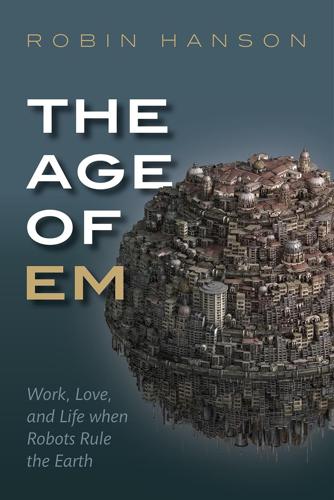
The Age of Em: Work, Love and Life When Robots Rule the Earth
by
Robin Hanson
Published 31 Mar 2016
Combinatorial versions can even allow a small number of users to manage billions of consistent interconnected estimates, so that updates on some topics automatically improve the accuracy of estimates of quite different topics (Sun et al. 2012). Head-to-head comparisons between prediction markets and other forecasting mechanisms, given similar resources on the same questions, find prediction markets to be consistently either about as accurate, or substantially more accurate than, other mechanisms. Compared with other mechanisms, prediction markets are more robust to situations where no one knows anything useful, where most invited participants are ignorant or fools, and where some participants are willing to lie or lose money to distort resulting estimates. Prediction markets can tell a firm how likely a project is to make its deadline, how likely a supplier is to deliver as promised, or how many units of a particular product will be sold in a particular region.
…
As better auction mechanisms could plausibly deliver great value, and as the relevant research community has well-established ways to develop better mechanisms, it seems safe to guess that such mechanisms will be available if desired. Prediction Markets I have also been personally involved in developing the new institution of “prediction markets.” These are variations on speculative and betting markets that can encourage and facilitate the aggregation of information on important outcomes. By subsidizing trading on particular questions of interest, one can induce people able to learn about those questions to self-select into improving visible consensus estimates (Hanson 2003). Prediction markets give clear precise continually updated estimates that are consistent across many topics.
…
To avoid this problem, an independent (and hard to hurt) judge might also join the speaker and listener in the safe, with the power to declare the safe “void” if they heard sufficient indications of such threats. To reduce the cost of using these safes, an em might offer to let a wider audience make unlimited bets on what the safe would produce if created, but only actually create the safe a small fraction, for example, 1%, of the time. (More on such prediction markets in Chapter 15, Prediction Markets section.) Such offers signal loyalty, showing that one trusted the listener spur to evaluate one’s argument fairly once inside the safe. Because of safes, on important questions ems rarely need to just accept another em’s claim that they have good reasons for believing something but can’t explain those reasons because of a need for secrecy.

Blockchain Revolution: How the Technology Behind Bitcoin Is Changing Money, Business, and the World
by
Don Tapscott
and
Alex Tapscott
Published 9 May 2016
By harnessing the wisdom of the crowds, we can form more realistic predictions of the future, leading to more efficient markets. Prediction markets can serve as a hedge against global uncertainty and “black swan” events: “Will Greece’s economy shrink by more than 15 percent this year?”84 Today, we rely on a few talking heads to sound the alarms; a prediction market would act more impartially as an early warning system for investors globally. Prediction markets could complement and ultimately transform many aspects of the financial system. Consider prediction markets on the outcomes of corporate actions—earnings reports, mergers, acquisitions, and changes in management. Prediction markets would inform the insurance of value and the hedging of risk, potentially even displacing esoteric financial instruments like options, interest rate swaps and credit default swaps.
…
The NYSE invested in Coinbase and NASDAQ is integrating blockchain technology into its private market. Bob Greifeld, CEO of NASDAQ, is starting small, using blockchain to “streamline financial record keeping while making it cheaper and more accurate,”81 but evidently NASDAQ and other incumbents have bigger plans. THE MARKET FOR PREDICTION MARKETS Augur is building a decentralized prediction market platform that rewards users for correctly predicting future events—sporting events, election results, new product launches, the genders of celebrity babies. How does it work? Augur users can purchase or sell shares in the outcome of a future event, the value of which is an estimate of the probability of an event happening.
…
Maintaining the integrity of the system has other monetary benefits: the more reputation points you have, the more markets you can make, and thus the more fees you can charge. In Augur’s words, “our prediction markets eliminate counterparty risks, centralized servers, and create a global market by employing cryptocurrencies including bitcoin, ether, and stable cryptocurrencies. All funds are stored in smart contracts, and no one can steal the money.”83 Augur resolves the issue of unethical contracts by having a zero-tolerance policy for crime. To Augur’s leadership team, human imagination is the only practical limit to the utility of prediction markets. On Augur, anyone can post a clearly defined prediction about anything with a clear end date—from the trivial, “Will Brad Pitt and Angelina Jolie divorce?”
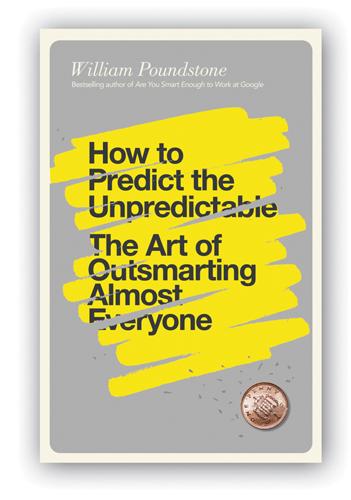
How to Predict the Unpredictable
by
William Poundstone
More to the point, there are accurate prediction markets for Oscars. In sports, prediction markets are hampered by the games’ built-in randomness. Look at the shape of a football. The way it bounces can be as capricious as a coin toss. Sometimes that bounce decides a close game. The crowd can’t anticipate that, no matter how wise they may be about the teams’ overall strengths. Prediction markets are good at aggregating what the crowd already knows. That describes the Oscars, where the votes reflect opinions that Academy members have held for weeks or months. Oscar prediction markets are not forecasting the future but deducing a poorly kept secret.
…
A third category of player is the hard-core strategist who consults the prediction markets. This is the type you have to worry about. Should you believe that all the other players are Oscar buzz–deficient, you’d do best by going with the straight prediction market picks. These choices have the best chance of being right. The strategy needs to be adjusted when there are other well-informed players in the pool. In that case, you may want to choose a contrarian pick. That will usually be a second-place choice, going by the prediction market odds. Should you luck out and be correct, you would leap ahead of the pack of informed voters.
…
The media often refer to point-spread betting as a prediction market, a term that has lately taken on an aura of infallibility. A spread of five points supposedly means that the median bettor believes the favorite will beat the underdog by five points. It’s the crowd’s prediction. This is not quite true, and it’s important to understand why. In 2004 economist Steven Levitt (also known as the coauthor of Freakonomics) advanced the theory that bookies set the point spread to maximize their profits—that, rather than running a fancy prediction market. They don’t always balance bets exactly, and the point spread might not reflect the crowd’s average opinion.
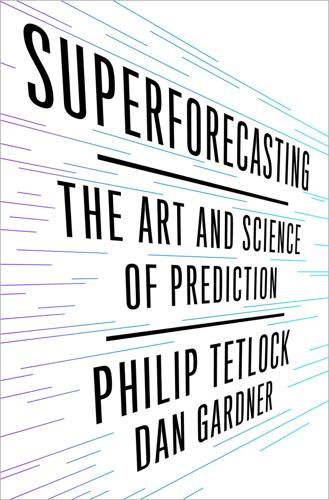
Superforecasting: The Art and Science of Prediction
by
Philip Tetlock
and
Dan Gardner
Published 14 Sep 2015
By aggregating all these judgments, the contract price should, in theory, closely track the true probability of Hillary Clinton winning. Prediction markets like the famous Iowa Electronic Markets have an impressive track record. And they have a theory, backed by a battalion of Nobel laureates, going for them. So who would win in a battle between superteams and prediction markets? Most economists would say it’s no contest. Prediction markets would mop the floor with the superteams. We put that proposition to the test by randomly assigning regular forecasters to one of three experimental conditions. Some worked alone. Others worked in teams. And some were traders in prediction markets run by companies such as Inkling and Lumenogic.
…
Of course, after year 1—when the value of teams was resoundingly demonstrated—nobody expected forecasters working alone to compete at the level of teams or prediction markets, so we combined all their forecasts and calculated the unweighted average to get the “wisdom of the crowd.” And of course we had one more competitor: superteams. The results were clear-cut each year. Teams of ordinary forecasters beat the wisdom of the crowd by about 10%. Prediction markets beat ordinary teams by about 20%. And superteams beat prediction markets by 15% to 30%. I can already hear the protests from my colleagues in finance that the only reason the superteams beat the prediction markets was that our markets lacked liquidity: real money wasn’t at stake and we didn’t have a critical mass of traders.
…
I can already hear the protests from my colleagues in finance that the only reason the superteams beat the prediction markets was that our markets lacked liquidity: real money wasn’t at stake and we didn’t have a critical mass of traders. They may be right. It is a testable idea, and one worth testing. It’s also important to recognize that while superteams beat prediction markets, prediction markets did a pretty good job of forecasting complex global events. How did superteams do so well? By avoiding the extremes of groupthink and Internet flame wars. And by fostering minicultures that encouraged people to challenge each other respectfully, admit ignorance, and request help. In key ways, superteams resembled the best surgical teams identified by Harvard’s Amy Edmondson, in which the nurse doesn’t hesitate to tell the surgeon he left a sponge behind the pancreas because she knows it is “psychologically safe” to correct higher-ups.
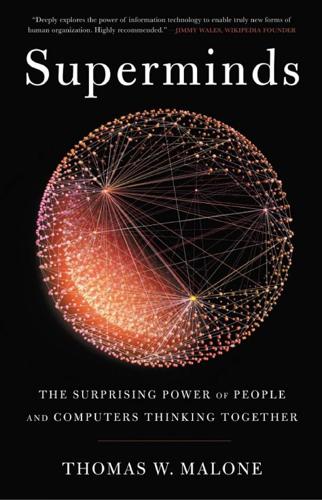
Superminds: The Surprising Power of People and Computers Thinking Together
by
Thomas W. Malone
Published 14 May 2018
This combination of diverse approaches resulted in overall predictions that were better than either the people or computers made alone. It’s easy to imagine that cyber-human prediction markets like this could be used in many ways. Google and Microsoft, for example, have already let their employees use prediction markets to estimate completion dates for internal projects. The University of Iowa has been using prediction markets to predict the winners of US presidential races for decades. The Hollywood Stock Exchange website uses prediction markets to predict movie box-office receipts. In all these cases, the predictions from the prediction markets are usually as good as or better than any alternative prediction methods.
…
Here’s how it worked: We showed groups of people videos of a football game, and just before each play began, we stopped the videos and asked people to predict whether the play would be a run or a pass. Rather than asking our subjects to just make a simple prediction, we asked them to express their predictions by participating in a prediction market. Somewhat like futures markets, prediction markets let you buy and sell “shares” of predictions about possible future events. For instance, if you think the next play will very likely be a pass, you should buy shares of this prediction. If your predictions are right, then you (typically) get one dollar for each share you own, and if your predictions are wrong you get nothing.5 But the market lets you express your opinions even more precisely than that.
…
The upshot here is twofold: providing an incentive for bot designers to make increasingly smarter bots will lead to advances in AI, and the prediction markets in which those bots participate will become more accurate. It’s important to note, by the way, that this approach can be useful with the artificial intelligence that we have today. In fact, it can even work with simple prediction algorithms, like statistical regression, that have existed for decades. Cyber-Human Markets for Everything Most of what we’ve just been saying applies to far more than just prediction markets; it applies to many other kinds of markets, too. Today’s financial markets are leading the way, with investment managers increasingly relying on quantitative, often AI-based, trading algorithms.
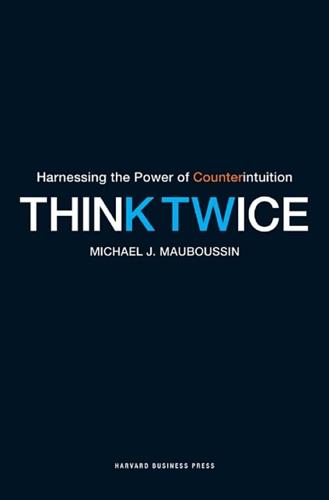
Think Twice: Harnessing the Power of Counterintuition
by
Michael J. Mauboussin
Published 6 Nov 2012
Schelling, Robert J. Shiller, Vernon L. Smith, Erik Snowberg, Cass R. Sunstein, Paul C. Tetlock, Philip E. Tetlock, Hal R. Varian, Justin Wolfers, and Eric Zitzewitz, “The Promise of Prediction Markets,” Science 320 (May 16, 2008):877–878; Bo Cowgill, Justin Wolfers, and Eric Zitzewitz, “Using Prediction Markets to Track Information Flows: Evidence from Google,” working paper, 2008. 4. Phred Dvorak, “Best Buy Taps ‘Prediction Market,’” Wall Street Journal, September 16, 2008. 5. Hilke Plassmann, John O’Doherty, Baba Shiv, and Antonio Rangel, “Marketing Actions Can Modulate Neural Representations of Experienced Pleasantness,” Proceedings of the National Academy of Sciences 105, no. 3 (2008): 1050–1054. 6.
…
When the dust settled in early 2006, he revealed that the official August forecast of the internal experts was 93 percent accurate, while the presumed amateur crowd was off by only one-tenth of 1 percent.2 Best Buy subsequently allocated additional resources to its prediction market, called TagTrade.3 The market has yielded useful insights for managers through the more than two thousand employees who have made tens of thousands of trades on topics ranging from customer satisfaction scores to store openings to movie sales. For instance, in early 2008, TagTrade indicated that sales of a new service package for laptops would be disappointing when compared with the formal forecast. When early results confirmed the prediction, the company pulled the offering and relaunched it in the fall. While far from flawless, the prediction market has been more accurate than the experts a majority of the time and has provided management with information it would not have had otherwise.4 Sommeliers, Don’t Sniff at This Equation When it comes to wine, I am an ignoramus.
…
James Surowiecki, The Wisdom of Crowds: Why the Many Are Smarter Than the Few and How Collective Wisdom Shapes Business, Economies, Societies and Nations (New York: Doubleday and Company, 2004). 2. Gary Hamel with Bill Breen, The Future of Management (Boston: Harvard Business School Press, 2007), 229–239; Renée Dye, “The Promise of Prediction Markets: A Roundtable,” The McKinsey Quarterly, no. 2 (April 2008): 83–93; and Steve Lohr, “Betting to Improve the Odds,” New York Times, April 9, 2008. 3. Prediction markets are real-money exchanges where people can bet on events with binary and temporally defined outcomes; hence the price reflects the probability of the event occurring. See Kenneth J. Arrow, Robert Forsythe, Michael Gorham, Robert Hahn, Robin Hansen, John O.

On the Edge: The Art of Risking Everything
by
Nate Silver
Published 12 Aug 2024
As I argue in The Signal and the Noise, making testable predictions is one of the only ways to know whether you’re epistemically rational. So in theory, prediction markets play an important role in making the world more rational. But what about in practice? My views are mostly sympathetic, but not without some reservations. That’s in part because of some scar tissue from too many arguments I’ve had on the internet about the accuracy of prediction markets versus FiveThirtyEight forecasts. The FiveThirtyEight forecasts have routinely been better—I know that’s what you were expecting me to say, but it’s true—something that’s not supposed to happen if the markets are efficient.
…
The FiveThirtyEight forecasts have routinely been better—I know that’s what you were expecting me to say, but it’s true—something that’s not supposed to happen if the markets are efficient. Then again, maybe this doesn’t tell us that much. Elections are quite literally the Super Bowl of prediction markets—there’s so much dumb money out there (lots of people who have very strong opinions about politics) that there isn’t necessarily enough smart money to offset it. In 2020, there were even people willing to bet millions on Donald Trump after Joe Biden had already been declared the winner (we’ll get to that shortly). In many other circumstances, though, prediction markets are clearly quite useful. As news organizations scrambled to correct their coverage, for instance, traders at Manifold determined that the IDF probably hadn’t been responsible for whatever had happened on that particular night at the Gaza hospital.[*19] But the bigger concern I have, ironically enough, is that prediction markets may become less reliable if people trust them too much.
…
As news organizations scrambled to correct their coverage, for instance, traders at Manifold determined that the IDF probably hadn’t been responsible for whatever had happened on that particular night at the Gaza hospital.[*19] But the bigger concern I have, ironically enough, is that prediction markets may become less reliable if people trust them too much. When I spoke with MacAskill after the FTX collapse and asked him whether he ought to have seen it coming, he gave me what I found to be a dissatisfying answer. “This was genuinely extremely unpredictable given available evidence,” he said. He cited a forecast from a different play-money prediction market site called Metaculus. “What’s the chance of FTX defaulting on any customer deposit in 2022? It was like one point three percent,” MacAskill recalled.
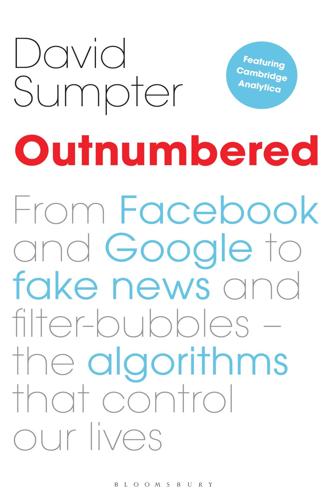
Outnumbered: From Facebook and Google to Fake News and Filter-Bubbles – the Algorithms That Control Our Lives
by
David Sumpter
Published 18 Jun 2018
I do this in Figure 8.3 for both FiveThirtyEight and prediction markets Intrade and PredictIt.8 The brave predictions are the ones that lie at the extreme left and right of the figures. These correspond to a prediction that the Democrat candidate will win or lose a state with a certainty greater than 95 per cent. All of these brave predictions, for both FiveThirtyEight and the prediction markets, proved to be correct: the strong favourite won the state. Figure 8.3 Comparison of predictions and outcome for (a) FiveThirtyEight and (b) prediction markets Intrade/PredictIt for all US states for presidential elections in 2008, 2012 and 2016.
…
However, the whole point of a prediction market is that it brings together different pieces of information, weighing them in proportion to their quality. So while it would be considered as high quality, it is unlikely that FiveThirtyEight was the sole source of the PredictIt market. And there is certainly no evidence of PredictIt predictions following the ups and downs of FiveThirtyEight with a delay. FiveThirtyEight doesn’t explicitly use betting market data in its model. However, Silver, a former professional gambler, understands very well that prediction markets and bookmakers’ odds give a better reflection of the probability an event will happen than the polls themselves.
…
Random House. 7 This figure is taken from a project at The Data Face based on data collected by Good Judgement Open: www.thedataface.com/good-judgment-open-election-2016. 8 PredictIt has only been around for one presidential election, but one of its predecessors that works on the same principles, Intrade, was used for both the 2008 and 2012 votes. Alex and I took these prediction markets’ final probability for every state over the three elections, and compared them with FiveThirtyEight’s predictions. 9 Rothschild, D. 2009. ‘Forecasting elections: Comparing prediction markets, polls, and their biases.’ Public Opinion Quarterly 73, no. 5: 895–916. 10 The Brier score is a single number that accounts both for accuracy and the courage of predictions. This score is calculated from the square of the distance between the prediction and the actual outcome.

Machine, Platform, Crowd: Harnessing Our Digital Future
by
Andrew McAfee
and
Erik Brynjolfsson
Published 26 Jun 2017
There are active debates about whether prediction markets provide more accurate forecasts than other methods (such as properly weighted averages of polls, or reliance on the superforecasters identified by Philip Tetlock and discussed in Chapter 2), but few people anymore doubt that prediction markets can be very effective under the right conditions. As economist Robin Hanson, the scholar who has done the most to advance both the theory and practice of prediction markets, puts it, “Prediction markets reflect a fundamental principle underlying the value of market-based pricing: Because information is often widely dispersed among economic actors, it is highly desirable to find a mechanism to collect and aggregate that information. Free markets usually manage this process well because almost anyone can participate, and the potential for profit (and loss) creates strong incentives to search for better information.”
…
As groups went online and became the crowd, innovators found different ways to detect and harvest this knowledge. Prediction markets were one of the earliest of these, and the ones that built most directly from Hayek’s insights. These are markets not for goods and services, but for future events, such as a particular person being elected US president in 2020, an upcoming movie making between $50 million and $100 million in the box office in its first week, or the official US inflation rate averaging more than 3% over the next quarter. Here’s how prediction markets work. First, the market maker creates a set of securities that participants can buy and sell, just like they sell a company’s shares on the New York Stock Exchange or Nasdaq.
…
If inflation did, in fact, average more than 3%, all the people holding the “above 3%” security would get $1 for every share they had. Results from prediction markets confirm Hayek’s insights about the knowledge-aggregating power of prices within markets. In markets like the ones just described, events with final share prices of about $0.70 tend to actually happen about 70% of the time, making these prices pretty accurate probability estimates. There are active debates about whether prediction markets provide more accurate forecasts than other methods (such as properly weighted averages of polls, or reliance on the superforecasters identified by Philip Tetlock and discussed in Chapter 2), but few people anymore doubt that prediction markets can be very effective under the right conditions.
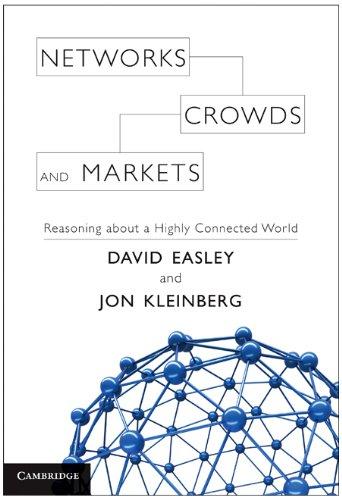
Networks, Crowds, and Markets: Reasoning About a Highly Connected World
by
David Easley
and
Jon Kleinberg
Published 15 Nov 2010
Here, we will ignore the various institutional structures of prediction markets and instead see how much we can discover about them by applying our analysis of horse races via state prices. Consider, for example, the prediction market for the 2008 U.S. Presidential election with two possible outcomes: a Democrat wins or a Republican wins. (The same analysis can handle prediction markets with many plausible outcomes, such as the earlier prediction market for the identity of the Democratic and Republican nominees for President in 2008.) 22.4. PREDICTION MARKETS AND STOCK MARKETS 715 Let fn be the share of the total wealth bet in the prediction market that is bet by trader n.
…
The state prices are weighted averages of these beliefs, so they too converge to a and b. 22.4 Prediction Markets and Stock Markets Thus far we have been telling a story about horse races, but there is a direct analogy to any market where participants purchase assets whose future value depends on the outcome of uncertain events. Two specific examples are prediction markets and — by far the most consequential application of these ideas — stock markets. In both cases, we will see that state prices play a key role in how we reason about what takes place in the market. Prediction Markets. In a prediction market, individuals trade claims to a one-dollar return conditional on the occurrence of some event.
…
The final chapter discusses the role of property rights in influencing what outcomes are possible. 22.1 Markets with Exogenous Events In this section we begin examining how markets aggregate opinions about events in settings where the underlying events are exogenous — the probabilities of the events are not affected by the outcomes in the market. Prediction markets are one basic example of this setting. These are markets for (generally very simple) assets which have been created to aggregate individuals’ predictions about a future event into a single group, or market, opinion. In a prediction market, individuals bet on the outcome of some event by trading claims to monetary amounts that are conditional on the outcome of the event. One of the most well-known uses of prediction markets has been for the forecasting of 22.1. MARKETS WITH EXOGENOUS EVENTS 703 election results.

Reinventing Capitalism in the Age of Big Data
by
Viktor Mayer-Schönberger
and
Thomas Ramge
Published 27 Feb 2018
We purchase “winks” to indicate interest in another person on online dating sites. Firms buy and sell pollution certificates to manage fossil-fuel use. And we set up so-called prediction markets to pool (through money and price) available information on everything from Hollywood box-office receipts to the outcomes of presidential elections. In every one of these marketplaces, price is the key enabler. Consider prediction markets. When participants share their forecasts of a future event, they essentially pool all the information they have. But how do we know what information is accurate and relevant, and what isn’t?
…
This does not guarantee that all of the predictions in the market will be correct—far from it—but it is eminently better than giving equal weight to every bit of information. Google’s experiments with prediction markets are but one real-world example of the power of combining markets with money to generate more accurate forecasts of future events. Since 2005, employees at the company have been asked to answer questions about potential developments in the tech industry and the world in general. For instance, they may be asked, “How many users will Gmail have at the end of the quarter?” or “Will a Russia office open?” and are offered a range of defined responses. Employees participating in the prediction market are given a wallet of “Goobles” to spend on their answers.
…
a better-than-even chance to know the truth: Cass R. Sunstein, Infotopia (New York: Oxford University Press, 2006), 25ff. the probability of events related to Google projects: Other companies have also experimented with prediction markets, but Google’s appear to be the largest and longest experiments conducted in the corporate world. See Bo Cowgill, Justin Wolfers, and Eric Zitzewitz, “Using Prediction Markets to Track Information Flows: Evidence from Google,” in Sanmay Das, Michael Ostrovsky, David Pennock, and Boleslaw K. Szymanski, eds., Auctions, Market Mechanisms and Their Applications (Berlin: Springer, 2009), 3, http://link.springer.com/chapter/10.1007/978-3-642-03821-1_2.
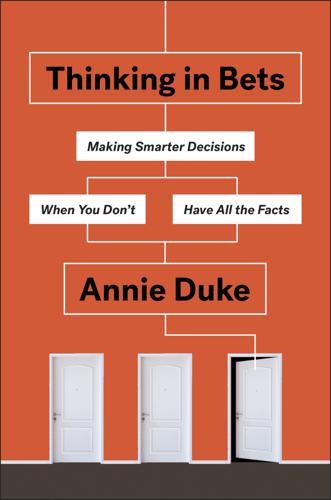
Thinking in Bets
by
Annie Duke
Published 6 Feb 2018
Justice Thomas’s remark about his hiring practices, including his adaptation of the famous line often attributed to Mark Twain about teaching a pig to sing, has been widely reported, including in David Savage’s profile, “Clarence Thomas Is His Own Man,” in the Los Angeles Times, July 3, 2011. Wanna bet (on science)?: Several studies about corporate prediction markets mention the companies studied or those known to be testing prediction markets. See Cowgill, Wolfers, and Zitzewitz, “Using Prediction Markets to Track Information Flows.” Some studies also refer to some of the companies anonymously. For an example of a study doing both, see Cowgill and Zitzewitz, “Corporate Prediction Markets, Evidence from Google, Ford, and Firm X.” Both citations appear in the Selected Bibliography and Recommendations for Further Reading.
…
Aired September 30, 1993, on NBC. Cialdini, Robert. Influence: The Psychology of Persuasion. Rev. ed. New York: HarperCollins, 2009. Cowgill, Bo, Justin Wolfers, and Eric Zitzewitz. “Using Prediction Markets to Track Information Flows: Evidence from Google,” January 2009. http://users.nber.org/~jwolfers/papers/GooglePredictionMarketPaper.pdf. Cowgill, Bo, and Eric Zitzewitz. “Corporate Prediction Markets: Evidence from Google, Ford, and Firm X.” Review of Economic Studies 82, no. 4 (April 2, 2015): 1309–41. Dalio, Ray. Principles: Life and Work. New York: Simon & Schuster, 2017. Dawkins, Richard.
…
Anna Dreber, a behavioral economist at the Stockholm School of Economics, with several colleagues set up a betting market based on these replication attempts. They recruited a bunch of experts in the relevant fields and asked their opinions on the likelihood the Reproducibility Project would replicate the results of forty-four studies. They then gave those experts money to bet on each study’s replication in a prediction market. Experts engaging in traditional peer review, providing their opinion on whether an experimental result would replicate, were right 58% of the time. A betting market in which the traders were the exact same experts and those experts had money on the line predicted correctly 71% of the time.
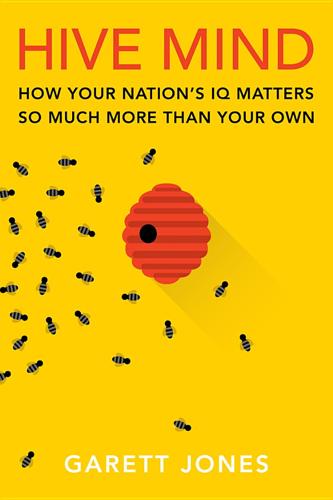
Hive Mind: How Your Nation’s IQ Matters So Much More Than Your Own
by
Garett Jones
Published 15 Feb 2015
Bo Cowgill of Google worked with economists Justin Wolfers and Eric Zitzewitz to study Google’s internal prediction markets, an online market in which Google employees can bet on questions such as “How many users will Gmail have” a few months in the future, what Google Talk’s quality rating will be, and whether Google will open an office in Russia.23 These markets work like sports betting markets, so players have a real incentive to guess correctly: the closer their guess is to the truth, the more they can win. Googlers don’t bet for real money, but they can win prizes if they do well in the prediction markets, so the incentives to try hard are reasonably strong.
…
Googlers don’t bet for real money, but they can win prizes if they do well in the prediction markets, so the incentives to try hard are reasonably strong. As my colleague Robin Hanson notes, these internal prediction markets do a good job guessing real corporate outcomes—and are even better than the guesses of company managers: when money and prizes are on the line, passions and egos lose out, and the truth tends to bubble up. So what shapes the way people bet in these prediction markets? Cowgill’s study found that the best predictor of how any individual Googler bet in the market was whom he or she sat closest to: [O]pinions on specific topics are correlated among employees who are proximate in some sense. Physical proximity was the most important of the forms of proximity we studied . . .
…
Farrar, Green, Green, Nickerson, and Shewfelt, “Does Discussion Group Composition Affect Policy Preferences?” 22. Farrar and others, “Does Discussion Group Composition Affect Policy Preferences?” p. 637. 23. Cowgill, Wolfers, and Zitzewitz, “Using Prediction Markets to Track Information Flows.” In particular, see Table 1. 24. Cowgill, Wolfers, and Zitzewitz, “Using Prediction Markets to Track Information Flows,” 3. 25. Thomas Jefferson, “Letter to Charles Yancey. 26. Hochschild, “If Democracies Need Informed Voters,” 119. 27. Hochschild, “If Democracies Need Informed Voters,” 120. 28. Brennan, “The Right to a Competent Electorate.”
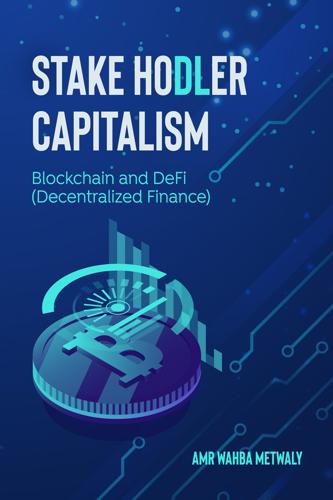
Stake Hodler Capitalism: Blockchain and DeFi
by
Amr Hazem Wahba Metwaly
Published 21 Mar 2021
DeFi payment solutions build a more free economic system for the underbanked and unbanked populace and help big financial institutions streamlining market infrastructure and serve better wholesale and retail customers. Prediction markets Blockchain-based prediction markets impede the crowd's reasoning and help users vote and exchange value on the result of events. Market prices then become crowdsourced pointers of the odds of an event. An example of a popular DeFi betting platform is Augur; it accentuates prediction markets based on election results, economic events, sports games, to mention but a few. Saving Many DeFi apps offer interest-bearing accounts, which can be exponentially more than the conventional savings accounts type based on a dynamic interest rate linked to supply and demand when sealed into lending pool policies like Compound.
…
Government Management Automobile Real estate Healthcare Benefits of Smart Contracts Problems of Smart Contracts Chapter 4: Ethereum and DeFi Popular DeFi Apps: Lending and borrowing MakerDAO DAI Overview Stable-coin With Cryptocurrency Decentralized Exchange Degrees of Decentralization Compound Derivatives DAOs Prediction markets Saving Staking Tokenization Trading DeFi vs. CeFi Differences between DeFi and Open Banking Why the Hype? Benefits of DeFi Advantages of DeFi DeFi and Potential Risks Chapter 5: What Does Yield Farming In Decentralized Finance (DeFi) Mean? Don't You Need A Lot of Money To Run A Bank?
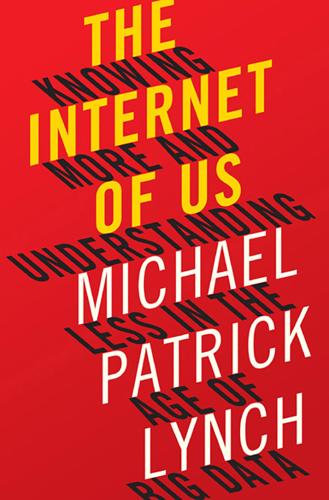
The Internet of Us: Knowing More and Understanding Less in the Age of Big Data
by
Michael P. Lynch
Published 21 Mar 2016
In a certain obvious sense, markets like this can be seen as encoding the information of the network of investors that make it up—not only about what may happen in the future but about the state of an election at any given time. But the way in which this information is aggregated is not, as in the cases above, statistical. Prediction markets don’t average the views of their participants, rather they work in the same way other markets work: the more confident buyers are that a given candidate will win, the higher his or her “stock” goes—the more value is attached to it, no matter how many people may own that stock. But prediction markets also have their limits. A well-known example, noted by David Leonhardt of the New York Times, was the 2012 Supreme Court decision on the Affordable Care Act.9 Right up to the last minute, Intrade was indicating a 75 percent chance that the Act’s mandate would be declared unconstitutional.
…
In that case, the crowd is not wise but unwise. This brings us to a key point: whether or not a network “knows” something (even in the nonliteral sense) depends on the cognitive capacities (and incapacities) of the nodes on that network—the individual people who make it up. A good example is prediction markets. Markets like this trade in futures, but participants aren’t betting on whether a given company’s monetary value will rise but whether, for example, a politician will win an election or a particular movie will win an Oscar. These markets had some notable early successes; Intrade, for example, was famously better at predicting the 2006 midterm elections than cable news.
…
If so, then perhaps the best we can say is that what we can loosely call the group’s implicit commitment “supervenes” or is a product of the individuals’ commitments. 8. Surowiecki, The Wisdom of Crowds, xii. 9. David Leonhardt, “When the Crowd Isn’t Wise,” New York Times, July 7, 2012. 10. Nate Silver, “The Virtues and Vices of Election Prediction Markets,” New York Times, October 24, 2012. 11. I was helped to see these points in discussions with Sandy Goldberg and Nate Sheff. The example in the text is similar to that in Goldberg, “The Division of Epistemic Labor,” 117. 12. Weinberger, Too Big to Know, 21. 13. Descartes, Meditations, 103. 14.

Adaptive Markets: Financial Evolution at the Speed of Thought
by
Andrew W. Lo
Published 3 Apr 2017
The Wall Street odds represent a large body of extremely impartial opinion that talks with money and approaches Coolidge and Davis as dispassionately as it pronounces judgment on Anaconda and Bethlehem Steel.”45 With the advent of the Internet, prediction markets have experienced something of a renaissance. The Iowa Electronic Markets—originally the Iowa Presidential Stock Market—is perhaps the best-known research prediction market, dating back to the 1988 presidential election,46 but commercial prediction markets have also become popular. Many of these markets have done as well or better than conventional forecasting methods; for instance, in midsummer of 2010 the Iowa Electronic Markets correctly predicted that the Republican Party would take control of the House of Representatives, but that the Democratic Party would keep control of the Senate, a result few people expected.
…
On the other hand, in some particularly rancorous political races, such as the 2012 presidential election, people have tried to manipulate prediction markets in attempts to gain “momentum” for their preferred candidate, in much the same way an unscrupulous trader might try to run up the price of a penny stock. While this had no practical way of affecting the outcome of the election (at least, not given the small size of these markets), it did briefly damage the usefulness of the prediction market before it corrected itself. In the end, however, people with the more accurate prediction gained more money at the manipulators’ expense, just as the Efficient Markets Hypothesis would predict. But prediction markets are only one possible use of the Efficient Markets Hypothesis.
…
If the Efficient Markets Hypothesis holds, the market price fully reflects all available information in the crowd. What a fantastic way to gather information. And not just about the Red Sox; imagine creating prediction markets for collecting information about terrorist events, flu epidemics, nuclear meltdowns, and presidential elections. This may sound a little like science fiction, but prediction markets were widely used in the United States in the nineteenth and early twentieth centuries to forecast elections before the advent of modern polling techniques.44 Paul W. Rhode and Koleman Strumpf have documented these early prototypes—they were betting markets with standardized contracts.
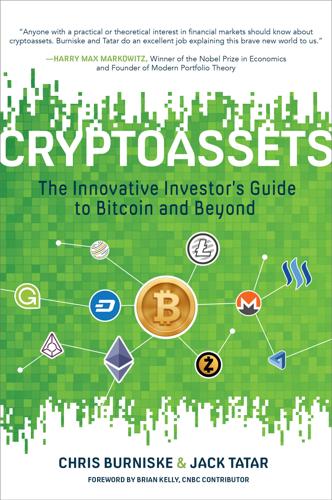
Cryptoassets: The Innovative Investor's Guide to Bitcoin and Beyond: The Innovative Investor's Guide to Bitcoin and Beyond
by
Chris Burniske
and
Jack Tatar
Published 19 Oct 2017
DECENTRALIZED PLATFORMS TO PREDICT THE FUTURE One of the more interesting dApps in development uses Ethereum’s blockchain to facilitate prediction markets. The company Augur seeks to provide a platform that allows users to wager on the results of any event, creating a market for people to test their predictions.34 Hence the term “prediction market.” For instance, if someone had sought to predict whether Donald Trump or Hillary Clinton would win the 2016 U.S. presidential election, he or she could have used Augur to create a prediction market and wager against others on the outcome (if the service had been up and running at the time). Augur uses a cryptotoken, which it calls Reputation (REP), to incentivize people to report on the outcomes of events truthfully.
…
By that time, he had already garnered the support of over 15 developers and dozens in the community outreach team.9 In Ethereum’s white paper that initially described its inner workings, Buterin’s team made no qualms about their aspirations: What is more interesting about Ethereum, however, is that the Ethereum protocol moves far beyond just currency. Protocols around decentralized file storage, decentralized computation and decentralized prediction markets, among dozens of other such concepts, have the potential to substantially increase the efficiency of the computational industry, and provide a massive boost to other peer-to-peer protocols by adding for the first time an economic layer.10 Importantly, Buterin did not intend for Ethereum and its native asset, ether, to be a minor variation on Bitcoin’s codebase.
…
For instance, if someone had sought to predict whether Donald Trump or Hillary Clinton would win the 2016 U.S. presidential election, he or she could have used Augur to create a prediction market and wager against others on the outcome (if the service had been up and running at the time). Augur uses a cryptotoken, which it calls Reputation (REP), to incentivize people to report on the outcomes of events truthfully. These reporters are different from the people wagering on the outcome of events. The problem with a decentralized prediction market is that there’s no centralized authority on the outcome of events. Augur uses REP to reward people who report truthfully and penalize those who lie. Augur explains it as follows: Those who hold Reputation are expected to report accurately on the outcome of randomly selected events within Augur every few weeks. If holders fail to report accurately on the outcome of an event, or attempt to be dishonest—the Augur system redistributes the bad reporter’s Reputation to those who have reported accurately during the same reporting cycle.35 Augur conducted its own crowdfunding effort in 2015, selling 80 percent of a fixed supply of 11 million REP.
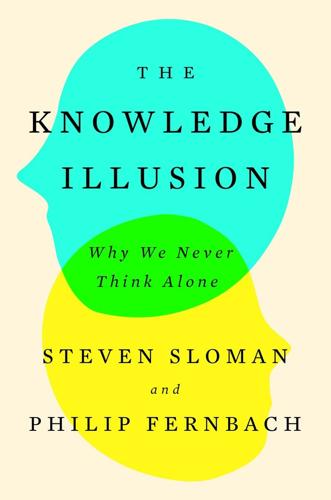
The Knowledge Illusion
by
Steven Sloman
Published 10 Feb 2017
A group of economists has sung the praises of a type of crowdsourcing called a prediction market. In a prediction market, people make bets about what will happen in the future. The amount that the crowd is willing to bet on a particular outcome is used to estimate the probability of that outcome. People are motivated to bet because the best predictor wins a prize like money or prestige. Experts are especially motivated because they are more likely to know what will happen than novices, and so experts tend to have an outsize influence on the market. Many government agencies and private companies have used prediction markets to make guesses about what will happen in domestic elections, international affairs, and business environments.
…
within 1 percent of the ox’s true weight of 1,198 pounds: Despite frequent reports saying otherwise, he did not find that the mean weight was within 1 pound of the ox’s true weight. Nor did he find that the average was better than any individual guess. prediction market: K. J. Arrow, R. Forsythe, M. Gorham, R. Hahn, R. Hanson, J. O. Ledyard, S. Levmore, et al. (2008). “The Promise of Prediction Markets.” Science 320(5878): 877–878. EIGHT. THINKING ABOUT SCIENCE a giant sledgehammer: smithsonianmag.com/history/what-the-luddites-really-fought-against-264412/?all. increasingly bizarre: Ibid. James Inhofe’s snowball: washingtonpost.com/news/the-fix/wp/2015/02/26/jim-inhofes-snowball-has-disproven-climate-change-once-and-for-all.
…
See chaos theory consequences vs. values arguments, 182–87 contribution of individuals example of group thinking, 122 Copernicus, Nicolaus, 198–99 counterfactual thought, 64–65 Galileo’s experiments with dropping different weights, 65–66 imagining scenarios to figure out likely outcomes, 66 crowdsourcing expertise, 146–50 ox’s weight example, 148 Pallokerho-35 Finnish soccer club example, 148 prediction market, 149 user ratings, 148 crows ability to reason diagnostically, 62 CRT (Cognitive Reflection Test), 80–84 bat and ball problem, 81 lily pad problem, 81–82 machines and widgets problem, 82 crystallized intelligence, 202 cult communities, 260 cultural values and cognition, 160–63 reconciling conflicting beliefs, 161–62 “Science Mike” (Mike McHargue), 160–62 cumulative culture, 117–18 curse of knowledge, 128, 244 curving bullets example of physics, 69–70 Dalio, Ray, 253 Damasio, Antonio, 103 decentralized collaborative activity, 149–50 Bitcoin, 150 block chain technology, 150 Ethereum, 150 decision-making, 103–05, 240, 241, 248–49, 250–53 deficit model of science attitudes, 157–60 Dehghani, Morteza, 185–86 Descartes, René, 87 de Soto, Hernando, 244–45 DeVito, Danny, 45–46 Dewey, John, 216 diagnostic reasoning, 58–62 crow example, 62 lethargy example, 59–61 diSessa, Andrea, 71 disgust, feelings of, 104–05 division of cognitive labor, 14, 109–11, 120–21, 128–29 area of expertise example, 120 car analogy example, 207–08 in the field of science, 222–23 household finances, 247 wine expert example, 120 dogs Cassie example, 49–50 Pavlovian conditioning, 50–51 doorway example of optic flow, 99–100 driving ability example of ignorance, 257–58 Dunbar, Robin, 113 Dunning, David, 257–58 Dunning-Kruger effect, 258 Eastwood, Clint, 172 economics of science, 227–28 education application of classroom learning, 216–17 becoming a car mechanic example, 219–20 expressing desire to learn that which is unknown, 221 financial issues, 240–41 history of Spain example, 220 Ignorance course, 221 illusion of comprehension, 217–18 just-in-time, 251–52 learning to accept what you don’t know, 220–21 mathematical abilities of Brazilian children, 215–16 peer, 230–31 purpose of, 219–21 teaching science, 222, 225–32 Einstein, Albert, 199 embodied intelligence, 91–93 embodiment, 102 emotional responses that influence decision-making, 103–05, 240 engagement as a human concept, 117 environment, knowledge of your personal, 94–96 Ethereum, 150 expertise and crowdsourcing, 146–50 in scientific matters, 226–27 to understand community issues, 188–89 explanation foes and fiends, 237–39 advertising, 239–40, 241–42 Band-Aids example, 237–38 skin care example, 239–40 vesting service letter example, 243–44 explorers’ self-confidence, 263 eyesight.
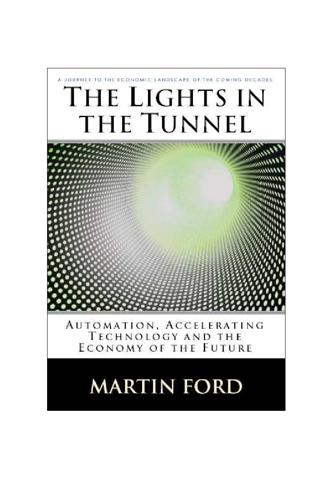
The Lights in the Tunnel
by
Martin Ford
Published 28 May 2011
The Predictive Nature of Markets One of the more interesting developments to arise out of the Internet has been the appearance of online prediction markets. A prediction market is really just another name for a betting market, and it operates in a similar fashion to the futures markets that allow traders to place bets on the future direction of things like oil prices and stock market indexes. Prediction markets, such as the Iowa Electronic Markets (IEM) and Intrade, allow participants to bet real money on things like elections, economic developments (such as recessions), or specific events in the business or entertainment worlds. While prediction markets are specifically set up to predict future events, we know that we can expand this idea and say that all free markets are, in essence, prediction markets.
…
While prediction markets are specifically set up to predict future events, we know that we can expand this idea and say that all free markets are, in essence, prediction markets. If you buy a particular company’s stock, then you are placing a bet that, in the future, that stock will trade at a higher value. Collectively, the millions of participants in the world’s stock markets often act as a sort of predictive barometer for the economy as a whole. Historically, the U.S. stock market has often anticipated recessions by six months or so. Likewise, recovery from a recession is very often preceded by a rise in the stock market. This predictive feature also applies to all the other various markets with which we interact, including the housing market, the job market, and the mass market for goods and services.
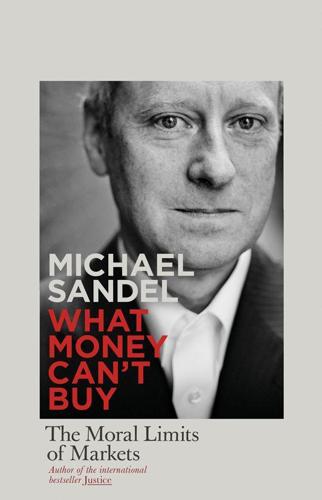
What Money Can't Buy: The Moral Limits of Markets
by
Michael Sandel
Published 26 Apr 2012
Michael Schrage and Sam Savage, “If This Is Harebrained, Bet on the Hare,” Washington Post, August 3, 2003; Noam Scheiber, “Futures Markets in Everything,” New York Times Magazine, December 14, 2003, p. 117; Floyd Norris, “Betting on Terror: What Markets Can Reveal,” New York Times, August 3, 2003; Mark Leibovich, “George Tenet’s ‘Slam-Dunk’ into the History Books,” Washington Post, June 4, 2004. 49. Schrage and Savage, “If This Is Harebrained.” See also Kenneth Arrow et al., “The Promise of Prediction Markets,” Science 320 (May 16, 2008): 877–78; Justin Wolfers and Eric Zitzewitz, “Prediction Markets,” Journal of Economic Perspectives 18 (Spring 2004): 107–26; Reuven Brenner, “A Safe Bet,” Wall Street Journal, August 3, 2003. 50. On the limitations of prediction markets, see Joseph E. Stiglitz, “Terrorism: There’s No Futures in It,” Los Angeles Times, July 31, 2003. For a defense of them, see Adam Meirowitz and Joshua A. Tucker, “Learning from Terrorism Markets,” Perspectives on Politics 2 (June 2004), and James Surowiecki, “Damn the Slam PAM Plan!”
…
They cited the Iowa Electronic Market, an online futures market that has predicted the results of some presidential elections better than polls. Another example: orange juice futures. “The futures market in orange juice concentrate is a better predictor of Florida weather than the National Weather Service.”47 One advantage of prediction markets over traditional intelligence gathering is that markets are not subject to the distortions of information caused by bureaucratic and political pressures. Midlevel experts who know something can go directly to the market and put their money where their convictions are. This could yield information that might be suppressed by higher-ups and never see the light of day.
…
Tucker, “Learning from Terrorism Markets,” Perspectives on Politics 2 (June 2004), and James Surowiecki, “Damn the Slam PAM Plan!” Slate, July 30, 2003, www.slate.com/articles/news_and_politics/hey_wait_a_minute/2003/07/damn_the_slam_pam_plan.html. For an overview, see Wolfers and Zitzewitz, “Prediction Markets.” 51. Quote from Robin D. Hanson, an economist at George Mason University, in David Glenn, “Defending the ‘Terrorism Futures’ Market,” Chronicle of Higher Education, August 15, 2003. 52. Liam Pleven and Rachel Emma Silverman, “Cashing In: An Insurance Man Builds a Lively Business in Death,” Wall Street Journal, November 26, 2007. 53.
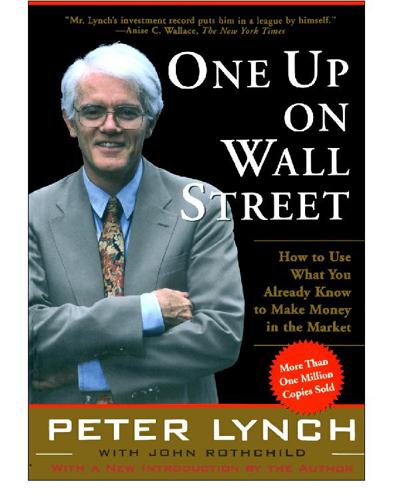
One Up on Wall Street
by
Peter Lynch
Published 11 May 2012
This period of my childhood, and not the recent 1980s, was truly the greatest bull market in history, but to hear it from my uncles, you’d have thought it was the craps game behind the pool hall. “Never get involved in the market,” people warned. “It’s too risky. You’ll lose all your money.” Looking back on it, I realize there was less risk of losing all one’s money in the stock market of the 1950s than at any time before or since. This taught me not only that it’s difficult to predict markets, but also that small investors tend to be pessimistic and optimistic at precisely the wrong times, so it’s self-defeating to try to invest in good markets and get out of bad ones. My father, an industrious man and former mathematics professor who left academia to become the youngest senior auditor at John Hancock, got sick when I was seven and died of brain cancer when I was ten.
…
Please Don’t Ask During every question-and-answer period after I give a speech, somebody stands up and asks me if we’re in a good market or a bad market. For every person who wonders if Goodyear Tire is a solid company, or well-priced at current levels, four other people want to know if the bull is alive and kicking, or if the bear has shown its grizzly face. I always tell them the only thing I know about predicting markets is that every time I get promoted, the market goes down. As soon as those words are launched from my lips, somebody else stands up and asks me when I’m due for another promotion. Obviously you don’t have to be able to predict the stock market to make money in stocks, or else I wouldn’t have made any money.
…
Every year I talk to the executives of a thousand companies, and I can’t avoid hearing from the various gold bugs, interest-rate disciples, Federal Reserve watchers, and fiscal mystics quoted in the newspapers. Thousands of experts study overbought indicators, oversold indicators, head-and-shoulder patterns, put-call ratios, the Fed’s policy on money supply, foreign investment, the movement of the constellations through the heavens, and the moss on oak trees, and they can’t predict markets with any useful consistency, any more than the gizzard squeezers could tell the Roman emperors when the Huns would attack. Nobody sent up any warning flares before the 1973–74 stock market debacle, either. Back in graduate school I learned the market goes up 9 percent a year, and since then it’s never gone up 9 percent in a year, and I’ve yet to find a reliable source to inform me how much it will go up, or simply whether it will go up or down.

Attack of the 50 Foot Blockchain: Bitcoin, Blockchain, Ethereum & Smart Contracts
by
David Gerard
Published 23 Jul 2017
The ideas themselves are as bad as the worst dot-com IPOs. Digix, the first token crowdsale on the Ethereum blockchain itself, is a cryptocurrency backed by gold;309 Golem offers a “decentralized” (buzzword alert!) market in computing, like Amazon Web Services except you can only pay using their token;310 Gnosis offers semiautomatic prediction markets using their token;311 SingularDTV is a bizarre plan to fund a TV show about the Singularity in which a Caribbean island adopts Ethereum as its currency and Austrian economics works (this one gets its own section later in the book); Iconomi is an index fund of other ICOs.312 The token smart contracts are often incompetent in both intended functionality and programming ability.313 This turns out not to matter as long as they do the basic job: attract buyers and sell tokens.
…
Or, as Matt Levine from Bloomberg points out: “My immutable unforgeable cryptographically secure blockchain record proving that I have 10,000 pounds of aluminum in a warehouse is not much use to a bank if I then smuggle the aluminum out of the warehouse through the back door.”335 Technology and business journalists writing about non-cryptocurrency use cases for smart contracts never seem to mention that their “trustless” system will still involve trusting humans wherever it touches the physical world. You may have a tamperproof system for running contract code, but the inputs have to come from outside this secure space. A common proposal is to outsource your oracle to a prediction market – humans betting on predictions – that is also on your blockchain, such as Augur. Somehow, the outcome of a bet is supposed to substitute for direct knowledge of an event having happened or not, with sufficient confidence in the process to let it affect your money. If your question isn’t popular enough to attract sufficient uninvolved wagers – it would often be worth it for one party to just bribe the bettors – you will still have the oracle problem in determining whether the event has in fact occurred.
…
You can’t get rid of the human element by adding another layer of indirection – it’s oracles all the way down. (Augur has openly bragged that they think running on a blockchain means they can dodge US government regulation on gambling and derivatives, which led to the shutdown of previous prediction markets, despite being a single company with known principals.336) Immutability: make your mistakes unfixable The value proposition of “immutability” is that nobody can mess with your contract once it’s been deployed. The common pitch to musicians, for example, is that the big record label will have to pay you as it says in your contract, quickly and automatically.
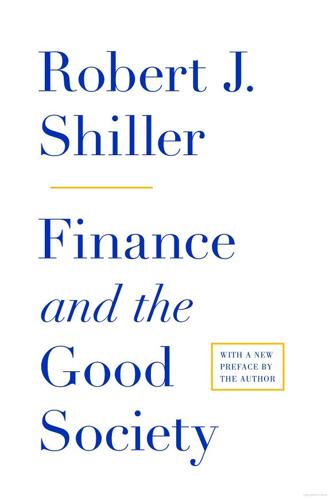
Finance and the Good Society
by
Robert J. Shiller
Published 1 Jan 2012
With the advent of high-scope trading, many more things are traded. An example would be the “prediction markets” that set prices based on the probabilities that a specified event will transpire. The earliest prediction markets, dating back to 1988 at the Iowa Electronic Markets, traded contracts that paid out according to the outcome of a speci ed event, such as a candidate receiving a certain share of the popular vote. The price of such a contract turns out to be a useful estimate of the probability of that outcome.11 Since prediction markets focus on a well-de ned event in the near future and give quick feedback to participants, they are probably less likely to be in uenced by speculative excesses than other markets, such as stock markets.
…
The price of such a contract turns out to be a useful estimate of the probability of that outcome.11 Since prediction markets focus on a well-de ned event in the near future and give quick feedback to participants, they are probably less likely to be in uenced by speculative excesses than other markets, such as stock markets. Today there are many such prediction markets, including Intrade.com, Lumenogic at newsfutures.com, and the Foresight Exchange at ideasphere.com. There have been attempts to start markets for macroeconomic aggregates.12 In 1985 the U.S. Co ee, Sugar and Cocoa Exchange launched a market for the U.S. consumer price index, and in 2002 Goldman Sachs launched a market for nonfarm labor force statistics. Analogous markets have since been trading at the CME Group in Chicago.13 The European Investment Bank in 2004 attempted to start a market for longevity risk— the risk that, because of developments in medical research and changing environmental conditions, people will on average live longer than expected (a problem for de nedbene t pension funds, which have to make payments for as long as retirees live) or less long than expected (a problem for life insurance companies, which will have to pay benefits early).14 Many of these markets have not yet achieved liquidity, and there is little volume of trade.
…
Analogous markets have since been trading at the CME Group in Chicago.13 The European Investment Bank in 2004 attempted to start a market for longevity risk— the risk that, because of developments in medical research and changing environmental conditions, people will on average live longer than expected (a problem for de nedbene t pension funds, which have to make payments for as long as retirees live) or less long than expected (a problem for life insurance companies, which will have to pay benefits early).14 Many of these markets have not yet achieved liquidity, and there is little volume of trade. Often, as in prediction markets, the volume is so low that the market seems more a game among enthusiasts than a signi cant economic institution. This problem poses a challenge for market makers, and it is instructive to understand the role they play in launching such markets. For example, there was, until recently, no derivatives market for residential real estate prices, for single-family home prices.
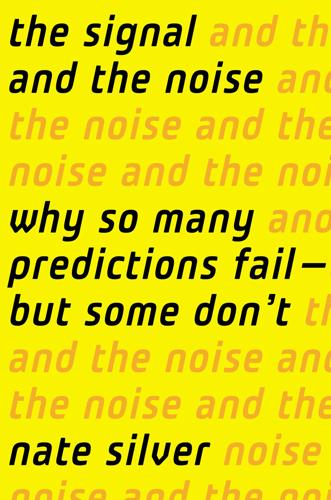
The Signal and the Noise: Why So Many Predictions Fail-But Some Don't
by
Nate Silver
Published 31 Aug 2012
The more fundamental problem is that we have a demand for experts in our society but we don’t actually have that much of a demand for accurate forecasts.” Hanson, in order to address this deficiency, is an advocate of prediction markets—systems where you can place bets on a particular economic or policy outcome, like whether Israel will go to war with Iran, or how much global temperatures will rise because of climate change. His argument for these is pretty simple: they ensure that we have a financial stake in being accurate when we make forecasts, rather than just trying to look good to our peers. We will revisit the idea of prediction markets in chapter 11; they are not a panacea, particularly if we make the mistake of assuming that they can never go wrong.
…
In fact, a market that makes perfect predictions is a logical impossibility. Justin Wolfers, Prediction Markets Cop If there really were a Bayesland, then Justin Wolfers, a fast-talking, ponytailed polymath who is among America’s best young economists, would be its chief of police, writing a ticket anytime he observed someone refusing to bet on their forecasts. Wolfers challenged me to a dinner bet after I wrote on my blog that I thought Rick Santorum would win the Iowa caucus, bucking the prediction market Intrade (as well as my own predictive model), which still showed Mitt Romney ahead. In that case, I was willing to commit to the bet, which turned out well for me after Santorum won by literally just a few dozen votes after a weeks-long recount.* But there have been other times when I have been less willing to accept one of Wolfers’ challenges.
…
I visited Wolfers at his home, where he was an outstanding host, having ordered a full complement of hoagie sandwiches from Sarcone’s to welcome me, my research assistant Arikia Millikan, and one of his most talented students, David Rothschild. But he was buttering me up for a roast. Wolfers and Rothschild had been studying the behavior of prediction markets like Intrade, a sort of real-life version of Bayesland in which traders buy and sell shares of stock that represent real-world news predictions—everything from who will win the Academy Award for Best Picture to the chance of an Israeli air strike on Iran. Political events are especially popular subjects for betting.

Super Thinking: The Big Book of Mental Models
by
Gabriel Weinberg
and
Lauren McCann
Published 17 Jun 2019
If more people are making yes predictions than no predications, then the price of the stock rises, and vice versa. By looking at the current prices in the prediction market, you can get a sense of what the market thinks will happen, based on how people are betting (buying shares). Many big companies operate similar prediction markets internally, where employees can predict the outcome of things like sales forecasts and marketing campaigns. Several larger public prediction markets also exist, such as PredictIt, which focuses on political predictions in the manner described above. While this market has successfully predicted many election outcomes across the world, in 2016 it failed to correctly predict both the election of Donald Trump and the UK’s Brexit vote.
…
In general, drawing on collective intelligence makes sense when the group’s collective pool of knowledge is greater than what you could otherwise get access to; this helps you arrive at a more intelligent decision than you would arrive at on your own. “The crowd” can help systematically think through various scenarios, get new data and ideas, or simply help improve existing ideas. One direct application of crowdsourcing to scenario analysis is the use of a prediction market, which is like a stock market for predictions. In a simple formulation of this concept, the price of each stock can range between $0 and $1 and represents the market’s current probability of an event taking place, such as whether a certain candidate will be elected. For example, a price of $0.59 would represent a 59 percent probability that the candidate would be elected.
…
While this market has successfully predicted many election outcomes across the world, in 2016 it failed to correctly predict both the election of Donald Trump and the UK’s Brexit vote. Retrospective analysis showed that diversity of opinion seemed lacking and that participants in the prediction market likely didn’t have enough direct contact with Trump or Brexit supporters. In addition, predictors were not operating fully independently, instead being influenced by the initial outsized odds against Trump and Brexit. Another project, called the Good Judgment Project, crowdsources predictions for world events. Its co-creator, Philip E.
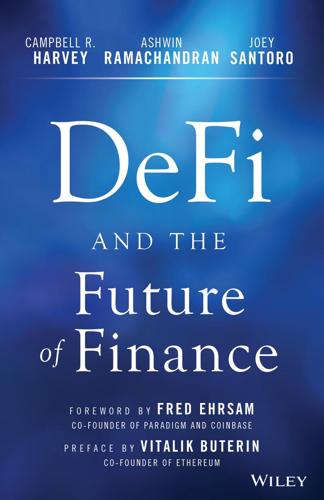
DeFi and the Future of Finance
by
Campbell R. Harvey
,
Ashwin Ramachandran
,
Joey Santoro
,
Vitalik Buterin
and
Fred Ehrsam
Published 23 Aug 2021
This book provides a peek into that future, and you, the reader, hold the power to create it. Fred Ehrsam Co-founder and Managing Partner, Paradigm Co-founder, Coinbase PREFACE Decentralized finance (or DeFi) has always been a big part of what I hoped to see people build on Ethereum. Ideas around user-issued assets, stablecoins, prediction markets, decentralized exchanges, and much more had already been at the top of my mind as well as the minds of many others trying to build the next stage of blockchain technology in those special early days of 2013–14. But instead of creating a limited platform targeting a set of known existing use cases, as many others did, Ethereum introduced general-purpose programmability, allowing blockchain-based contracts that can hold digital assets and transfer them according to predefined rules, and even support applications with components that are not financial at all.
…
But instead of creating a limited platform targeting a set of known existing use cases, as many others did, Ethereum introduced general-purpose programmability, allowing blockchain-based contracts that can hold digital assets and transfer them according to predefined rules, and even support applications with components that are not financial at all. People in the Ethereum community started working on applications such as on-chain stablecoins, prediction markets, and exchanges almost immediately, but only after more than five years did the ecosystem truly start to mature. I believe that DeFi will create a new, easy-to-use and globally accessible financial system for the world. For example, applications like stablecoins are some of the most valuable innovations to come out of DeFi so far.
…
Without oracles, blockchains are completely self-encapsulated and have no knowledge of the outside world other than the transactions added to the native blockchain. Many DeFi protocols require access to secure, tamper-resistant asset prices to ensure that routine actions such as liquidations and prediction market resolutions function correctly. Protocol reliance on these data feeds introduces oracle risk. Oracles represent significant risks to the systems they help support. If an oracle's cost of corruption is ever less than an attacker's potential profit from corruption, the oracle is extremely vulnerable to attack.
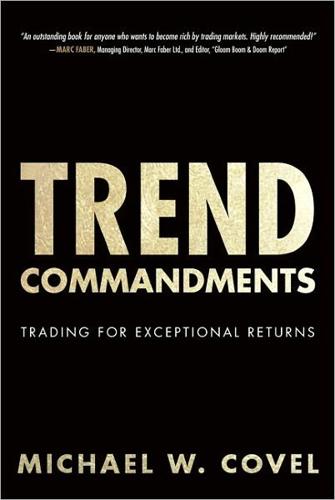
Trend Commandments: Trading for Exceptional Returns
by
Michael W. Covel
Published 14 Jun 2011
I thought a different approach to get this If you are not story out was required, for very few are yet criticized, you might aware of what’s in these pages. not be doing much. Sadly, many still see making money wrong. They make wildly inaccurate assumptions about what constitutes a winning trader: • Do they possess a unique talent? • A special inborn gene or divine gift? • The innate talent of a child prodigy? • Inside knowledge? • Ability to predict markets? • Degrees in finance or an MBA? • Huge starting capital? One answer: No. Why do we not know that? Instant gratification is our Achilles’ heel. Multitask this and that. Kardashians. Now. Faster. Easier. Patience is a fourletter word. How does the latest iPad help you to make money trading the markets?
…
It is based on the belief that at any given point in time, market prices reflect all known fundamentals for that particular market. Instead of trying to evaluate fundamental factors, technical analysis looks at market prices themselves. The illusion has been There are essentially two forms of technical analysis. The first is based on reading charts and using indicators to supposedly predict market direction. For example, here is a mixing of fundamentals and predictive technical analysis: created that there is an explanation for everything with the primary task to find that explanation.6 Grains all made subtle bull breakout technical moves last week as continued fear of a global grain panic builds premium into these markets.
…
Trend followers wait for a market to move first and then they follow it.1 Now, some argue that the term trend following is too imprecise. Others use terms like global statistical financial analysis or managed futures to describe the strategy. That debate will not be solved here. If you do not like the phrase trend following, substitute your term as you keep reading. Trend following trading is reactive. It does not predict market direction. Trend trading demands self-discipline to follow precise rules (no guessing or wild emotions). It involves a certain risk management that uses the current market price, equity level in your account, and current market volatility. We decided that systematic trading was best. Fundamental trading gave me ulcers.2 Trend traders use an initial risk rule to determine their trading size at entry.
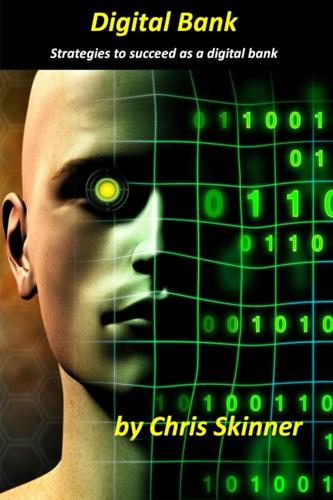
Digital Bank: Strategies for Launching or Becoming a Digital Bank
by
Chris Skinner
Published 27 Aug 2013
In the same way, banks can use transaction data combined with search trends and other data to predict and then proactively offer service in real time. That service might be offering car loans as you drive by the showroom of the BMW dealership you happened to be Googling last night or mortgages as you drive towards the real estate office of the broker you found. Now that’s all well and good, but it goes further than this as prediction marketing can now be embedded into the internet of things. For example, a few years ago the Metro store in Germany built a prototype of the grocery outlet of a few years ahead using NFC and RFID technologies. The concept store included the idea of dynamic pricing as you walk through the aisles, based upon your loyalty, shopping habits and more.
…
Like algorithmic trading in capital markets where algorithmic news feeds allow trading in equities to move in real-time high frequency blackbox strategies that maximise returns, we’re talking of applying the same technologies to retail transaction services for customer loyalty and wallet share. That’s the battle about to begin as we move from managing data to using information as a competitive weapon and, at the core of predictive marketing is Big Data. If the battleground is augmented service, then Big Data is the weaponry to compete. What is Big Data? The term Big Data stems from the Second World War, when the phrase Big Science was used to describe the rapid cycle of changes that occurred in scientific disciplines during and after World War II.
…
If you search for pricing TVs, they might offer you a special deal with a retailer’s discount code. If you don’t think that Google Analytics are the key to predictive, proactive marketing, just checkout the results of research of three academics who find that Google predicts stock market movements pretty accurately: “Debt” was the most reliable term for predicting market ups and downs, the researchers found. By going long when “debt” searches dropped and shorting the market when “debt” searches rose, the researchers were able to increase their hypothetical portfolio by 326 percent. (In comparison, a constant buy-and-hold strategy yielded just a 16 percent return.)[24] In the same way, banks can use transaction data combined with search trends and other data to predict and then proactively offer service in real time.

Future Files: A Brief History of the Next 50 Years
by
Richard Watson
Published 1 Jan 2008
Interestingly, the technology does not need any power to display the type unless the “page” is turned, so up to 20 books can be read before the reader needs recharging. I’d expect Apple to launch something similar, not least because the iTunes music-store model could easily be adapted to e-books rather than the current audiobooks. Prediction marketing Given how much the advertising industry goes on about creativity and strategy, it’s ironic that the big agencies have been so slow to embrace the brave new world of digital media. Perhaps this is because many prefer to kid themselves that they are in the movie business, or maybe many are still in denial about losing the strategic high ground to management consultancies.
…
Localization will also involve placing “real” car ads inside virtual street-racing games when your virtual car is off the road, or triggering a short animation on a washing-powder pack when you pass by the packs in the supermarket and they recognize you as a lapsed user. Call this “now marketing” or prediction marketing if you like. However, it would be a mistake to assume that the internet will take over from old media entirely. The internet is primarily a place where people go to find information or entertainment, or other like-minded individuals. This means that advertising will be repackaged to look like information or entertainment and it will be used to facilitate conversations between the people who know about things (such as brands) and the people who don’t.
…
Workforces will also become more balanced. There will be a greater spread of ages, more ethnic diversity and more women in the workforce, the latter significantly contributing to a shift away from the white middle-aged alpha male culture that has Work and Business 277 been dominant for so long. Decisions will be made using prediction markets and innovation will be run using open or distributed innovation principles. Work/life balance Instead of working less and enjoying a leisure society, we are working more. We are also commuting for longer periods. Being busy is a modern mark of prestige. This will all change. The open-all-hours work culture will be challenged by parents seeking more time with their kids and there will be law suits and regulation concerning the social costs of long work hours.
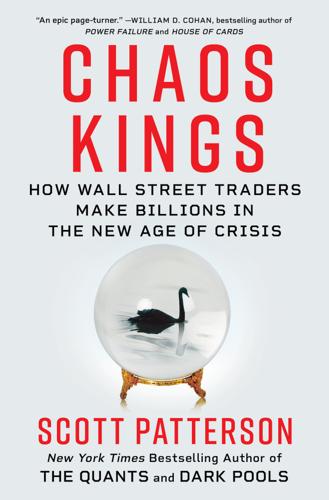
Chaos Kings: How Wall Street Traders Make Billions in the New Age of Crisis
by
Scott Patterson
Published 5 Jun 2023
Federal Reserve has been addicted to blowing bubbles for decades, creating dry tinder for crash after crash. Neither Spitznagel nor Taleb claim to know when the crashes will happen. As Spitznagel wrote in a 2020 letter to investors, “There are no crystal balls!” Not everyone agrees that it is impossible to predict market crashes, however. A growing breed of mathematicians, many of whom are steeped in a fiendishly arcane branch of science called complexity theory, practiced by brainiacs such as Taleb’s friend Yaneer Bar-Yam, have claimed they can detect certain signals in the market’s noise that auger collapse.
…
Sornette was predicting a much bigger crash, one that would have delivered a 10,000 percent gain. They held on, waiting for more turmoil. It didn’t happen. In fact, the market rallied the following day and soon the freak crash of October 27 was a distant memory. Sornette subsequently discovered that he could also apply his method to predict market rallies off of bear-market lows, what he called an “anti-bubble” of irrationally low prices. In January 1999, he forecast that the Nikkei index would soon recover from some fourteen years of doldrums, rebounding by 50 percent by the end of that year—which it did. His financial research culminated in the 2003 book Why Stock Markets Crash: Critical Events in Complex Financial Systems.
…
Referring to the dot-com bubble, he said in an August 2002 speech in Jackson Hole, Wyoming: “As events evolved, we recognized that, despite our suspicions, it was very difficult to definitely identify a bubble until after the fact—that is, when its bursting confirmed its existence.” Wall Street has always been rife with visionaries claiming to have discovered hidden patterns in the market’s warp and weft. The Elliott wave principle, propagated in the early twentieth century by accountant Ralph Nelson Elliott, claimed to predict market cycles and trends by pinpointing extremes in prices and investor psychology. Such cycles, the theory goes, move in discernible waves that slosh up and down—bubbles and crashes. Sornette himself has said that his model in ways parallels Elliott waves. But while technical analysis had at times enjoyed short-term success, over the long run there was little evidence investors could use it to accurately predict the market.
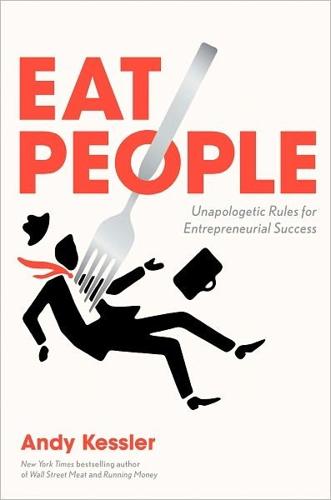
Eat People: And Other Unapologetic Rules for Game-Changing Entrepreneurs
by
Andy Kessler
Published 1 Feb 2011
But this is flawed in that people, not the market, set the actual cap or maximum amount of emissions, creating an almost artificial market for extra carbon credits to trade until the right price is set. The more human intervention overriding the market, the tougher true price discovery becomes. Lots of companies are playing around with prediction markets, using the Intelligence at the Edge and running surveys and varying pricing to figure out what people will pay for new products. Like it or not, markets will be inserted into more and more of our lives and Free Radicals ought to be the ones doing it, driving markets, making them happen everywhere.
…
Duke Power Grove, Andy Guns, Germs, and Steel (Diamond) Halstead, Maurice Halstead length Haves and Have-nots Health care the edge in personalized medicine Hedge funds, abundance, finding for Helú, Carlos Slim Henne, Albert Hersov, Rob Hewlett-Packard Hierarchy of needs Hoff, Ted Horizontal integration benefits of computers and voice communication and global economy and innovation and intellectual property ownership meaning of and price United States example How Capitalism Saved America (DiLorenzo) How We Got Here (Kessler) Hulu Humans, adapting technology to Hybrid autos IBM, vertical integration ICQ instant messaging Imperialism Income, generational differences Industrialization, and specialization Innovation, and horizontal integration Instant messaging, virtual pipe of Insurance companies, as Thieves Integration, horizontal Intel Intellectual property and horizontal integration and price cuts Intelligence (IQ), parameters of Intelligence at the edge cloud computing in health care social networking Interest rates, and Fed Internet digitized products, lack of protection of evolution of horizontal layers peer to peer (P2P) virtual pipes See also Networks; specific companies Internet stocks Investment capital, money/highest returns connection iPad iPhone iPod iTunes Jenkins, Holman Jobs Creators eliminating with technology licensed occupations replacing with technology Servers Slackers Slimers Sloppers Sponges Super Sloppers Thieves Jobs, Steve Junk bonds Kamangar, Salar Katzenberg, Jeffrey Keynes, John Maynard Kindle Kittler, Fred Kluge, John Lawyers, as Sponges Lehman Brothers bankruptcy Licenses, employment-related LinkedIn Livingston, Robert Longshoremen, as Sloppers McCaw, Craig McKnight, Dr. Jerry McNary, Robert Malone, John Maps, Google Market entrepreneurs Vanderbilt as example as winners Marketers, as Super Sloppers Markets benefits of for information for politics prediction markets price discovery by stock markets Mashups Maslow, Abraham Media defined empires, building of relationship to virtual pipe versus technology Media companies, vertical integration of Medicine, personalized Memory, chunks Mickos, Mårten Microcosm (Gilder) Microsoft employee interviews at Microsoft Word Midgley, Thomas Milken, Michael Mirabilis Money supply classic formula filled bucket comparison gold standard Monopoly, Vanderbilt fight against Moore, Gordon Moore’s law Mozilla Foundation Murdoch, Rupert Mushet, Robert Music, digital piracy virtual pipes for MySpace MySQL Nantell, Jim Napoleon Napster Needs, hierarchy of Netflix recommendations to customers Netscape Networks cloud computing dumb edge of network, intelligence at social networking See also Internet 99% Conference Nintendo Novelists, compared to programmers Noyce, Bob Nudge (Thaler and Sunstein) Obama, Barack Obama, Michelle Ofoto Open-source software Oracle Organic foods Organizational charts Orman, Suze O’Rourke, P.
…
Outliers (Gladwell) Page, Larry Palm Pre Pandora Peer to Peer (P2P) Personal Genome Project Personalized technology, examples of Physicians, as Thieves Pipes. See Virtual pipe Piracy, of digital products Pirate Bay Political entrepreneurs becoming examples of failure of media moguls as operation of Sponges created by Prague Stock Exchange Prediction markets Prevailing wage laws Price, and horizontal integration Procter & Gamble Productivity defined jobs, eliminating with technology wealth accumulation with. See Productivity and wealth Productivity and wealth Creators of economic principles and efficiency and exceptionalism guaranteed profits and horizontal integration jobs, hierarchy of jobs, replacing with technology and money supply non-productive workers, types of workweek over time Profit as business driver.

The Economic Singularity: Artificial Intelligence and the Death of Capitalism
by
Calum Chace
Published 17 Jul 2016
But for now, Ford's reading of the omens seems to me little better than fortune telling with entrails or tarot cards.” Having unburdened himself of this cynicism, Hanson proceeds to offer a constructive suggestion. He advocates forecasting by means of prediction markets, where people place bets on particular economic or policy outcomes, like the level of unemployment at some future date. He argues that prediction markets give us a financial stake in being accurate when we make forecasts, rather than just trying to look good to our peers. Tyler Cowen A professor at George Mason University and co-author of an extremely popular blog, Tyler Cowen was New Jersey's youngest ever chess champion.
…
We should be employing economists and others to monitor the available data for signs of technological unemployment, and devising new ways to detect it. The economist Robin Hanson thinks that machines will eventually render most humans unemployed, but that it will not happen for many decades, probably centuries. Despite this scepticism, he proposes an interesting way to watch out for the eventuality: prediction markets. People make their best estimates when they have some skin in the forecasting game. Offering people the opportunity to bet real money on when they see their own jobs or other peoples’ jobs being automated may be an effective way to improve our forecasting.[cccliv] Planning We don’t have sufficient information to draw up detailed plans for the way we would like our economies and societies to evolve.
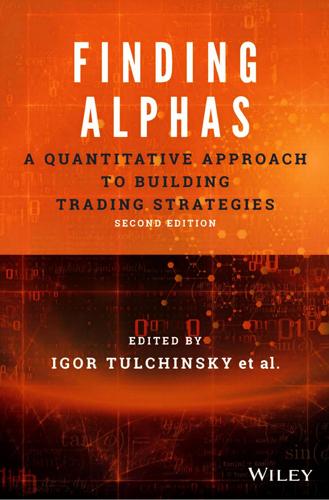
Finding Alphas: A Quantitative Approach to Building Trading Strategies
by
Igor Tulchinsky
Published 30 Sep 2019
What is the best way to deal with myriad shifting rules, all of them imperfect, many of them conflicting, based on different sets of circumstances and assumptions? Trading is a microcosm of reality, a dynamic environment of profound complexity in which millions of participants act and react based on rules and beliefs that in turn feed back into and affect the larger environment. The challenge in trading is to derive rules that describe and predict markets, then to use them successfully to earn profits, without changing those markets in ways that might result in the destruction of the rule itself. We represent trading rules as alphas, algorithms that seek to predict the future of securities returns. Managing millions of alphas, each reflecting some hypothesis about the markets, is a complicated matter and a subject unto itself.
…
Containing systematic biases, by contrast, requires a sustained commitment of time and technological sophistication to ferret out look-ahead bias and overfitting. 11 The Triple-Axis Plan By Nitish Maini The world of quantitative investing is growing extremely rapidly. Quants are developing new ways of predicting market fluctuations by using mathematics, computer programming, and an ever-proliferating array of datasets. Discovering new alphas can be a formidable challenge, however, particularly for new quants. An efficient exploration of the vast universe of possible alphas – what we call the alpha space – requires a structured strategy, an anchoring point, and an orientation technique, otherwise known as the Triple-Axis Plan (TAP).
…
The answer depends partly on the size and pricing power of firms to lower trading and borrowing costs as much as possible to mimic the investment bank setup. Typically, only the largest hedge fund firms or active managers with related broker-dealer entities had the potential ability to negotiate such advantageous deals. Some segments of the overall index arbitrage strategy, however, such as predicting market impact for certain indices, can be implemented by active managers without necessarily requiring a large balance sheet. MARKET IMPACT FROM INDEX CHANGES Besides being a popular ETF to short, the IWM fund is reconstituted annually, causing some market impact on its constituents and former constituents compared with other sought-after ETFs.
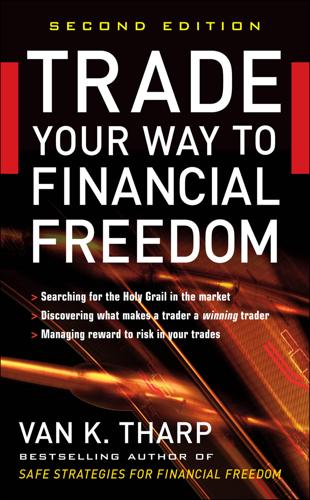
Trade Your Way to Financial Freedom
by
van K. Tharp
Published 1 Jan 1998
THERE’S AN ORDER TO THE UNIVERSE The idea that there is an order to the universe is extremely popular. People want to understand how the markets work, so it is most appealing to them to find some underlying structure. They believe, of course, that once you know the underlying structure, you can predict market movements. In many cases, such theories are even more exact because they attempt to predict market turning points. This naturally appeals to the psychological bias that most people have of wanting to be right and to have control over the markets. As a result, they want to catch market turning points. In addition, it’s a highly marketable idea to sell to the public.
…
In contrast, low periods of sunspot activity seem to correlate with what might be termed declines in civilization. Obviously, if such a theory is valid and if sunspot activity is predictable, then one would expect sunspot activity to have a strong effect on what happens in the market. There are numerous attempts to correlate and predict markets based upon major physical systems such as the activity of the sun. It is very easy to put together enough best-case examples to prove to others—or yourself—that these theories are correct. I’ve seen it happen hundreds of times because there is a simple perceptual bias that will convince people of certain relationships from just a few well-chosen examples.
…
Furthermore, certain “magical” societies and sects seem to carry this notion forward. The work of W. D. Gann, as currently promoted by many of his followers, is based on mathematical orderliness. Mathematical orderliness theories make two key assumptions: (1) that certain numbers are more important than others in predicting market turning points, and (2) that these numbers are important both in terms of price levels and in terms of time (that is, when to expect a change in the market). For example, suppose you believed that 45, 50, 60, 66, 90, 100, 120, 135, 144, 618, and so on, were magic numbers. What you’d do is find “significant” tops or bottoms and apply these numbers to them—looking at both time and price.
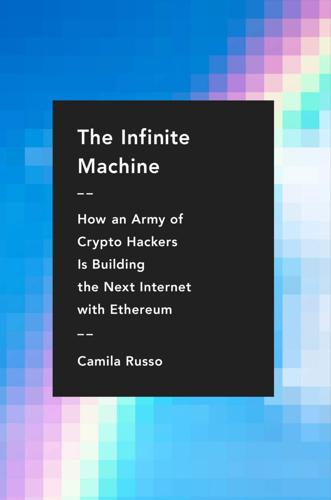
The Infinite Machine: How an Army of Crypto-Hackers Is Building the Next Internet With Ethereum
by
Camila Russo
Published 13 Jul 2020
Frustrated with the idea that Bitcoin was just digital gold, he joined efforts to build applications on top of the Bitcoin protocol. As is usual with crypto projects, he came together with like-minded coders scattered all over the globe but brought together on the internet. He came across academic papers that talked about decentralized prediction markets but found that nobody had tried to implement them. Joey loved that he could potentially build a parallel financial system where anyone could create derivatives contracts on essentially anything—from speculations on the price of gold to who would win the US presidential election. Unlike past centralized experiments, these couldn’t be shut down.
…
But then First Blood, an online gaming company selling tokens to be used as rewards within its games, capped its September 26 ICO at $5.5 million. The sale was over in five minutes. A company that was less than a year old was able to raise more than $1 million per minute. Ethereum’s crowdsale had taken about two months; the sale for Joey Krug’s prediction market Augur took about a month; DigixDAO, the project that wanted to tie tokens to gold bars, had its sale in less than a day; and First Blood’s took five minutes. They had all raised at least $5 million. During the second week of November, Taylor was ready to spend some extra time working on MyEtherWallet from her LA home.
…
Web 3 dream a reality: Gavin Wood, “The Last Blog Post,” Ethereum Foundation Blog, January 11, 2016, https://blog.ethereum.org/2016/01/11/last-blog-post/. 18: The First Dapps 1. Ethereum smart contracts: Jack Peterson, Joseph Krug, Micah Zoltu, Austin K. Williams, and Stephanie Alexander, “Augur: A Decentralized Oracle and Prediction Market Platform (v2.0),” November 1, 2019, https://www.augur.net/whitepaper.pdf. 2. he wrote on GitHub: Vitalik Buterin, “Standardized_Contract_APIs,” GitHub, June 23, 2015, https://github.com/ethereum/wiki/wiki/Standardized_Contract_APIs/499c882f3ec123537fc2fccd57eaa29e6032fe4a. 3. with their thoughts: Alex Van de Sande, “Let's talk about the coin standard,” Reddit, 2015, https://www.reddit.com/r/ethereum/comments/3n8fkn/lets_talk_about_the_coin_standard/. 4. issue being discussed: Fabian Vogelsteller, “ERC: Token standard #20,” GitHub, November 19, 2015, https://github.com/ethereum/EIPs/issues/20. 5. ended up implementing: Rune Christensen, “Introducing eDollar, the ultimate stablecoin built on Ethereum,” Reddit, 2015, https://www.reddit.com/r/ethereum/comments/30f98i/introducing_edollar_the_ultimate_stablecoin_built/. 6. companies to build on: Jeff Wilcke, “Homestead Release,” Ethereum Foundation Blog, February 29, 2016, https://blog.ethereum.org/2016/02/29/homestead-release/. 7. world had Ethereum: Gavin Andresen, “Bit-thereum,” GavinTech (blog), June 9, 2014, http://gavintech.blogspot.com/2014/06/bit-thereum.html. 19: The Magic Lock 1.
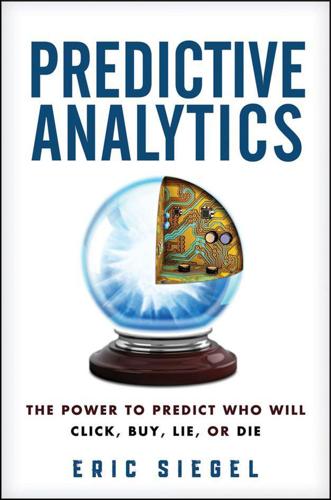
Predictive Analytics: The Power to Predict Who Will Click, Buy, Lie, or Die
by
Eric Siegel
Published 19 Feb 2013
Moreover, we no longer need to take on the challenging task of identifying the best person for the job. It doesn’t matter which person is smartest. A diverse mix best does the trick. The collective intelligence of a crowd emerges on many occasions, as explored thoroughly by James Surowiecki in his book The Wisdom of Crowds. Examples include: Prediction markets, wherein a group of people together estimate the prospects for a horse race, political event, or economic occurrence by way of placing bets (unfortunately, this adept forecasting method cannot usually scale to the domain of PA, in which thousands or millions of predictions are generated by a predictive model).
…
MultiCare Health System (four hospitals in Washington): Karen Minich-Pourshadi for HealthLeaders Media, “Hospital Data Mining Hits Paydirt,” HealthLeaders Media Online, November 29, 2010. www.healthleadersmedia.com/page-1/FIN-259479/Hospital-Data-Mining-Hits-Paydirt. Medical centers and healthcare providers: Customer Potential Management Marketing Group, “Predictive Market Segmentation in Healthcare: Increasing the Effectiveness of Disease Prevention and Early Intervention,” CMP White Paper, CiteSeerxB Online, January 14, 2002. http://citeseerx.ist.psu.edu/viewdoc/summary?doi=10.1.1.134.756. Blue Cross Blue Shield of Tennessee: Rick Whiting, “Businesses Mine Data to Predict What Happens Next,” InformationWeek, May 29, 2006. www.informationweek.com/businesses-mine-data-to-predict-what-hap/188500520.
…
See crime prediction for law enforcement politics, PA for See also electoral politics Portrait Software Post hoc, ergo propter hoc Power of Habit: Why We Do What We Do in Life and Business (Duhigg) PragmaticTheory team prediction benefits of choosing what to predict collective obsession with future predictions good vs. bad limits of organizational learning and prediction, effects of and on about Data Effect, The Ensemble Effect, The Induction Effect, The Persuasion Effect, The Prediction Effect, The Prediction Effect, The prediction markets predictive analytics. See PA (predictive analytics) Predictive Analytics World (PAW) conferences predictive models defined marketing models overlearning and assuming response modeling response uplift modeling univariate vs. multivariate See also ensemble models predictive models, launching about action and decision making causality and deployment phase Elder’s success in going live machine learning and building observation and personalization and risks in uplift modeling predictive technology See also machine learning predictor variables pregnancy and birth, predicting customer pregnancy and buying behavior premature births prejudice, risk of PREMIER Bankcard privacy Google policies on insight vs. intrusion regarding predicted consumer data and profiling customers Progressive Insurance psychology emotions, cause and effect of Freud on emotions predictive analysis in schizophrenia, predicting psychopathy, predicting Psych (TV show) purchases, predicting Q Quadstone R Radcliffe, Nicholas Radica Games Ralph’s random forests Rebellion Research recency recidivism prediction for law enforcement recommendation systems Reed Elsevier reliability modeling REO Speedwagon (band) response modeling drawbacks of examples of targeted marketing with response rates response uplift modeling retail websites, behavior on retirement, health and Richmond (VA) Police Department Rio Salado Community College Riskprediction.org.uk risk management risk scores Risky Business (film) Robin, Leo Romney, Mitt Royal Astronomy Society R software Russell, Bertrand Rutter, Brad S Saaf, Randy safety and efficiency, PA for Safeway sales leads, predicting Salford Systems Salsburg, David Santa Cruz (CA) Police Department sarcasm, in reviews Sartre, Jean-Paul SAS satellites, predicting fault in satisficing Schamberg, Lisa schizophrenia, predicting Schlitz, Don Schmidt, Eric Schwartz, Ari Science magazine security levels, predicting self-driving cars Selfridge, Oliver Semisonic (band) sepsis, predicting Sessions, Roger Shakespeare, William Shaw, George Bernard Shearer, Colin shopping habits, predicting sickness, predicting Siegel, Eric silence, concept of Silver, Nate Simpsons, The (TV show) Siri Sisters of Mercy Health Systems small business credit risks Smarr, Larry smoking and smokers health problems and causation for motion disorders and social effect and quitting SNTMNT Sobel, David social computing social effect social media networks data glut on happiness as contagious on healthcare LinkedIn PA for spam filtering on Twitter viral tweets and posts on YouTube See also Facebook sociology, uplift modeling applications for SpaceShipOne spam filtering Spider-Man (film) sporting events, crime rates and sports cars Sprint SPSS staff behavior.

The Wisdom of Crowds
by
James Surowiecki
Published 1 Jan 2004
Neumann, and Jack Wright, “Anatomy of an Experimental Political Stock Market,” American Economic Review 82 (1992): 1142–61; and Joyce Berg, Forrest Nelson, and Thomas Rietz, “Accuracy and Forecast Standard Error of Prediction Markets,” Tippie College of Business mimeo (2001), http://www.biz.uiowa.edu/iem/archive/forecasting.pdf. The IEM Web site has a page with links to research into the potential efficacy of prediction markets: http://www.biz.uiowa.edu/iem/archive/references.html. One important thing to note is that most of these papers, while they document the relative accuracy of the IEM’s forecasts, offer a different explanation for that accuracy than the one I offer here.
…
NetExchange was careful to make clear that the goal of the market would not be to predict terrorist incidents but rather to forecast broader economic, social, and military trends in the region. So perhaps the promise of PAM will actually get tested against reality, instead of being dismissed out of hand. It also seems plausible, and even likely, that the U.S. intelligence community will eventually return to the idea of using internal prediction markets—limited to analysts and experts—as a means of aggregating dispersed pieces of information and turning them into coherent forecasts and policy recommendations. Perhaps that would mean that the CIA would be running what Senators Wyden and Dorgan scornfully called “a betting parlor.” But we know one thing about betting markets: they’re very good at predicting the future. 5.
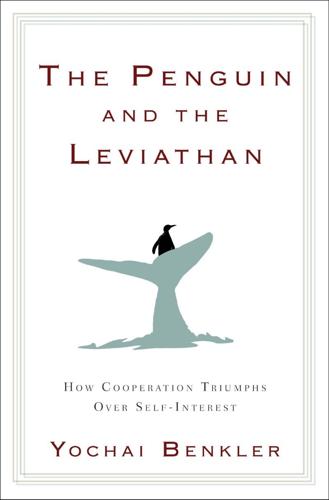
The Penguin and the Leviathan: How Cooperation Triumphs Over Self-Interest
by
Yochai Benkler
Published 8 Aug 2011
Because talk is supposedly “cheap” in this sense—it doesn’t commit you to anything—a whole strand of work in economics has developed to place people in situations where they have to actually act, rather than talk: buy or not buy, invest or not invest, as this is assumed to be the only way to reveal their true preferences. That’s what prediction markets, which have become so popular in the run-up to elections, for example, do; prediction markets are speculative markets—betting exchanges—created to make predictions. They are just one example of a field called “mechanism design,” built on the assumption that it is not what people say, but what they do, that counts. It has been so influential that it won its inventors the Nobel Prize in economics in 2007.
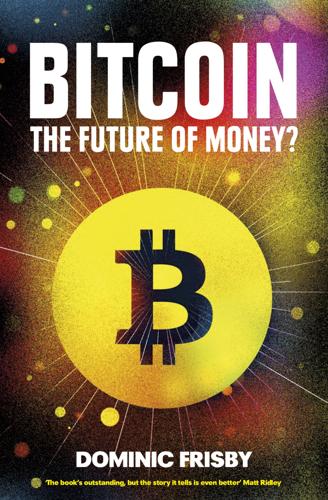
Bitcoin: The Future of Money?
by
Dominic Frisby
Published 1 Nov 2014
What we did with Ethereum is we kind of unified a lot of the 2.0 actors and put them into a big bucket and we’re building a completely new block chain and we’re building a completely new scripting language that basically adds in those missing features. ‘The end result is you can do things now like have Wall Street on a block chain. So any financial contract that you would see in Wall Street can now be put on a block chain just like money can. You can do prediction markets. You can have a Las Vegas gambling system living on a block chain. You can also take traditional server client internet apps like YouTube or Facebook or Netflix and you can actually now make all of these services run in a decentralized way with no central actor controlling them. You can do decentralized Dropbox, so instead of having all your files stored on a server; you can actually store them in a decentralized network and instead provide them with a token system just like Bitcoin.
…
Both the DVLA and the Land Registry badly need to pull their socks up, particularly the latter – 50% of land in the UK is still unregistered). This system of ownership and smart contracts has the potential to dramatically transform the legal system and slash costs. As we’ve suggested, insurance can be put on a block chain, prediction markets, and identity systems (username and password systems are on their way out), even services like Facebook, YouTube or Netflix. Why would you want YouTube, Facebook or Netflix running in a decentralized way with no central body in charge? It eliminates the problem of excessive personal information on Facebook, or your YouTube viewing habits being monitored and marketed to.
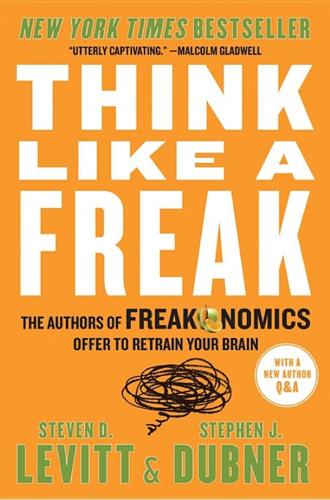
Think Like a Freak
by
Steven D. Levitt
and
Stephen J. Dubner
Published 11 May 2014
All the team leaders were then asked to pick one of three signals—a green light, yellow light, or red light—to indicate their confidence in an on-time opening. All seven of them picked the green light. Great news! As it happens, this firm had also set up an internal prediction market, where any employee could anonymously place a small bet on various company directives. One bet asked whether the Chinese store would open on time. Considering that all seven team leaders had given it a green light, you might expect bettors to be similarly bullish. They weren’t. The prediction market showed a 92 percent chance the store wouldn’t open on time. Guess who was right—the anonymous bettors or the team leaders who had to stand in front of their bosses?

The Intelligent Asset Allocator: How to Build Your Portfolio to Maximize Returns and Minimize Risk
by
William J. Bernstein
Published 12 Oct 2000
I am continually amazed at the amount of time the financial and mass media devote to well-regarded analysts attempting to divine the movements of the market from political and economic events. This is a fool’s errand. Almost always these analysts are the employees of large brokerage houses; one would think that these organizations would tire of looking foolish on so regular a basis. (If you are not convinced of the futility of trying to predict market direction from economic conditions, then consider that the biggest money is made by buying when things look the bleakest: 1932, 1937, 1975, and 1982 were all great times to buy stocks. Then consider that the most dangerous times to buy or own stocks is when there is plenty of economic blue sky; those who bought in 1928, 1936, or 1966 were soon sorry.)
…
Prolonged market declines will make rebalancing seem a frustrating waste of money; in the end, however, asset prices almost always turn around, and you usually will be rewarded handsomely for your patience. 7. The markets are smarter than you are; they are also smarter than the experts. Remember that a stopped clock is right twice a day. Even the most inept analyst occasionally makes a good call, and he will probably be interviewed by Lou Rukeyser soon after he has made it. Nobody consistently predicts market direction. Very few money managers beat the market in the long run; those that have done so in the recent past are unlikely to do so in the future. Do not run with the crowd; those who follow the elephant herd often get dirty and squashed. 8. Know how expensive the tomatoes are. Keep an eye on market valuation.
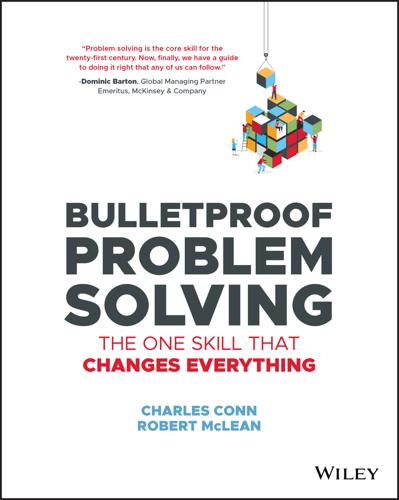
Bulletproof Problem Solving
by
Charles Conn
and
Robert McLean
Published 6 Mar 2019
If you are solving your problem solo, find a way to brainstorm your ideas with a diverse range of others, insiders and outsiders, at each stage of the process. Phillip Tetlock's work on forecasting shows that teams always outperform individuals in this form of problem solving, even very high‐performing solo practitioners. And the best superforecasting teams even beat crowd‐sourcing and prediction markets.5 Always try multiple trees/cleaves: Even when a problem seems perfectly designed for your favorite framework, try multiple cleaving frames to see what different questions and insights emerge. When we decided to look at obesity as a wicked problem, discussed in Chapter 9, we had a team meeting where we tried out various alternative‐cleaving frames.
…
Broaden your data sources: In every area of life, individual/workplace/society, there are core government and private data sets that everyone has access to. Sometimes these are terrific, but everyone has them, including your competitors, and there are often methodological issues in their collection. It is worth considering whether there are options for crowd sourcing alternative data, whether prediction markets cover your topic or could be induced to, or whether your interest area is amenable to some form of A|B testing or randomized controlled trials. Custom data collection costs have come down substantially and new data sets can yield insights very different from the obvious mainstream analyses.
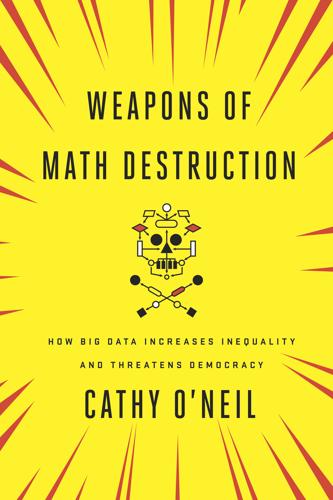
Weapons of Math Destruction: How Big Data Increases Inequality and Threatens Democracy
by
Cathy O'Neil
Published 5 Sep 2016
Made in a Free World: Issie Lapowsky, “The Next Big Thing You Missed: Software That Helps Businesses Rid Their Supply Chains of Slave Labor,” Wired, February 3, 2015, www.wired.com/2015/02/frdm/. Eckerd, a child and family services nonprofit: Darian Woods, “Who Will Seize the Child Abuse Prediction Market?,” Chronicle for Social Change, May 28, 2015, https://chronicleofsocialchange.org/featured/who-will-seize-the-child-abuse-prediction-market/10861. Boston Globe: Michael Levenson, “Can Analytics Help Fix the DCF?,” Boston Globe, November 7, 2015, www.bostonglobe.com/2015/11/07/childwelfare-bostonglobe-com/AZ2kZ7ziiP8cBMOite2KKP/story.html. ABOUT THE AUTHOR Cathy O’Neil is a data scientist and the author of the blog mathbabe.org.
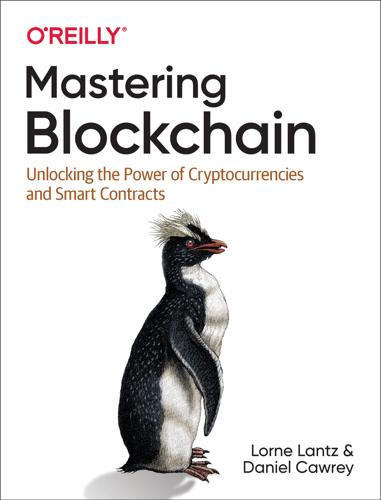
Mastering Blockchain: Unlocking the Power of Cryptocurrencies and Smart Contracts
by
Lorne Lantz
and
Daniel Cawrey
Published 8 Dec 2020
A Swiss-based nonprofit foundation was created to initiate the ICO, and starting in July 2014, for 42 days Ethereum conducted a crowdsale. Approximately 60 million ether tokens were sold, raising some 31,000 BTC (around $18 million at the time). This became the template for many other ICOs in the future. Gnosis A decentralized prediction market platform, Gnosis shares some concepts and some personnel with the Augur project, an early Ethereum-based offering that had its ICO in 2015. The Gnosis multisignature wallet is still one of the most widely used in the Ethereum ecosystem, especially for applications such as cold storage of tokens.
…
Projects with long-term viable token economies are usually able to articulately answer the following questions: Why does this product/service have to be on a blockchain? Why can’t you provide the same thing through a centralized database? Most token projects cannot answer this question well and therefore have poor token economics. An example of a product/service that has to be on a blockchain is the Augur token (REP). Augur is a prediction market that requires regulatory scrutiny in many jurisdictions. If Augur were run on a centralized server, there would be increased capability to shut down the service by seizing the server. Note Motivations for those running an ICO are often not the same as for those running or investing in a venture capital–backed startup company.
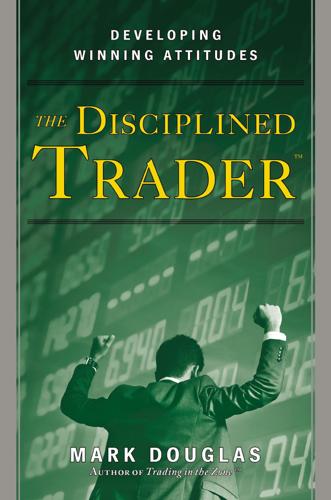
The Disciplined Trader: Developing Winning Attitudes
by
Mark Douglas
Published 1 Jan 1990
Many traders will try to circumvent confronting these limiting beliefs by becoming an expert market analyst. It doesn't matter how good a market analyst you become; if you don't release yourself from the effects of these beliefs, you won't be successful to the extent these limiting beliefs have power in your mental system. There are many market gurus who can predict market moves with uncanny accuracy but can't make money as a trader. Either they don't know the nature of beliefs and how they affect and determine behavior, or they don't want to confront the issues surrounding these beliefs. You have to want to do it or nothing will happen. And if you choose not to, you will be subjecting yourself to the same recurring cycles of negative experiences again and again until you either decide to work through whatever issues are necessary or lose all your money and have to give it up.
…
You will experience that past regardless of the opportunities the environment may have to offer in that same moment. Your individual history will repeat itself until you change your history, which will then allow you to learn and experience something new. Evolving beyond your fears is also the best way to learn how to predict market behavior. The more fearful traders are, the fewer the choices they perceive as available to themselves and the easier it is to predict their behavior. You will be able to recognize this clearly in others when you recognize it yourself and work your way out of the condition where you trade with fear.
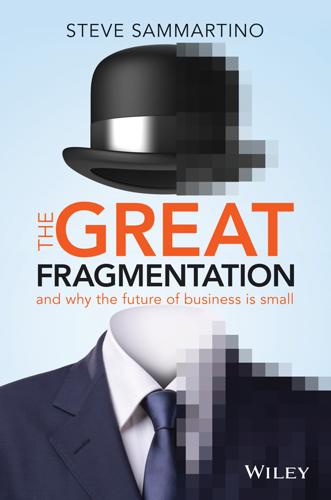
The Great Fragmentation: And Why the Future of All Business Is Small
by
Steve Sammartino
Published 25 Jun 2014
The market doesn’t care when you finished school Getting your digital on It’s not my job Welcome to med school Note Chapter 5: Rehumanisation: words define our future Dead-end products A future of unfinished products The malleable marketplace Corporate skulduggery? Outsourcing logic The end of bison hunting The tastemakers The selfish era So how do we survive? Creative types Collaboration, creative orientation and counter intuition Note Chapter 6: Demographics is history: moving on from predictive marketing How to get profiled The price of pop culture The best average The weapon of choice Don’t fence me in How do you define a teenager? Stealing music or connecting? Marketing 1.0 Marketing revised The new intersection Social + interests = intention The story of cities Do I know you?
…
Corporations have to start acting more like people and less like evil organisms with their own agenda. Note 1 Driverless car prediction dates by various respected auto and technology firms: www.driverless-future.com/?page_id=384 CHAPTER 6 Demographics is history: moving on from predictive marketing If you learned your marketing trade any time in the past 60 years, there’s a very good chance a large part of what you learned was related to demographic profiling, the statistical art of putting people into behaviour buckets. These were clusters created to define what people believe and how they’re likely to behave so that they could be ‘targeted’ with financial efficiency.
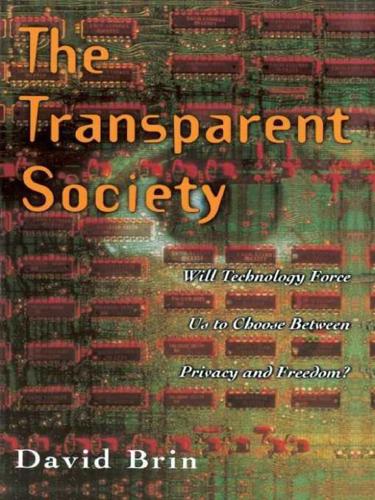
The Transparent Society: Will Technology Force Us to Choose Between Privacy and Freedom?
by
David Brin
Published 1 Jan 1998
.: Addison-Wesley, 1994), and Edward Tenner. Why Things Bite Back (New York: Knopf, 1996). 267 ... a “predictions market” ... University of California economist Robin Hanson calls his system a “betting pool on disputed science questions, where the current odds-on favorites are treated as the current intellectual consensus. Ideas futures markets let you bet on the future settlement of a scientific controversy. [See http://www.ideosphere.com/ and http://hanson.berkeley.edulideafutures.html.] But the method may have wider applications.” Note: a form of predictions market was depicted in John Brunnerʼs wonderfully prescient science fiction novel The Shockwave Rider in 1974, a work that illustrated principles of transparency and also invented the terminology, possibly the very concepts, of computer “viruses” and “worms.” 267 ...
…
In the 1970s, efforts were made to catalog predictions using the crude technique of mailing postcards to a post office box in New York City, but sorting through shoe boxes did not prove an efficient or comprehensive method of correlating results, and the effort collapsed. The Internet has changed all that. For example, a “predictions market” has been set up by Robin Hanson, a researcher at the University of California at Berkeley. In his Web space, visitors bet against each other about future trends in science, much like Vegas odds makers, or gamblers on the Chicago commodities exchange. Winners are those whose guesses (or sage insights) prove correct most often.
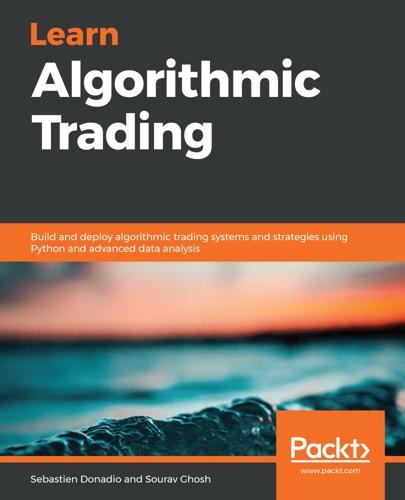
Learn Algorithmic Trading
by
Sebastien Donadio
Published 7 Nov 2019
This section comprises the following chapters: Chapter 4, Classical Trading Strategies Driven by Human Intuition Chapter 5, Sophisticated Algorithmic Strategies Chapter 6, Managing Risk in Algorithmic Strategies Classical Trading Strategies Driven by Human Intuition During the previous chapters, we used statistical methods to predict market price movement from historical data. You may think that you know how to manipulate data, but how can these statistical techniques be applied to real trading? After spending so much time working on data, you may also want to know some key trading strategies that you can apply to make money. In this chapter, we will talk about basic algorithmic strategies that follow human intuition.
…
To summarize, since market participants are continuously evolving and new participants enter the market and existing participants leave the market, it is possible for us to lose those participants that provide the trading signals that we use in our trading strategies. To deal with this, we have to constantly search for new trading signals and diversify trading signals and strategies to capture more market participants' intentions and predict market price moves. Profit decay due to discovery by other participants We discussed the possibility of and the impact of other market participants discovering our trading signals and using the same signals that our trading strategies utilize to make money. Similar to other market participants discovering the same trading signals that our trading strategies use and hurting our profitability, it is possible for other market participants to discover our order flow and strategy behavior and then find ways to anticipate and leverage our trading strategy's order flow to trade against us in a way that causes our trading strategies to lose money.
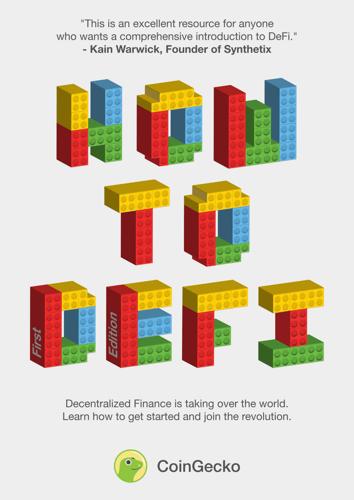
How to DeFi
by
Coingecko
,
Darren Lau
,
Sze Jin Teh
,
Kristian Kho
,
Erina Azmi
,
Tm Lee
and
Bobby Ong
Published 22 Mar 2020
Appendix CoinGecko's Recommended DeFi Resources Information DeFi Prime - https://defiprime.com/ DeFi Pulse - https://defipulse.com/ DeFi Tutorials - https://defitutorials.com/ LoanScan - http://loanscan.io/ Newsletters Bankless - https://bankless.substack.com/ DeFi Tutorials - https://defitutorials.substack.com/ DeFi Weekly - https://defiweekly.substack.com/ Dose of DeFi - https://doseofdefi.substack.com/ Ethhub - https://ethhub.substack.com/ My Two Gwei - https://mytwogwei.substack.com/ The Defiant - https://thedefiant.substack.com/ Week in Ethereum News - https://www.weekinethereumnews.com/ Podcast BlockCrunch - https://castbox.fm/channel/Blockcrunch%3A-Crypto-Deep-Dives-id1182347 Chain Reaction - https://fiftyonepercent.podbean.com/ Into the Ether - Ethhub - https://podcast.ethhub.io/ PoV Crypto - https://povcryptopod.libsyn.com/ Wyre Podcast - https://blog.sendwyre.com/wyretalks/home Youtube Chris Blec - https://www.youtube.com/c/chrisblec Bankless Level-Up Guide https://bankless.substack.com/p/bankless-level-up-guide Projects We Like Too Dashboard Interfaces DeFi Prime Portfolio - http://portfolio.defiprime.com Frontier - https://frontierwallet.com/ InstaDApp - https://instadapp.io/ MyDeFi - https://mydefi.org/apps Zerion - https://zerion.io/ Decentralized Exchanges Bancor - https://www.bancor.network/ Curve Finance - https://www.curve.fi/ Dex Blue https://dex.blue/ Kyber - https://kyberswap.com/swap Exchange Aggregators 1inch - https://1inch.exchange/ Dex.ag - https://dex.ag/ Paraswap - https://paraswap.io/ Lending and Borrowing Dharma - https://www.dharma.io/ Prediction Markets Augur - https://www.augur.net/ Taxes TokenTax - https://tokentax.co/ Wallet GnosisSafe - https://safe.gnosis.io/ Monolith - https://monolith.xyz/ Yield Optimisers Iearn - https://iearn.finance/ RAY - https://staked.us/v/robo-advisor-yield/ References Chapter 1: Traditional Financial Institutions Bagnall, E. (2019, June 30).
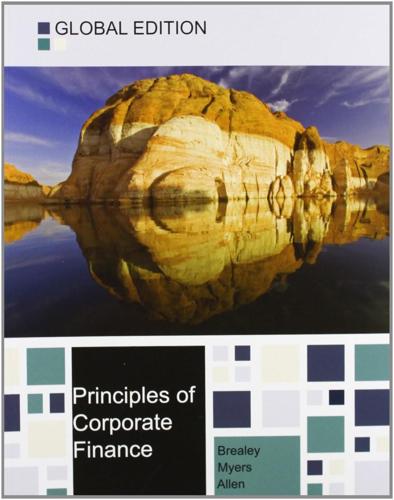
Principles of Corporate Finance
by
Richard A. Brealey
,
Stewart C. Myers
and
Franklin Allen
Published 15 Feb 2014
The nearby box shows how market prices reveal opinions about issues as diverse as a presidential election, the weather, or the demand for a new product. FINANCE IN PRACTICE ● ● ● ● ● Prediction Markets Stock markets allow investors to bet on their favourite stocks. Prediction markets allow them to bet on almost anything else. These markets reveal the collective guess of traders on issues as diverse as New York City snowfall, an avian flu outbreak, and the occurrence of a major earthquake. Prediction markets are conducted on the majorfutures exchanges and on a number of smaller online exchanges such as Intrade (www.intrade.com) and the Iowa Electronic Markets (www.biz.uiowa.edu/iem).
…
Investors, it seemed, had become increasingly pessimistic about the currency’s prospects. Participants in prediction markets are putting their money where their mouth is. So the forecasting accuracy of these markets compares favorably with those of major polls. Some businesses have also formed internal prediction markets to survey the views of their staff. For example, Google operates an internal market to forecast product launch dates, the number of Gmail users, and other strategic questions.* *Google’s experience is analyzed in B. Cowgill, J. Wolfers, and E. Zitzewitz, “Using Prediction Markets to Track Information Flows: Evidence from Google,” Working paper, Dartmouth College, January 2009 Lesson 4: There Are No Financial Illusions In an efficient market there are no financial illusions.
…
C., 277n Fisher, F., 509n Fisher, Irving, 62–63, 699n Fitch credit ratings, 65–66, 595, 628n Fitzpatrick, Dan, 4n Fixed-income market, 47 Fixed-rate debt, 357 Flat (clean) price, 48n FleetBoston, 812 Fleet Financial Group, 812 Floating charge, 626 Floating-price convertibles, 622 Floating-rate debt, 357, 588, 588n, 673–675 Floating-rate notes, 608 Floating-rate preferred stock, 797, 797n Floor, 608 Flow-to-equity method of valuing companies, 488 Forcing conversion, 618–619 Ford, Henry, 865, 865n Ford Credit, 472, 628 Ford Motor Company, 37, 172, 178–179, 194, 198, 302, 471, 472, 628, 712, 810, 865 Forecasts cash flow, 24–25, 107–108, 138, 488 earnings per share, 312–313 economic rents in, 278–288 market values in, 273–278 prediction markets, 338 Foreign bonds, 616–617 Foreign Credit Insurance Association (FCIA), 786 Foreign exchange risk, 693–710 basic relationships, 695–704 economic exposure, 705–706 foreign exchange market, 693–710 hedging currency risk, 704–706 international investment decisions, 706–710 transaction exposure, 705–706 Forelle, C., 551n Fortis, 367 Fortune Brands, 842 Forward contracts, 665 forward exchange rates, 694–695 forward market, defined, 694 forward rate agreements (FRAs), 672 homemade, 672 simple, 665 speculation in, 681–683 Forward exchange rates, 694–695 Forward interest rate, 672 Forward premium, 697 Forward prices, 665 Forward rate, expectations theory of, 699–700 Forward rate agreements (FRAs), 672 Forward rate of interest, 58n France compounding intervals in, 46–47 corporations in, 5n government bond valuation, 46–47 nominal versus real exchange rates, 701–703 ownership and control in, 869 Frank, M., 470n Franks, J.

The Truth Machine: The Blockchain and the Future of Everything
by
Paul Vigna
and
Michael J. Casey
Published 27 Feb 2018
The sense that something extraordinary had been unleashed was cemented in November 2016, when a site called Golem, which offered a platform for trading idle computer power (it billed itself as the “Airbnb for computers”), raised $8.6 million in half an hour. After that, money seemed to open up for anyone with a white paper and a token to sell. An initial high-water mark came in April 2017 when Gnosis, whose platform allows users to create prediction markets for betting on just about anything, sold 5 percent of the tokens created by the company to raise $12.5 million in twelve minutes. With the other 95 percent controlled by the founders, those prices meant that the implied valuation of the entire enterprise stood at $300 million—a figure that soon rose above $1 billion as the Gnosis token promptly quadrupled in price in the secondary market.
…
In an age when U.S. presidents peddle “alternative facts” and pundits talk openly about our “post-truth society,” using the truth machine to put a value on honesty sounds appealing. Already, the blockchain startup Augur is exploring these ideas. The firm has built a decentralized, cryptocurrency-based prediction market on top of Ethereum, where players place bets on an outcome of some event or other, the result of which depends on confirmation by certain individuals. Those confirming parties will bet their rep tokens that they are telling the truth, and if a majority agrees that they are, the system returns the tokens and pays them in cash.
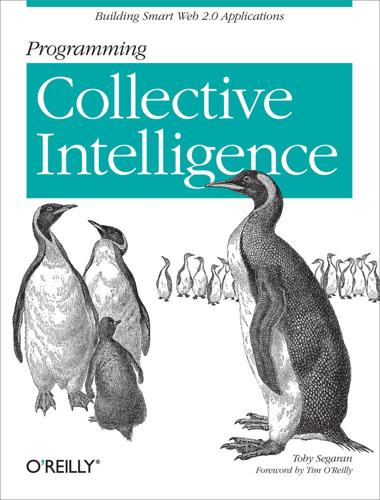
Programming Collective Intelligence
by
Toby Segaran
Published 17 Dec 2008
Sites like Amazon and Netflix use information about the things people buy or rent to determine which people or items are similar to one another, and then make recommendations based on purchase history. Other sites like Pandora and Last.fm use your ratings of different bands and songs to create custom radio stations with music they think you will enjoy. Chapter 2 covers ways to build recommendation systems. Prediction markets are also a form of collective intelligence. One of the most well known of these is the Hollywood Stock Exchange (http://hsx.com), where people trade stocks on movies and movie stars. You can buy or sell a stock at the current price knowing that its ultimate value will be one millionth of the movie's actual opening box office number.
…
, Learning from Clicks, Learning from Clicks, Setting Up the Database, Feeding Forward, Training with Backpropagation, Training Test, Training Test artificial, Learning from Clicks, Learning from Clicks, Setting Up the Database, Feeding Forward, Training with Backpropagation, Training Test, Training Test backpropagation, Training with Backpropagation connecting to search engine, Training Test designing click-training network, Learning from Clicks feeding forward, Feeding Forward setting up database, Setting Up the Database training test, Training Test neural network classifier, Exercises neural networks, Neural Networks, Neural Networks, Neural Networks, Neural Networks, Training a Neural Network, Training a Neural Network, Training a Neural Network, Strengths and Weaknesses, Strengths and Weaknesses backpropagation, and, Training a Neural Network black box method, Strengths and Weaknesses combinations of words, and, Neural Networks multilayer perceptron network, Neural Networks strengths and weaknesses, Strengths and Weaknesses synapses, and, Neural Networks training, Training a Neural Network using code, Training a Neural Network news sources, A Corpus of News newsfeatures.py, Selecting Sources, Downloading Sources, Downloading Sources, Downloading Sources, Converting to a Matrix, Using NumPy, The Algorithm, Displaying the Results, Displaying the Results, Displaying by Article, Displaying by Article getarticlewords function, Downloading Sources makematrix function, Converting to a Matrix separatewords function, Downloading Sources shape function, The Algorithm showarticles function, Displaying the Results, Displaying by Article showfeatures function, Displaying the Results, Displaying by Article stripHTML function, Downloading Sources transpose function, Using NumPy nn.py, Setting Up the Database, Setting Up the Database, Setting Up the Database, Setting Up the Database searchnet class, Setting Up the Database, Setting Up the Database, Setting Up the Database, Setting Up the Database generatehiddennode function, Setting Up the Database getstrength method, Setting Up the Database setstrength method, Setting Up the Database nnmf.py, The Algorithm difcost function, The Algorithm non-negative matrix factorization (NMF), Supervised versus Unsupervised Learning, Clustering, Non-Negative Matrix Factorization, Non-Negative Matrix Factorization, Non-Negative Matrix Factorization, Using Your NMF Code factorization, Supervised versus Unsupervised Learning goal of, Non-Negative Matrix Factorization update rules, Non-Negative Matrix Factorization using code, Using Your NMF Code normalization, Normalization Function numerical predictions, Building Price Models numpredict.py, Building a Sample Dataset, Building a Sample Dataset, Defining Similarity, Defining Similarity, Defining Similarity, Defining Similarity, Subtraction Function, Subtraction Function, Weighted kNN, Weighted kNN, Cross-Validation, Cross-Validation, Cross-Validation, Heterogeneous Variables, Scaling Dimensions, Optimizing the Scale, Optimizing the Scale, Uneven Distributions, Estimating the Probability Density, Graphing the Probabilities, Graphing the Probabilities, Graphing the Probabilities createcostfunction function, Optimizing the Scale createhiddendataset function, Uneven Distributions crossvalidate function, Cross-Validation, Optimizing the Scale cumulativegraph function, Graphing the Probabilities distance function, Defining Similarity dividedata function, Cross-Validation euclidian function, Defining Similarity gaussian function, Weighted kNN getdistances function, Defining Similarity inverseweight function, Subtraction Function knnestimate function, Defining Similarity probabilitygraph function, Graphing the Probabilities probguess function, Estimating the Probability Density, Graphing the Probabilities rescale function, Scaling Dimensions subtractweight function, Subtraction Function testalgorithm function, Cross-Validation weightedknn function, Weighted kNN wineprice function, Building a Sample Dataset wineset1 function, Building a Sample Dataset wineset2 function, Heterogeneous Variables NumPy, Using NumPy, Using NumPy, Simple Usage Example, NumPy, Installation on Other Platforms, Installation on Other Platforms installation on other platforms, Installation on Other Platforms installation on Windows, Simple Usage Example usage example, Installation on Other Platforms using, Using NumPy O online technique, Strengths and Weaknesses Open Web APIs, Open APIs optimization, Optimization, Group Travel, Representing Solutions, Representing Solutions, Representing Solutions, Representing Solutions, The Cost Function, The Cost Function, The Cost Function, Random Searching, Hill Climbing, Simulated Annealing, Genetic Algorithms, Genetic Algorithms, Genetic Algorithms, Genetic Algorithms, Genetic Algorithms, Genetic Algorithms, Optimizing for Preferences, Optimizing for Preferences, The Cost Function, The Cost Function, Network Visualization, Network Visualization, Counting Crossed Lines, Drawing the Network, Exercises, Exercises, Exercises, Exercises, Exercises, Exercises, Exercises, Optimizing the Scale, Exercises, Optimization, Optimization annealing starting points, Exercises cost function, The Cost Function, Optimization exercises, Exercises genetic algorithms, Genetic Algorithms, Genetic Algorithms, Genetic Algorithms, Genetic Algorithms, Genetic Algorithms crossover or breeding, Genetic Algorithms generation, Genetic Algorithms mutation, Genetic Algorithms population, Genetic Algorithms genetic optimization stopping criteria, Exercises group travel cost function, Exercises group travel planning, Group Travel, Representing Solutions, Representing Solutions, Representing Solutions, The Cost Function, The Cost Function car rental period, The Cost Function departure time, Representing Solutions price, Representing Solutions time, Representing Solutions waiting time, The Cost Function hill climbing, Hill Climbing line angle penalization, Exercises network visualization, Network Visualization, Counting Crossed Lines, Drawing the Network counting crossed lines, Counting Crossed Lines drawing networks, Drawing the Network layout problem, Network Visualization network vizualization, Network Visualization pairing students, Exercises preferences, Optimizing for Preferences, Optimizing for Preferences, The Cost Function, The Cost Function cost function, The Cost Function running, The Cost Function student dorm, Optimizing for Preferences random searching, Random Searching representing solutions, Representing Solutions round-trip pricing, Exercises simulated annealing, Simulated Annealing where it may not work, Genetic Algorithms optimization.py, Group Travel, Representing Solutions, Representing Solutions, The Cost Function, Random Searching, Hill Climbing, Simulated Annealing, Genetic Algorithms, Genetic Algorithms, Genetic Algorithms, Genetic Algorithms, Genetic Algorithms, Optimizing the Scale annealingoptimize function, Simulated Annealing geneticoptimize function, Genetic Algorithms, Genetic Algorithms, Genetic Algorithms, Genetic Algorithms, Genetic Algorithms elite, Genetic Algorithms maxiter, Genetic Algorithms mutprob, Genetic Algorithms popsize, Genetic Algorithms getminutes function, Representing Solutions hillclimb function, Hill Climbing printschedule function, Representing Solutions randomoptimize function, Random Searching schedulecost function, The Cost Function P PageRank algorithm, Real-Life Examples, The PageRank Algorithm pairing students, Exercises Pandora, Real-Life Examples parse tree, Programs As Trees Pearson correlation, Hierarchical Clustering, Viewing Data in Two Dimensions hierarchical clustering, Hierarchical Clustering multidimensional scaling, Viewing Data in Two Dimensions Pearson correlation coefficient, Pearson Correlation Score, Pearson Correlation Coefficient, Pearson Correlation Coefficient code, Pearson Correlation Coefficient Pilgrim, Mark, Universal Feed Parser polynomial transformation, The Kernel Trick poplib, Exercises population, Genetic Algorithms, What Is Genetic Programming?, Creating the Initial Population, Genetic Algorithms diversity and, Creating the Initial Population Porter Stemmer, Finding the Words on a Page Pr(Document), Exercises prediction markets, Real-Life Examples price models, Building a Sample Dataset, Building a Sample Dataset, k-Nearest Neighbors, Exercises, Exercises, Exercises, Exercises, Exercises, Exercises, Exercises, Exercises building sample dataset, Building a Sample Dataset eliminating variables, Exercises exercises, Exercises item types, Exercises k-nearest neighbors (kNN), k-Nearest Neighbors laptop dataset, Exercises leave-one-out cross-validation, Exercises optimizing number of neighbors, Exercises search attributes, Exercises varying ss for graphing probability, Exercises probabilities, Calculating Probabilities, Starting with a Reasonable Guess, Probability of a Whole Document, A Quick Introduction to Bayes' Theorem, Combining the Probabilities, Graphing the Probabilities, Conditional Probability assumed probability, Starting with a Reasonable Guess Bayes' Theorem, A Quick Introduction to Bayes' Theorem combining, Combining the Probabilities conditional probability, Calculating Probabilities graphing, Graphing the Probabilities of entire document given classification, Probability of a Whole Document product marketing, Other Uses for Learning Algorithms public message boards, Filtering Spam pydelicious, Simple Usage Example, Simple Usage Example, pydelicious installation, Simple Usage Example usage example, Simple Usage Example pysqlite, Building the Index, Persisting the Trained Classifiers, Installation on All Platforms, Installation on All Platforms, pysqlite, Simple Usage Example importing, Persisting the Trained Classifiers installation on other platforms, Installation on All Platforms installation on Windows, Installation on All Platforms usage example, Simple Usage Example Python, Style of Examples, Python Tips advantages of, Style of Examples tips, Python Tips Python Imaging Library (PIL), Drawing the Dendrogram, Python Imaging Library, Installation on Windows, Installation on Windows, Installation on Windows installation on other platforms, Installation on Windows usage example, Installation on Windows Windows installation, Installation on Windows Python, genetic programming and, Programs As Trees, Programs As Trees, Representing Trees in Python, Building and Evaluating Trees, Displaying the Program building and evaluating trees, Building and Evaluating Trees displaying program, Displaying the Program representing trees, Representing Trees in Python traversing complete tree, Programs As Trees Q query layer, Design of a Click-Tracking Network querying, Querying, Querying query function, Querying R radial-basis function, The Kernel Trick random searching, Random Searching random-restart hill climbing, Hill Climbing ranking, What's in a Search Engine?
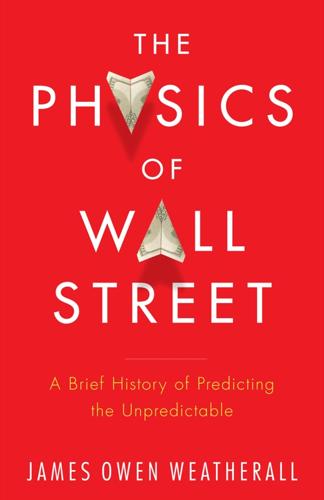
The Physics of Wall Street: A Brief History of Predicting the Unpredictable
by
James Owen Weatherall
Published 2 Jan 2013
In 1996, Sornette’s work on earthquakes earned him a part-time professor-in-residence position in UCLA’s earth and space sciences department, and at the Institute of Geophysics and Planetary Physics. By this time, though, at least half of his energy was devoted to finance. That same year, Sornette, Bouchaud, and Sornette’s postdoctoral researcher, Anders Johansen, realized that Sornette’s earlier work on predicting earthquakes and ruptures could be extended to predicting market crashes. They published a paper together in another physics journal. Amazingly, just a few months later, Sornette detected the log-periodic pattern that he had determined should presage a crash. The success of October 1997 deepened his belief that he was on to something important, and he redoubled his efforts on economics and financial modeling.
…
For this reason, assuming normal or log-normal distributions can lead to extremely misleading results and, moreover, produce a false sense of confidence regarding the likelihood of certain kinds of extreme events. For another, despite the fact that extreme events happen infrequently on both models, in Mandelbrot’s models of financial markets, they happen often enough that it is the extreme events that dominate market behavior in the long run. And so, even if there are similarities in how the models predict markets on a typical day, there is a significant difference in how one should view the importance of a “typical day” for the long-term behavior of markets. “It is also too simple to say that Mandelbrot was ignored . . .”: For instance, see Fama (1964). “Today, the best evidence indicates . . .”: See, for instance, Cont (2001) and references therein; this point was also emphasized in conversation by Didier Sornette, whose work is the subject of Chapter 7

Trees on Mars: Our Obsession With the Future
by
Hal Niedzviecki
Published 15 Mar 2015
The big surprise has been the support for the unabashedly elitist ‘super-forecaster’ hypothesis. . . . When we randomly assigned ‘supers’ into elite teams, they blew the lid off IARPA’s performance goals. They beat the unweighted average (wisdom-of-overall-crowd) by 65 percent; beat the best algorithms of four competitor institutions by 35-60 percent; and beat two prediction markets by 20-35 percent.”8 Around the same time, Ignatius of the Washington Post made the (unattributed) claim that “the top forecasters, drawn from universities and elsewhere, performed about 30 percent better than the average for intelligence community analysts who could read intercepts and other secret data.”9 In other words, according to Ignatius, intelligence analysts with security clearance to read every secret report and see every drone image were still considerably worse at prediction than Tetlock’s best performers.
…
IARPA and Philip Tetlock’s network of collaborators aren’t the only group trying to incorporate big data and psychology and crowdsourcing to get us to the point where we can actually turn future into information. In January 2014, George Mason University in Virginia launched SciCast, billed as the “largest and most advanced science and technology prediction market in the world.” I’m not going to get into all the technical details of how SciCast works, but basically the idea is that anyone in the world can join up and start answering questions about what will happen in the realms of science and technology in the next six months to two years. The more questions you answer correctly as time goes by, the higher your score.
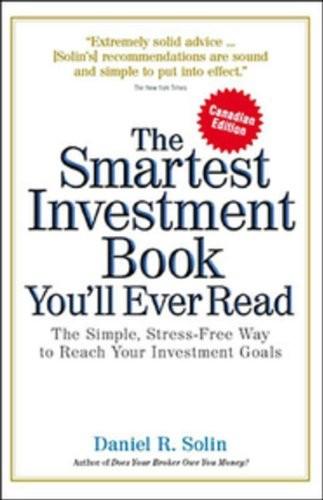
The Smartest Investment Book You'll Ever Read: The Simple, Stress-Free Way to Reach Your Investment Goals
by
Daniel R. Solin
Published 7 Nov 2006
Su international stocks Palaro, Helder P. , 166 Palmer, RosseJl E., 73 PAS (Porrfolio Allocation Score), 178 Su also Asset Allocation Q uestionnaire passive mvestmenrs index funds and ETFs as, 8, 18 See also ETFs (exchange traded funds); index funds Patalon, William, 111, 62 pension funds, as Smarr InvestOrs, predictions, market. Se, market timing (predicting the future) principal-protected notes (PPNs),I64 Professional Financial Advisor, The(De Gocy) , 155-56, 181 prospectuS for a fund, 60 Prudent Investor Rule, 99-101 Prudential house funds , 77, 163 psychology of investing desire for order, 3 1 gambling, 30-3 1, 153-54 irrational exuberance in, 49-50, 157 market psychology, 49 marketing and, 30 overconfidence, 32 personal values and, 34-35 research on, 152-54 ~s jz.zle" and excitement, 32-33 stress of, 25 Su also Asset Allocation Questionnaire 105-6, 139-40, 168 pension plans (RRPs and RRSPs) ETFs in, 139-40, 169-70 Porrfolio Allocation Score (PAS), 178 Su also ruse t Allocation Questionnaire Portfolio ~kction (Markowitz), 67,162 poHfolios, inveSlment.
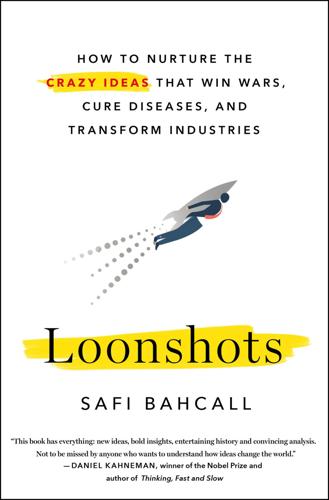
Loonshots: How to Nurture the Crazy Ideas That Win Wars, Cure Diseases, and Transform Industries
by
Safi Bahcall
Published 19 Mar 2019
We’ll extend these ideas on the behavior of groups to the behavior of societies and nations, and see how that helps us understand the course of history: why tiny Britain, for example, toppled the far larger and wealthier empires of India and China. This may all sound a bit … loony. That’s the idea. * * * To begin, we will turn to an engineer handed a national crisis. Let’s turn to the brink of world war. PART ONE ENGINEERS OF SERENDIPITY 1 How Loonshots Won a War Life on the edge Had there been prediction markets in 1939, the odds would have favored Nazi Germany. In the looming battle between world powers, the Allies lagged far behind Germany in what Winston Churchill described as the “secret war”: the race for more powerful technologies. Germany’s new submarines, called U-boats, threatened to dominate the Atlantic and strangle supply lines to Europe.
…
A mechanical elephant to carry military equipment through the jungles of Vietnam. A superbomb made from the element hafnium, discovered, allegedly, by a physicist experimenting with a dental x-ray machine. A plan for achieving nuclear fusion through rapidly collapsing bubbles inside liquids (a modified cleaning fluid was used). A prediction market where investors could bet on the location of the next terrorist event, in order to tap into the “wisdom of crowds.” (The project was scrapped for what might be called bad taste.) Other DARPA loonshots have transformed industries or created new academic disciplines. The early computer network ARPANET evolved into the internet.
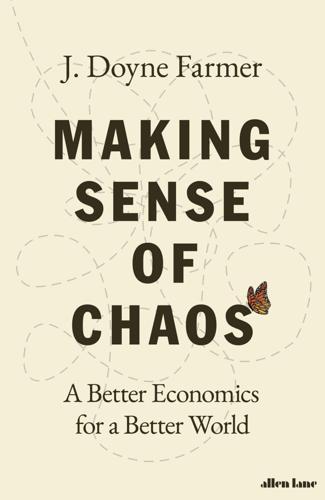
Making Sense of Chaos: A Better Economics for a Better World
by
J. Doyne Farmer
Published 24 Apr 2024
I realized that the only way to make mainstream economists pay attention to theories that run counter to the accepted canon is by showing that they lead to superior empirical predictions – and, even then, the evidence needs to be so overwhelming that it cannot be ignored. Can market ecology predict market malfunction? In order to study market ecosystems empirically, I needed access to special data. There is plenty of data available about market transactions, but it lacks counterparty identifiers – a record of who transacted with whom. Without counterparty identifiers, I was like an ecologist whose data say ‘some animal ate another animal’, without naming the species involved.
…
We used our laboratory to show explicitly how it is possible to apply concepts from ecology to understand markets.12 We classified the pairwise relationships between the strategies as competitive, predator–prey and mutualistic, and showed how these relationships could change with the changing wealth of the strategies.13 As expected, the trend follower and the value investor tended to prey on the noise trader, but this was not always true, and we even observed mutualistic relationships.14 We mapped out the ‘food web’ of our financial system, demonstrating how the strategies utilize inefficiencies to maintain their wealth, and how they create inefficiencies that support one another. We wanted to demonstrate how the theory of market ecology can predict market malfunctions. By malfunctions, we meant deviations of the prices of assets from their true value or volatility of prices in excess of what should occur based on external information (as discussed in Chapter 9). Because trend-following strategies are inherently destabilizing, we expected that when that strategy has more wealth than the other two, we would see larger mispricings and more volatility.

The Mysterious Mr. Nakamoto: A Fifteen-Year Quest to Unmask the Secret Genius Behind Crypto
by
Benjamin Wallace
Published 18 Mar 2025
The list of group interests was a syllabus for the future leaders of twenty-first-century Silicon Valley: life extension, space colonization, homeschooling, biohacking, consciousness-uploading, AI, self-sovereignty, seasteading, digital money, antistatism, transhumanism, polycentric law, prediction markets, digital nomads (their term was tech nomads), and memetics, among other things. A remarkable number of members were or would become influential. Nick Bostrom was the Oxford philosopher of the so-called simulation hypothesis—the improbably widely held belief, among Elon Musk and his peers, that we are all living in a videogame. Robin Hanson pioneered modern prediction markets. K. Eric Drexler was the foremost proponent of nanotechnology. Hans Moravec, a roboticist, was the visionary of uploading oneself to the cloud.
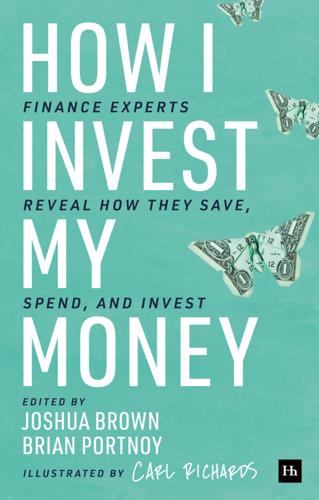
How I Invest My Money: Finance Experts Reveal How They Save, Spend, and Invest
by
Brian Portnoy
and
Joshua Brown
Published 17 Nov 2020
Sounds simple, but present-day investors continue to dissect far-reaching policy implications of COVID-19 government actions in 2020, which include fiscal policy and global monetary policy adding yet another round of stimulus to markets in an effort to rescue the US economy. Asset allocators are faced with recalibrating allocation models to incorporate increased volatility, uncertainty, complexity, and ambiguity. Volatility—currencies, global equities, and fixed income market volatility as well as the absence of stable and predictable markets and regulation. Uncertainty—wide swings in monetary and fiscal policy over the course of months or even weeks. Complexity—markets become riskier the larger that the ETF space becomes. The shift towards passive funds has the potential to concentrate investments in a few large products which increases systemic risk, making markets more susceptible to the flows of a few large passive products.
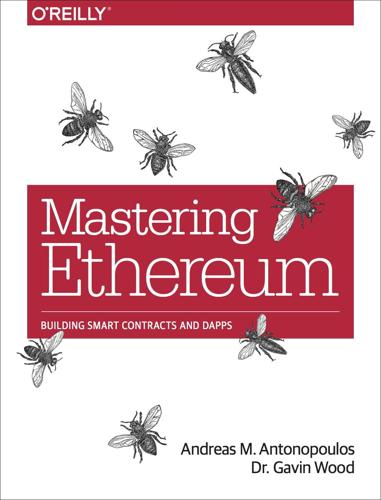
Mastering Ethereum: Building Smart Contracts and DApps
by
Andreas M. Antonopoulos
and
Gavin Wood Ph. D.
Published 23 Dec 2018
Some more examples of data that might be provided by oracles include: Random numbers/entropy from physical sources such as quantum/thermal processes: e.g., to fairly select a winner in a lottery smart contract Parametric triggers indexed to natural hazards: e.g., triggering of catastrophe bond smart contracts, such as Richter scale measurements for an earthquake bond Exchange rate data: e.g., for accurate pegging of cryptocurrencies to fiat currency Capital markets data: e.g., pricing baskets of tokenized assets/securities Benchmark reference data: e.g., incorporating interest rates into smart financial derivatives Static/pseudostatic data: security identifiers, country codes, currency codes, etc. Time and interval data: for event triggers grounded in precise time measurements Weather data: e.g., insurance premium calculations based on weather forecasts Political events: for prediction market resolution Sporting events: for prediction market resolution and fantasy sports contracts Geolocation data: e.g., as used in supply chain tracking Damage verification: for insurance contracts Events occurring on other blockchains: interoperability functions Ether market price: e.g., for fiat gas price oracles Flight statistics: e.g., as used by groups and clubs for flight ticket pooling In the following sections, we will examine some of the ways oracles can be implemented, including basic oracle patterns, computation oracles, decentralized oracles, and oracle client implementations in Solidity.
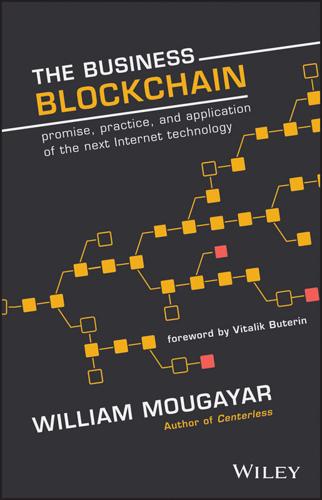
The Business Blockchain: Promise, Practice, and Application of the Next Internet Technology
by
William Mougayar
Published 25 Apr 2016
We will own the data that belongs to us. We will self-manage our online reputations, and as we interact with various people or businesses, only the relevant slices of data will be revealed to them. Cryptocurrency-only banks will emerge, offering a variety of financial services based on virtual currencies. Decentralized prediction markets will enter the mainstream and offer frequent and credible predictions. Distributed Autonomous Organizations (DAOs) will become viable, with self-governed operations and user-generated value creation that tie-back directly to services and financial rewards. Spontaneous and trusted commerce will happen between peers, without central intermediaries, and with little to no friction.
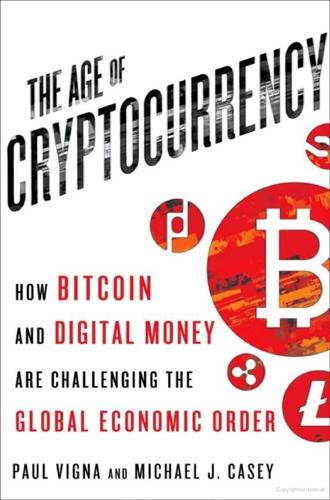
The Age of Cryptocurrency: How Bitcoin and Digital Money Are Challenging the Global Economic Order
by
Paul Vigna
and
Michael J. Casey
Published 27 Jan 2015
There are individual losses and socialized gains.” Asked to describe the job market if and when the kinds of decentralized autonomous companies envisaged by his firm become prevalent, BitShares CEO Daniel Larimer confidently predicts that these projects “can create millions of information-based jobs.” What’s more, he says, blockchain-based prediction markets, where people buy and sell contracts that pay out depending on how accurately they predict an event, will create new moneymaking opportunities in the intermediary industries destined for disruption. “If you’re a middleman in the lending industry or a middleman in commodities, or have medical knowledge, you know that industry better than anyone else, which means you can take the knowledge you have and turn it into value,” Larimer says.
…
Larimer’s jobs-for-everyone utopianism—the pervading ethos of Silicon Valley, shared by many bitcoiners—glosses over how many, if not most, people find change difficult. Not all, and perhaps not many, laid-off workers can easily pick themselves up and parlay their knowledge into making an income from speculative trading on a BitShares prediction market. To many it will seem like a form of gambling. To subject their lives to such uncertainty is anathema to people who’ve expected a salaried job to last a lifetime and to provide security and permanence. People will have to figure out how to apply their particular skills to this Brave New World and, if they can’t apply them, how to rapidly acquire the right skills.
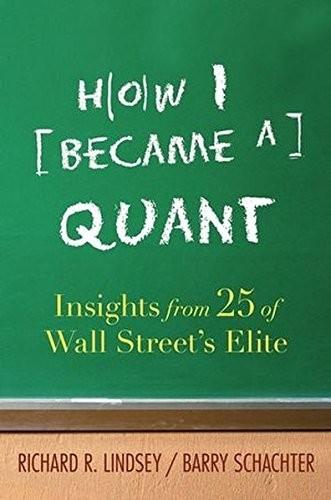
How I Became a Quant: Insights From 25 of Wall Street's Elite
by
Richard R. Lindsey
and
Barry Schachter
Published 30 Jun 2007
By way of introduction, we will explain from our perspective the roots, roles, and contributions of the Wall Street quant. We begin by defining the Quant. Mark Joshi, a famous quant, has proposed this definition: A quant designs and implements mathematical models for the pricing of derivatives, assessment of risk, or predicting market movements.1 1 JWPR007-Lindsey 2 May 7, 2007 18:27 h ow i b e cam e a quant Perhaps some of the terms used in this definition require definition themselves. A mathematical model is a formula, equation, group of equations, or computational algorithm that attempts to explain some type of relationship.
…
A humble beginning, certainly, as only 911 option contracts were traded on 16 different equities. Now, each year, hundreds of millions of equity option contracts on thousands of companies trade on dozens of exchanges (both physical and electronic) around the world. The key ingredient that ties quants to derivatives and the other two functions identified by Joshi (risk assessment and predicting markets) is mathematical know-how. The Black-Scholes option pricing formula is a good example of this. JWPR007-Lindsey May 7, 2007 18:27 Introduction 3 The model, as it was first presented, was obtained by employing a result from physics, the solution to a particular partial differential equation called the heat-transfer equation.

The People vs Tech: How the Internet Is Killing Democracy (And How We Save It)
by
Jamie Bartlett
Published 4 Apr 2018
The whole scene is bursting with zeal, energy and billions of dollars. All sorts of blockchain applications have recently been released: OpenBazaar, a peer-to-peer marketplace that is impossible to shut down, decentralised file storage, a distributed web domain name system, land ownership records in India to combat fraud and prediction markets. Several are working on social media applications that are impossible to censor or control because they’re hosted on a decentralised blockchain. Perhaps the most important functionality of the new wave of blockchains is the way they allow ‘smart contracts’, lines of code that execute instructions automatically.
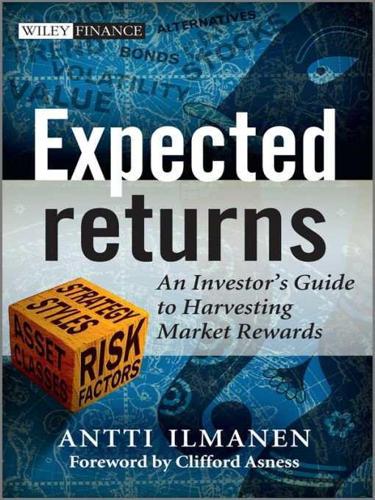
Expected Returns: An Investor's Guide to Harvesting Market Rewards
by
Antti Ilmanen
Published 4 Apr 2011
These data start only in 1985, but academic studies document good market-timing ability using total payout yield and net buyback yield since the 1920s. The strong results may partly reflect corporate managers successfully market timing their equity issuance to coincide with expensive market levels. Table 8.3. Predictive market-timing correlations of narrow and broad carry measures, 1985–2009 Sources: Haver Analytics, Michael Afreh (Nomura). 8.4.2 Value measures: Earnings yield and the Fed Model Absolute valuation A stock market’s price–earnings (P/E) ratio and its inverse, the earnings yield (E/P), are the most popular equity market valuation indicators.
…
Disappointments following excessive growth optimism may be a key reason for the success of contrarian stock selection and market-timing strategies. The share of prime-age savers in the population peaked in Japan in the late 1980s and in the U.S. around 2000, consistent with broad patterns in market valuations. Some observers call the 1990s “the baby-boomer rally” in the U.S. and predict market declines when the retiring boomers begin to dissave (i.e., use past savings for current consumption). The story rings true but demographic developments are at best only one influence on asset prices. Moreover, there is some evidence of retirees continuing to save rather than dissave and the story ignores the entry of savers from younger emerging market countries. 8.4.3 Ex ante equity premia based on the DDM While the yield ratio is useful shorthand for the equity–bond premium, the dividend discount model (DDM) gives us directly what we want to see: a numerical estimate of the difference between stocks’ and bonds’ expected long-run returns.
…
This average correlation turns out to have a significantly positive relation to next quarter equity market returns, while average variance has virtually no relation (and indeed a negative one once the correlation’s predictive ability is controlled for). Apparently, the average variance component offsets and conceals the market-timing ability of correlation, leaving stock market variance unable to predict market returns. Table 19.1. Correlations between monthly S&P 500 returns and contemporaneous and lagged realized one-month volatility levels (Vol) and changes (dVol), 1928–2009 (and VIX 1986–2009) Sources: Bloomberg. Bollerslev–Zhou (2007) present the most positive evidence for a conditional risk–reward relation so far.

Collaborative Futures
by
Mike Linksvayer
,
Michael Mandiberg
and
Mushon Zer-Aviv
Published 24 Aug 2010
Open Innovation refers to a collection of tools and methods for enabling more collaboration. Some of these Open Innovation tools include crowdsourcing of research expertise which is being lead by a company called InnoCentive, patent pools, end-user innovation which Erik von Hippel documented in Democratizing Innovation, and wisdom of the crowds methods such as prediction markets. 117 Reputation is an important question for many forms of collaboration, but particularly in science, where careers are determined primarily by one narrow metric of reputation—publication. If the above phenomena are to reach their full potential, they will have to be aligned with scientific career incentives.
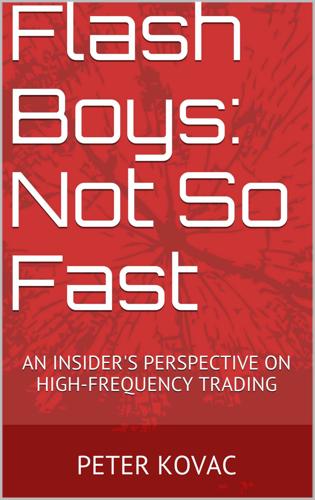
Flash Boys: Not So Fast: An Insider's Perspective on High-Frequency Trading
by
Peter Kovac
Published 10 Dec 2014
The value of its ability to buy Microsoft from you at $30 a share and to hold the shares for a few microseconds – knowing that, even if the Microsoft share price began to fall, it could turn around and sell the shares at $30.01 – was determined by how likely it was that Microsoft’s share price, in those magical microseconds, would rise in price.” Lewis faces a dilemma: how can you argue that volatility – the unpredictability of a stock’s price – somehow benefits high-frequency traders, whom he has been arguing make all their money by predicting market moves? It seems that unpredictability would ruin whatever scam they have going. It’s a very difficult argument to make, even more so given the principle of “adverse selection.” Adverse selection is the fancy economic term that means that a market-maker who sticks his neck out is the first one to get stuck with a losing position when the market drops.
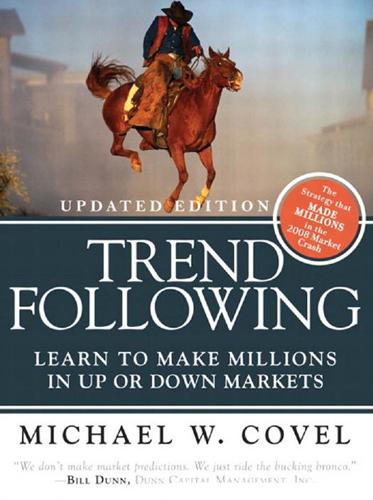
Trend Following: How Great Traders Make Millions in Up or Down Markets
by
Michael W. Covel
Published 19 Mar 2007
Technical traders believe that a careful analysis of daily price action is an effective means of trading for profit. Now here is where an understanding of technical analysis becomes complicated. There are essentially two forms of technical analysis. One form is based on an ability to “read” charts and use “indicators” to predict market direction. Here is an example of the mentality behind a predictive view of technical analysis: 9 But I think our ace in the hole is that the governments usually screw things up and don’t maintain their sound money and policy coordination. And about the time we’re ready to give up on what usually has worked, and proclaim that the world has now changed, the governments help us out by creating unwise policy that helps produce dislocations and trends.
…
The second chart is the British pound (Chart 2.4) where, unlike the Japanese yen, the market proved unfavorable for Dunn. It was a typical whipsaw market, which is always difficult for trend followers because small losses add up. You can see how he entered and was stopped out; then entered and was stopped out again. Remember, trend followers don’t predict markets, they react to them—so the small losses were part of the game. He managed the small losses because the British pound was only a portion of his 37 Chapter 2 • Great Trend Followers portfolio. His yen trade more than made up for his losses on the British pound trade, because no matter how uncomfortable others are with his approach, for Dunn, big winners offset small losers in the long run.
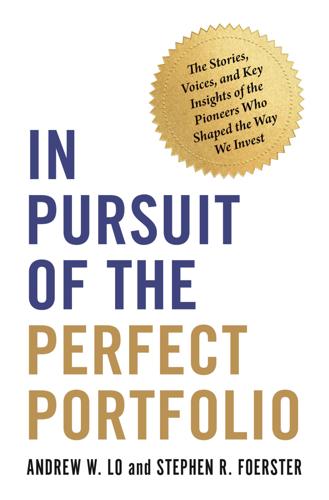
In Pursuit of the Perfect Portfolio: The Stories, Voices, and Key Insights of the Pioneers Who Shaped the Way We Invest
by
Andrew W. Lo
and
Stephen R. Foerster
Published 16 Aug 2021
The empirical work has also changed the views and practices of market professionals.”35 The debate about market efficiency continues to play out most vigorously in the arena of investment management, pitting active managers who try to beat the market versus passive managers who try to mimic the market. As Fama recently said, “There’s quite a bit of evidence that even professionals don’t show any ability to pick stocks or to predict market rollbacks. Most of the people we identify as skilled based on returns have probably just been lucky.”36 It may be better to be lucky than smart, but luck in the future isn’t guaranteed. The notion of market efficiency has expanded well beyond the stock market, even into the basketball arena.
…
While the option market, and the beauty of the Black-Scholes technology and Merton follow-on is, essentially, it decomposes and tells you what the risk is.”68 In other words, stock prices can go up or down because either the stock’s anticipated cash flow growth changes or its perceived risk changes. However, the change in the price of an option is unambiguously tied to changes in risk, and it’s that assessment of risk that is quantified by the market. Scholes gave the example of election prediction markets, such as the University of Iowa’s Iowa Electronic Markets, in which futures market contract payoffs are based on political outcomes. “Who’s going to win the election? We have election markets. People say, ‘How can a market know anything about elections?’ It comes up once every four years, or so.… The market is amazing, how accurate it is, relative to the pundits.”69 Derivatives as Financial Weapons of Mass Destruction?
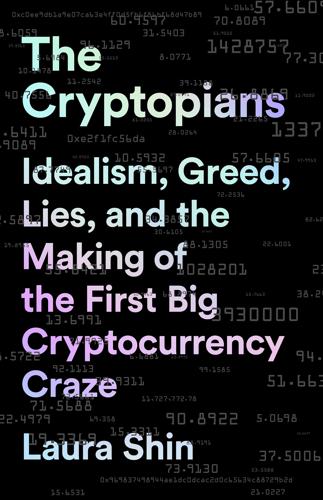
The Cryptopians: Idealism, Greed, Lies, and the Making of the First Big Cryptocurrency Craze
by
Laura Shin
Published 22 Feb 2022
Four days later, while she was celebrating her birthday on a boat near Catalina Island and he was in Los Angeles, they tried domain names on GoDaddy, but some were really expensive, like $200. MyEtherWallet was $11.99. They nabbed it.7 RIGHT WHEN THEY launched, the presale for Augur, a decentralized prediction market in which people could make predictions and bet on the outcome, was happening. When Taylor went to put money in, she was stymied, again, by challenging technical instructions. She asked Kosala to make a one-click button for her. He did, and they added an “Augur Crowdsale” tab to the site.8 Late in the sale, which ended October 1, 2015, the Augur newsletter gave a shout-out to MyEtherWallet for the button.
…
After raising $11.7 million in December, the haul swelled in January and February to around $67 million and $73 million, respectively. After a March dip to $22 million, in April, thirteen ICOs raked in almost $86 million. One ICO that blew the lid off even Golem’s in November was Gnosis (GNO), which, like Augur, was a decentralized prediction market. The Berlin-based team held the sale out of Gibraltar, a jurisdiction that, like Switzerland and Singapore, had crypto-friendly regulations. Their goal was $12.5 million, and they tried a new mechanism. Instead of a first-come-first-served-style ICO, they held a Dutch auction, which meant the starting price, $30, would be the ceiling.

Superintelligence: Paths, Dangers, Strategies
by
Nick Bostrom
Published 3 Jun 2014
The same could happen if fixes are found for some of the bureaucratic deformations that warp organizational life—wasteful status games, mission creep, concealment or falsification of information, and other agency problems. Even partial solutions to these problems could pay hefty dividends for collective intelligence. The technological and institutional innovations that could contribute to the growth of our collective intelligence are many and various. For example, subsidized prediction markets might foster truth-seeking norms and improve forecasting on contentious scientific and social issues.78 Lie detectors (should it prove feasible to make ones that are reliable and easy to use) could reduce the scope for deception in human affairs.79 Self-deception detectors might be even more powerful.80 Even without newfangled brain technologies, some forms of deception might become harder to practice thanks to increased availability of many kinds of data, including reputations and track records, or the promulgation of strong epistemic norms and rationality culture.
…
New York: Dutton. Benyamin, B., Pourcain, B. St., Davis, O. S., Davies, G., Hansell, M. K., Brion, M.-J. A., Kirkpatrick, R. M., et al. 2013. “Childhood Intelligence is Heritable, Highly Polygenic and Associated With FNBP1L.” Molecular Psychiatry (January 23). Berg, Joyce E., and Rietz, Thomas A. 2003. “Prediction Markets as Decision Support Systems.” Information Systems Frontiers 5 (1): 79–93. Berger, Theodore W., Chapin, J. K., Gerhardt, G. A., Soussou, W. V., Taylor, D. M., and Tresco, P. A., eds. 2008. Brain–Computer Interfaces: An International Assessment of Research and Development Trends. Springer. Berger, T.
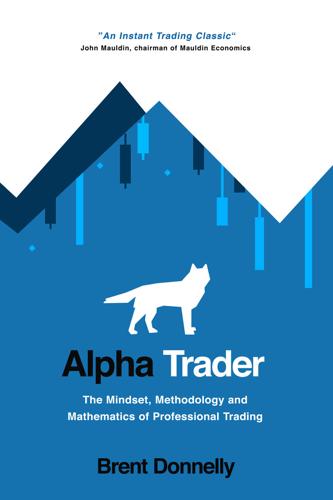
Alpha Trader
by
Brent Donnelly
Published 11 May 2021
A remarkable experiment by Langer and Roth showed that students who had success predicting a coin toss early on tended to believe they had superior coin toss prediction skills to those that did not. If people can convince themselves they are superior forecasters of a coin toss, imagine how they might convince themselves of their ability to predict markets! Langer and Roth reported their findings in “Heads I win, tails it’s chance”60. I love the title because it captures the faulty thinking of many an overconfident trader. If I make money on the trade, I’m smart. If I don’t, it was just bad luck. That’s not rational thinking! Example 1: You are playing poker.
…
There are entire books that go through all the major technical patterns and backtest them and come to the same result: technical analysis is not a good forecasting tool. I explained my philosophy on technical analysis when I discussed overreliance on simple indicators and apophenia. I want to make it clear though: I use technical analysis in my trading every day. I just don’t use it to predict markets. Technical analysis gives you an important set of tactical execution and risk management tools. It does not help you forecast market direction. Good traders are quick to admit when they are wrong. They make leveraged, asymmetric bets. Technical analysis can help you do these things better and provide strong and clear signals of when it’s time to give up on a bad idea or take profit on a good one.

Economic Gangsters: Corruption, Violence, and the Poverty of Nations
by
Raymond Fisman
and
Edward Miguel
Published 14 Apr 2008
The value of futures of the Standard and Poors 500 Index— a measure of what investors expected to happen to stock values the next morning—jumped by over 1 percent at around 2 a.m. on election night in 2000 when Bush was declared the winner in Florida, only to drop back down a couple of hours later when the Florida outcome was rescinded. Refer to “Partisan Impacts on the Economy: Evidence from Prediction Markets and Close Elections,” by Erik Snowberg, Justin Wolfers, and Eric Zitzewitz in the Quarterly Journal of Economics (2007) for details. 5. “Health matters for Suharto’s children,” Financial Times, January 3, 1998. 6. A question that we often get when discussing these results is whether we personally profited in some way from our interest in 217 N O TES the stock market reaction to Suharto’s health.
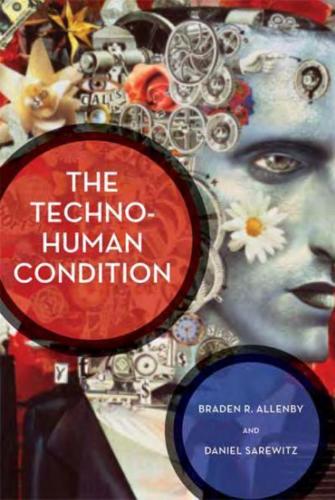
The Techno-Human Condition
by
Braden R. Allenby
and
Daniel R. Sarewitz
Published 15 Feb 2011
We doubt it, yet the larger point is this: Even if it seems as if we are simply modifying the constitution of humanness at the individual level, the systems-level effects of tens of millions of such modifications may plausibly begin to manifest in system-wide changes in human values and behaviors that cannot possibly be predicted. Markets are an information-processing mechanism built on, and assuming, stable legal, cultural, and institutional foundations, and a stable idea of what humans are; enhancement renders those foundations contingent and unpredictably changing. Markets assume a particular context; enhancement transforms it.

Confessions of a Crypto Millionaire: My Unlikely Escape From Corporate America
by
Dan Conway
Published 8 Sep 2019
I wrote a Medium blog (“Enter the Ethereum Economy”) that breathlessly explained my charge: For those of us who believe in decentralization and have committed to the cause as a funder of a particular token, as a career move, or as an evangelist — this is a gathering place to figure out how we can help, compare notes, talk strategy, hear interesting speakers and network. We are going to need to pull on one another as this thing heats up and the real ride begins. Two hundred people signed up. My first meeting featured a presentation by Martin Koppelman of the prediction market dApp Gnosis, one of the hottest projects at the time. Six months later, it would be valued at an eye-popping one billion after its Initial Coin Offering. I invited my sister Kathleen and a couple of friends who were tech-savvy, mildly interested, and willing to do me a solid. Martin’s presentation was thorough.
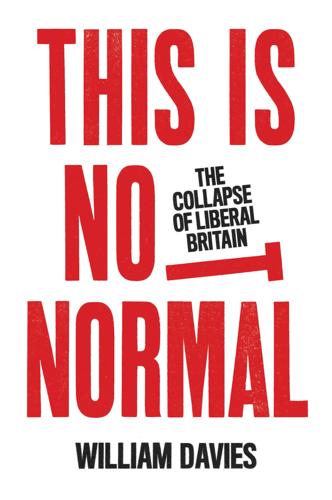
This Is Not Normal: The Collapse of Liberal Britain
by
William Davies
Published 28 Sep 2020
This is why it was so absurd to look to currency markets and spread-betters for the truth of what would happen in the referendum: they could only give a sense of what certain people felt would happen in the referendum at certain times. Given the absence of any trustworthy facts (in the form of polls), they could then only provide a sense of how investors felt about Britain’s national mood: a sentiment regarding a sentiment. As the 23 June 2016 turned into 24 June, it became manifestly clear that prediction markets are little more than an aggregative representation of the same feelings and moods that one might otherwise detect via Twitter. They’re not in the business of truth-telling, but of mood-tracking. What Sort of Crisis Is This? The bankruptcy of Lehman Brothers in September 2008 was an emergency.
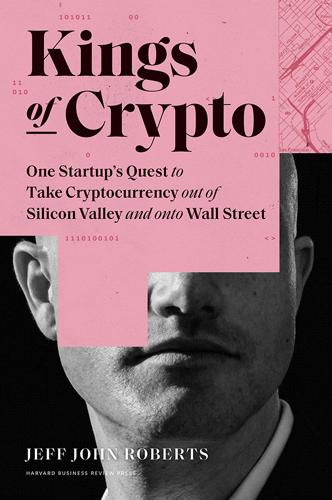
Kings of Crypto: One Startup's Quest to Take Cryptocurrency Out of Silicon Valley and Onto Wall Street
by
Jeff John Roberts
Published 15 Dec 2020
Instead of working to support new coins, Coinbase engineers were fiddling with ways to repackage existing offerings—creating bundles and index funds that offered the same boring coins. In another corner of the office, engineers were at work building something called Toshi. This was a tool to navigate dApps—short for decentralized applications—which Brian and others believed would be the future of crypto. A dApp can be anything from a word-processing tool to a prediction market, but what makes dApps distinct is the lack of a central company or manager. Imagine taking the sort of software programs you find in Microsoft Office and then running them on a bitcoin-style network. Unlike what you find in the app stores of Apple and Google, dApps can be distributed without anyone’s permission and rely on random computers around the world to operate. dApps are not the most efficient form of software, not least because you need a special browser to access them in the first place, but their supporters say they represent the next generation of computing.

The Handbook of Personal Wealth Management
by
Reuvid, Jonathan.
Published 30 Oct 2011
Contemporary art accounts for much of the current interest in this field, owing to greater liquidity, frequent trades and a growing belief in its long-term value. Developing these activities, some have proposed an art exchange as a mechanism for the issuing of securities with art or collections as the underlying asset. So far, it is possible to trade art in the prediction market via the website Intrade. A related development has been the continued growth in rental income from art. In 1972, the Canadian government was the first to set up an art rental project aimed at government agencies. It allocated $5m over five years. With some 18,000 paintings, prints, photographs and sculptures by over 2,500 artists, the Canada Council Art Bank is now home to the largest collection of contemporary Canadian art and is the most important player in the Canadian art market.
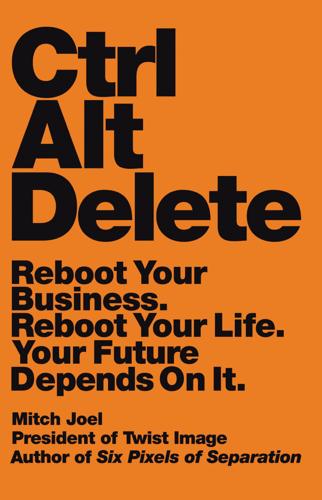
Ctrl Alt Delete: Reboot Your Business. Reboot Your Life. Your Future Depends on It.
by
Mitch Joel
Published 20 May 2013
The only real question is this: If a multimillion-dollar business can be developed and managed by one person with a laptop in an apartment, what happens to your business and your job as this rapid innovation and digitization continues to ripple through every industry? There is a startling realization in Arment’s story: There’s a good chance that your current business (or job) may not even be around in the next five years. Wacky prediction? Marketing hype to sell a book? It isn’t. Arment’s story isn’t an anomaly. Did you ever think it was even possible to have a one-person company with well over one million customers and a multimillion-dollar valuation? Welcome to purgatory (or heaven, if you’re Marco Arment). Apple co-founder and former CEO Steve Jobs once said, “If you don’t cannibalize yourself, someone else will.”

Investing Demystified: How to Invest Without Speculation and Sleepless Nights
by
Lars Kroijer
Published 5 Sep 2013
The markets will dominate the headlines and be a topic of conversation at work, the gym, meals out, in homes and everywhere else. How can you not have a view? The point is that we still don’t have a view. While many people with the benefit of hindsight say they saw the rebound, ‘just’ because there is great market turbulence does not mean that an investor is better able to predict market movements. We don’t consider ourselves smarter than the average dollar invested in the market, and that average dollar put the S&P 500 at an index value of under 700 in March 2009. The fact that four years later we see that same index trading around its all-time highs does not mean that we could predict in March 2009 that this would be the case.

Plenitude: The New Economics of True Wealth
by
Juliet B. Schor
Published 12 May 2010
Each year, the U.S. government underwrites the oil, gas, nuclear, and coal industries to the tune of tens (or, depending on one’s definition, hundreds) of billions, allows them to emit carbon without financial liability, and supports a massive automobile infrastructure and chemical-intensive farming. Finally, the assumption of an all-knowing market requires almost superhuman informational and processing demands. Investors have to understand the scientific evidence, combine it with economic, political, social, psychological, and demographic data, and predict market movements. Relying on market prices as indicators of the state of the natural world is risky, if not reckless. Trade-off Economics: The Unbearable Costliness of Nature Accounts that emphasize the ability of the market to develop alternatives for nature or to clean up the messes caused by growth tend to be thinking in the medium or long term.

In Defense of Global Capitalism
by
Johan Norberg
Published 1 Jan 2001
Suppose a company extracts a metal and the price of that metal suddenly falls dramatically; earnings fail to materialize and bankruptcy threatens. Instead of devoting a large part of its activity to wondering how markets are going to develop, the firm can buy a right to sell the raw material at a predetermined price later on—a sale option. The purchaser of this option takes over the risk and the responsibility of predicting market developments. The metal company can quietly concentrate on extracting the metal, and the risk is willingly taken over instead by people who specialize in observing developments and apportioning the risks—in a word, speculators. Because exchange rates are rapidly changeable, firms encounter the same risk if, for example, the currency in which they are paid quickly depreciates.
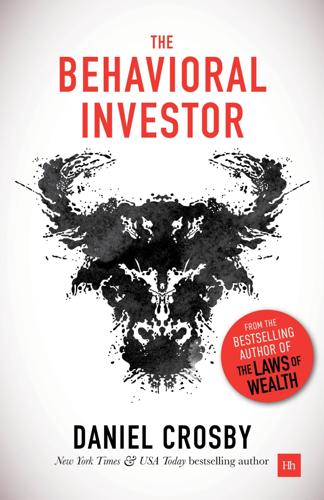
The Behavioral Investor
by
Daniel Crosby
Published 15 Feb 2018
After the participants had spent some time trading and learning the market they switched conditions, with those in the growth market entering the volatile market, and vice versa. What they observed next was fascinating and surprising: people used different parts of their brain to make future investment decisions based on their early experience with the market. Those in Group One who had started with an orderly, predictable market organized their brain activity to create rules and search for universally applicable principles of the market. In the words of the researchers, “decision making would be supported by comparison of predicted and actual prices, and it would be driven by a rule based reasoning.” Conversely, those who began in the more chaotic condition utilized entirely separate parts of the brain to cope with the volatility of their market.
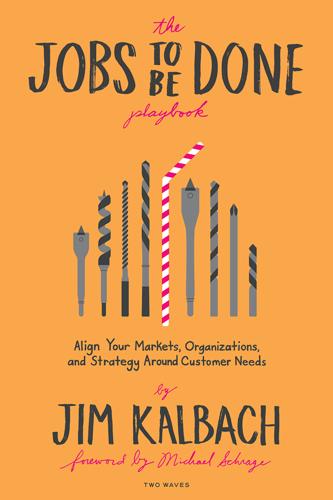
The Jobs to Be Done Playbook: Align Your Markets, Organization, and Strategy Around Customer Needs
by
Jim Kalbach
Published 6 Apr 2020
This chapter offers one of the best explanations of tying research insights to product architecture. It’s a bottom-up process: you can cluster observations multiple times to derive high-level categories. Young also discussed how to label parts of the resulting architectural model. PLAY Test Hypotheses with JTBD Innovation brings uncertainty. No inventor can predict market success. Introducing new offerings to the market is risky because the consumers ultimately decide to adopt an innovation or not, regardless of the inherent benefits of the solution. Just consider the launch of the Segway, the famous self-propelled one-person scooter. The invention itself worked great and was very compelling to investors.
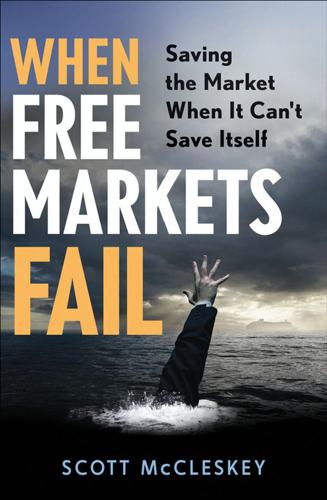
When Free Markets Fail: Saving the Market When It Can't Save Itself (Wiley Corporate F&A)
by
Scott McCleskey
Published 10 Mar 2011
Rating agencies were confident of their models E1FPREF 06/16/2010 11:31:38 Page 19 Preface n xix used to assess the credit risk of subprime-loan pools because their methodologies had worked well in the (stable and benevolent) past. And here’s where regulation comes in. If you think that regulation in the form of ‘‘transparency’’ is sufficient on the grounds that the market can regulate itself as long as it has sufficient information, you place more faith in our ability to measure and predict market behavior than can reasonably be done. In a complex financial system, it’s difficult enough just to know who has sold credit default swaps to whom, let alone the consequences of their deterioration under specific market circumstances. Reforming the credit default swap market by making their trading and ownership transparent may help to solve the first problem (though even this premise is somewhat doubtful, as one chapter in this book discusses), but it won’t do anything to solve the second.
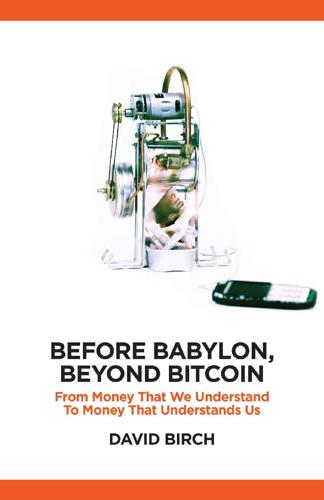
Before Babylon, Beyond Bitcoin: From Money That We Understand to Money That Understands Us (Perspectives)
by
David Birch
Published 14 Jun 2017
For my retirement plan I need to find something unique to the virtual, which is why I was sufficiently interested in the novel concept of assassination markets to write about them. I was excited to find that an enterprising chap by the name of Kuwabatake Sanjuro had taken advantage of the invention of Bitcoin to set one up (Greenberg 2013). In case you are wondering what an assassination market is, it is a prediction market where any party can place a bet (using anonymous electronic money, and pseudonymous remailers) on the date of death of a given individual and collect a payoff if they ‘guess’ the date accurately. This would incentivize the assassination of specific individuals because the assassin, knowing when the action would take place, could profit by making an accurate bet on the time of the subject’s death.
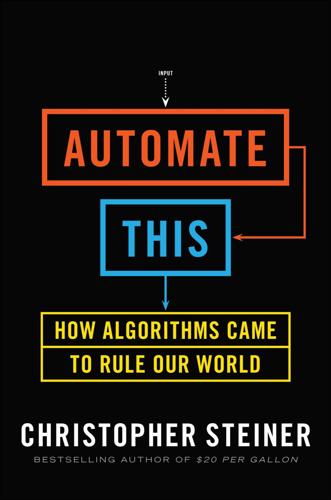
Automate This: How Algorithms Came to Rule Our World
by
Christopher Steiner
Published 29 Aug 2012
In the case of a stock trader, an algorithm that seeks to capture the spread between a stock’s bid and offer prices can be thwarted when the market moves, which can leave the trader and his algorithm with only one side—the wrong side—of a trade. If an algorithm bought Microsoft at the bid of $50.00 and then failed to sell it within the same several seconds at the ask of $50.02 before the market went down, the trader will be taking a loss when he sells at the new ask of $49.99. These algorithms are built to predict market direction. To be successful, the algorithm has to be right only 51 percent of the time. But a 51 percent probability could still leave a high-frequency trader open to big losses if he trades only ten times a day. There could be plenty of days where he loses on seven of ten trades. But high-frequency traders are called “high frequency” for a reason.
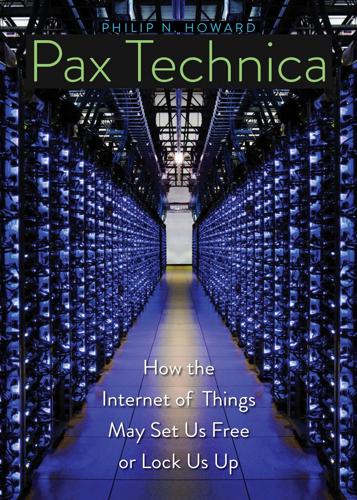
Pax Technica: How the Internet of Things May Set Us Free or Lock Us Up
by
Philip N. Howard
Published 27 Apr 2015
It won’t matter whether China’s government adopts an open-data policy any time soon—the internet of things will generate enough data to keep many China watchers busy. People are creatively playing with data, some of it gleaned from reluctant governments. Some of that data feeds interesting predictive markets. Such markets don’t always work well, and because they trade in odds, you can count the number of times they don’t work at all. The models are getting better, and specialists use them to gauge popular and expert opinion on likely political outcomes. When will a dictator fall from power? Will Russia claim more territory from neighboring countries?
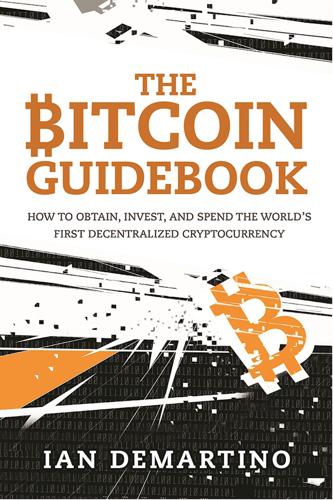
The Bitcoin Guidebook: How to Obtain, Invest, and Spend the World's First Decentralized Cryptocurrency
by
Ian Demartino
Published 2 Feb 2016
Ethereum is more than a coin, describing itself thus: “Ethereum is a decentralized platform that runs smart contracts: applications that run exactly as programmed without any possibility of downtime, censorship, fraud or third party interference. Ethereum is how the Internet was supposed to work.” As with Nxt and CounterParty, it allows for asset/token creation. But more than that, Ethereum has its own programming language built in, which has resulted in some very exciting projects. These include Augur, a crowd-powered prediction market where people with the Augur coin are incentivized to vote on whether a prediction came true or not. (How this works and how it keeps people honest is beyond the scope of this chapter.) There is a Bitcoin-like coin in Ethereum, called Ether, that makes the system run, secures the network and settles contracts.

Exponential Organizations: Why New Organizations Are Ten Times Better, Faster, and Cheaper Than Yours (And What to Do About It)
by
Salim Ismail
and
Yuri van Geest
Published 17 Oct 2014
There is an interesting difference of opinion over how much data should be used based on the nature of the market in which the organization operates. While conventional wisdom says to gather as much data as possible (hence the term Big Data), psychologist Gerd Gigerenzer cautions that in uncertain markets, it is better to simplify, use heuristics and rely on fewer variables. In stable and predictable markets, on the other hand, he recommends organizations “complexify” and use algorithms with more variables. One of the leaders in gleaning insights from massive amounts of data is Palantir. Founded in 2004, Palantir builds government, commercial and health software solutions that empower organizations to make sense of disparate data.
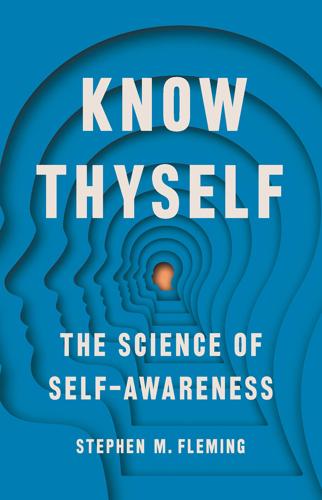
Know Thyself
by
Stephen M Fleming
Published 27 Apr 2021
By uploading a time-stamped document outlining the predictions and rationale for an experiment (known as preregistration), scientists can keep themselves honest and avoid making up stories to explain sets of flaky findings. There is also encouraging data that shows that when scientists own up about getting things wrong, the research community responds positively, seeing them as more collegiate and open rather than less competent.13 Another line of work is aiming to create “prediction markets” where researchers can bet on which findings they think will replicate. The Social Sciences Replication Project team set up a stock exchange, in which volunteers could buy or sell shares in each study under scrutiny, based on how reproducible they expected it to be. Each participant in the market started out with $100, and their final earnings were determined by how much they bet on the findings that turned out to replicate.

Care: The Highest Stage of Capitalism
by
Premilla Nadasen
Published 10 Oct 2023
The current crisis of social reproduction is not an economic paradox that will undermine capitalism—as with so many other crises, capitalism finds ways to transform them into opportunities and, ultimately, to thrive. Capital is instead seeking out new forms of accumulation that depend on this very crisis. Many scholars and political commentators assume that stable economic and social relations are necessary for capitalism’s health.40 For decades, conventional wisdom was that capitalism requires predictable markets and a reliable workforce that reproduces itself to ensure a margin of profitability. Employers need to know that workers will show up to work the next day and still go shopping. The New Deal, the welfare state more broadly, and public infrastructure such as potable water systems, schools, and hospitals were premised on this logic.
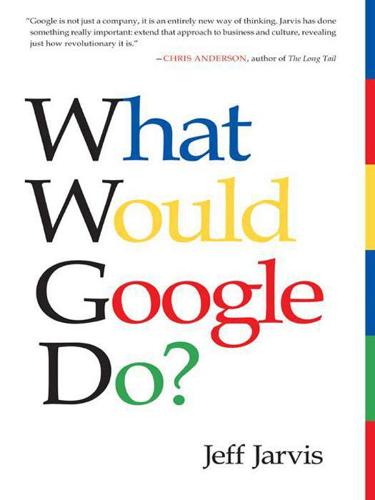
What Would Google Do?
by
Jeff Jarvis
Published 15 Feb 2009
Yes, speculators could arbitrage seats, but if they’re paid-for and nonrefundable, what problem is that for the airline? Resellers become market makers. This exchange sets a new market value for seats that in some cases will be higher than the airlines’ own fares. The airline could use the exchange as a prediction market to forecast and maximize load. It might see a surge in demand for a destination, perhaps for reasons it could not predict (a new conference or festival, good media coverage for a getaway, a travel bargain, or currency fluctuations unleashing pent-up demand). With sufficient notice, the airline could add capacity, which would keep it ahead of arbitrageurs.
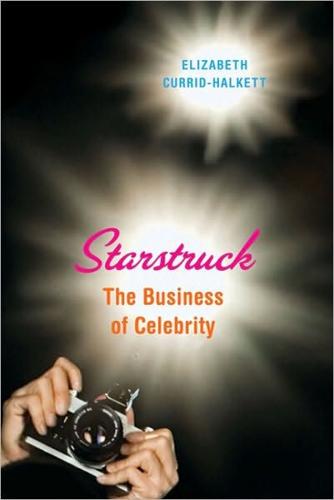
Starstruck: The Business of Celebrity
by
Currid
Published 9 Nov 2010
(Studios at least try to remain unconvinced in order to keep the salaries down.)56 If you believe Anita Elberse, a star is worth approximately $3 million in box office revenue. Elberse studied twelve hundred film-casting announcements and observed the influence of new information about a film (e.g., Matt Damon starring in the latest Bourne film or Julia Roberts joining Ocean’s Eleven) on the Hollywood Stock Exchange, an online prediction market that looks at a film’s expected revenue based on casting and financial decisions. Elberse found that the stars’ biggest impact is their ability to draw other stars to act in the film and to drum up financial backing for production. Stars do not, however, increase a studio’s valuation. Stars certainly obtain more value from their paycheck than the studios get in ticket sales.
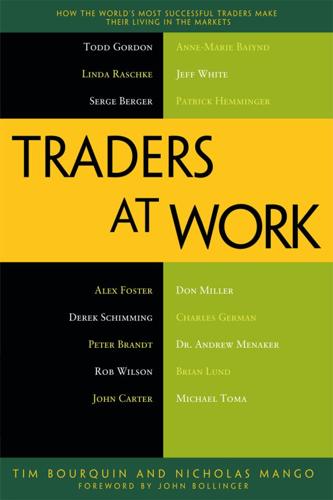
Traders at Work: How the World's Most Successful Traders Make Their Living in the Markets
by
Tim Bourquin
and
Nicholas Mango
Published 26 Dec 2012
But it doesn’t matter what the reason is. The action is what counts. The action that’s required is other people have to pay higher prices. As soon as other people—fund managers, hedge funds, whoever these people are—decide to not pay higher prices, stock XYZ will no longer go up. In order to predict markets, the people who really figured out the game are predicting people, and I can tell you that some of the more successful hedge funds understand this. They’re looking at the market not so much through fundamental analysis and technical analysis. They are trying to sense it. They want to predict what people are going to do.
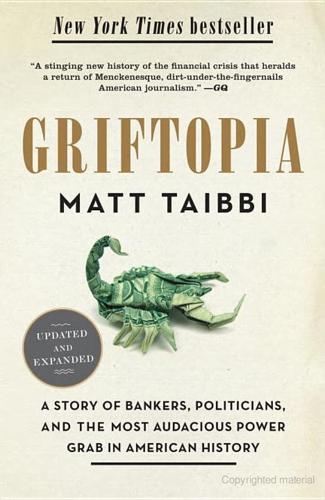
Griftopia: Bubble Machines, Vampire Squids, and the Long Con That Is Breaking America
by
Matt Taibbi
Published 15 Feb 2010
By October, with the U.S. in the sixth of what would ultimately be ten consecutive months of job losses, Greenspan remained stubborn. “The economy,” he said, “has not yet slipped into recession.” The economy has a lot in common with the weather, and even very good economists charged with the job of predicting market swings can become victims of unexpected turns, just like meteorologists. But Greenspan’s errors were often historic, idiotic blunders, evidence of a fundamental misunderstanding of problems that led to huge disasters. In fact, if you dig under almost every one of the major financial crashes of our time, you can find some kind of Greenspan quote cheerfully telling people not to worry about where the new trends in the economy were leading.
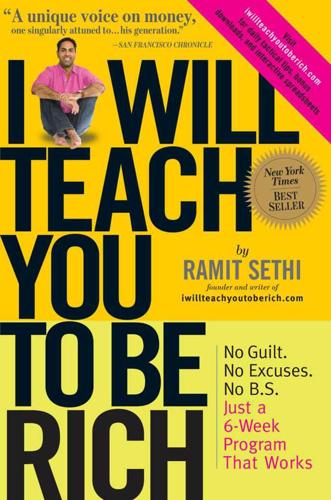
I Will Teach You To Be Rich
by
Sethi, Ramit
Published 22 Mar 2009
See Credit scores Fidelity, 187, 192 Financial advisers, 153–55 Financial expertise, 143–58 active vs. passive management and, 155–58 engineering a perfect stock-picking record and, 151 legendary investors and, 149 market-timing newsletters and, 145 personal-finance blogs and, 152 pundits’ and fund managers’ inability to predict market and, 2–3, 145–50, 165, 168 ratings of stocks and funds and, 148–52 529s, 217 Fixed costs, 104–6, 107, 130 Flexo, 44–45 401(k)s, 77–82, 176 amount to contribute to, 76, 77, 89 automatic contributions to, 79–80, 82, 129, 132, 136 common concerns about, 80–81 early withdrawal of money from, 80, 81, 85, 212 employer match and, 71, 76, 78, 79, 81, 82, 89 investing money in, 4, 81, 83, 185–86, 189, 198, 201, 209 paying credit card debt with, 46 setting up, 77, 82, 90 statistics on, 71, 72 switching jobs and, 80–81 tax-deferred growth of, 78, 80, 81, 210, 211, 221 Freelancing, 120, 139–41 Conscious Spending Plan and, 141 quarterly estimated tax payments and, 135 Friends, money issues with, 221 Frugality: cheapness vs., 94–96 prioritizing spending and, 97 Fund managers, poor performance of, 144–51, 155 Fun money, 107, 108, 130 g Get Rich Slowly, 152 Gifts, saving money for, 106–7 Girlfriends.
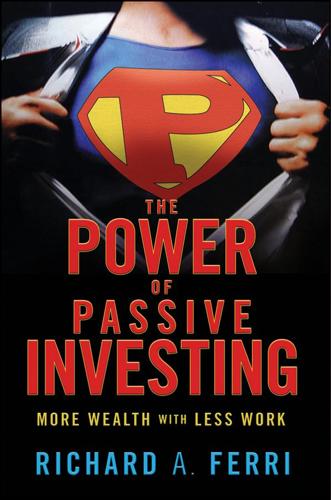
The Power of Passive Investing: More Wealth With Less Work
by
Richard A. Ferri
Published 4 Nov 2010
TrimTabs Investment Research, a consolidator of mutual fund flow data, concluded that equity prices tend to fall after equity exchange-traded funds (ETFs) rake in large sums of money and rise after equity ETFs post heavy outflows. Regression analysis suggests the probability that equity ETF flows are a contrary leading indicator of equity prices is more than 99 percent. This means the flow of ETF money predicts market changes with high accuracy—in the opposite direction!6 One mutual fund cash flow study after another has consistently shown the same performance chasing phenomenon. Fund styles with superior performance and high fund ratings raked in the most money, and this usually occurs close to the time when these investment styles peak in performance.

Here Comes Everybody: The Power of Organizing Without Organizations
by
Clay Shirky
Published 28 Feb 2008
In his book of that name he identified the ways distributed groups whose members aren’t connected can often generate better answers, by pooling their knowledge or intuition without having to come to an agreement. We have many ways of achieving this kind of aggregation, from market pricing mechanisms to voting to the prediction markets Surowiecki champions, but these methods all have two common characteristics: they work better in large groups, and they don’t require direct communication as the norm among members. (Indeed, in the case of markets, such communication is often forbidden, on the grounds that small clusters of collaborators can actually pervert the workings of the large system.)

Life After Google: The Fall of Big Data and the Rise of the Blockchain Economy
by
George Gilder
Published 16 Jul 2018
Buterin offers the analogy of a vending machine, but any similar stepwise tree algorithm applies (if you insert the correct coin and if you designate choice of purchase, then you can collect widget in slot below; if not, you can pound machine fecklessly with your fists). As Buterin declared in announcing his system, he expected Ethereum to enable “protocols around decentralized file storage, decentralized computing and prediction markets, and provide a massive boost to other peer-to-peer protocols by adding an economic layer.” Most of the other crypto-ventures have used this more resourceful Ethereum blockchain and Solidity language to build their infrastructures. For reach and ingenuity, it is hard to excel Golem. Calling itself, with partial felicity, an “Airbnb for computers,” it offers to rent your computer’s resources when you are not using them.

Free culture: how big media uses technology and the law to lock down culture and control creativity
by
Lawrence Lessig
Published 15 Nov 2004
Because here we have hundreds of thousands of webcasters who want to pay, and that should establish the market rate, and if you set the rate so high, you're going to drive the small webcasters out of business… ." And the RIAA experts said, "Well, we don't really model this as an industry with thousands of webcasters, we think it should be an industry with, you know, five or seven big players who can pay a high rate and it's a stable, predictable market." (Emphasis added.) Translation: The aim is to use the law to eliminate competition, so that this platform of potentially immense competition, which would cause the diversity and range of content available to explode, would not cause pain to the dinosaurs of old. There is no one, on either the right or the left, who should endorse this use of the law.
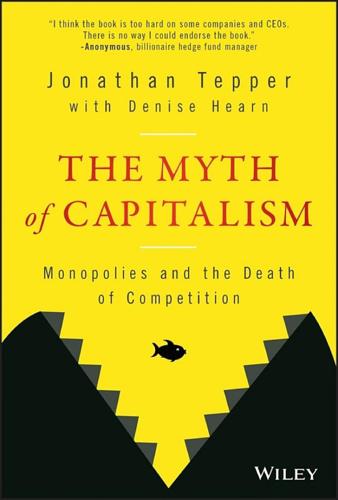
The Myth of Capitalism: Monopolies and the Death of Competition
by
Jonathan Tepper
Published 20 Nov 2018
If the original incarnations of Communism under Lenin, Stalin, and Mao failed because central planning was a disaster, Big Data will now come to the rescue. Last year, Jack Ma, founder of Alibaba, the online platform with over half a billion users, argued, “Big Data will make the market smarter and make it possible to plan and predict market forces so as to allow us to finally achieve a planned economy.”2 The 2013 revelations of Edward Snowden exposed the involvement of American companies and intelligence agencies in programs that gave the government access to personal data. Americans were briefly outraged and then continued their lives as they did before.
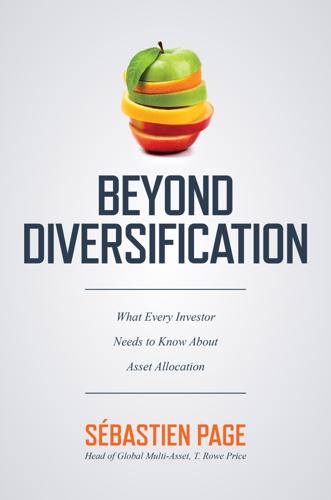
Beyond Diversification: What Every Investor Needs to Know About Asset Allocation
by
Sebastien Page
Published 4 Nov 2020
They are useful to the extent they help formulate a view about the future. It’s in that context that I review various approaches to expected returns in this chapter. Note 1. A “quant” is an industry term used to describe those involved in quantitative research and investment management. Quants use computer models and mathematics to predict markets and manage risk. 1 Equilibrium and Something About Quack Remedies Sold on the Internet The expected return for the market portfolio should be a function of the level of interest rates. When rates are high, investors require higher returns on all tradable assets. —JPP A note to readers: I completed this book shortly before the Covid crisis.

Uncharted: How to Map the Future
by
Margaret Heffernan
Published 20 Feb 2020
In 1993, he predicted that Clinton’s tax rises would squash economic growth – and when the late 1990s boom ensued, attributed it to Reagan’s tax cuts back in the early 1980s. Ten years later, he was rewarded for his intellectual intransigence when President Trump made him director of the National Economic Council.14 Incomplete, ideological and self-interested: the harder economists try to identify sure-fire methods of predicting markets, the more such insight eludes them. The rise of big data and artificial intelligence enables firms to analyse quantities of information far beyond the dreams of earlier forecasters: not just prices, money supply and national economies but satellite images tracking the number of oil tankers on the seas or cars at shopping malls.

Easy Money: Cryptocurrency, Casino Capitalism, and the Golden Age of Fraud
by
Ben McKenzie
and
Jacob Silverman
Published 17 Jul 2023
Binance: Ben McKenzie and Jacob Silverman, “Why users are pushing back against the world’s largest crypto exchange,” Washington Post, April 1, 2022. 92 crypto took off in China . . . to avoid capital controls: Karen Yeung, “Cryptocurrencies help Chinese evade capital and currency controls in moving billions overseas,” South China Morning Post, August 26, 2020. 92 Binance has . . . no headquarters: Patricia Kowsmann and Caitlan Ostroff, “$76 Billion a Day: How Binance Became the World’s Biggest Crypto Exchange,” Wall Street Journal, November 11, 2021. 100 Peter Thiel, the arch-capitalist: Abram Brown, “Peter Thiel Pumps Bitcoin, Calls Warren Buffett A ‘Sociopathic Grandpa,’ ” Forbes.com, April 7, 2022. 102 “In Miami we have big balls”: Daniel Kuhn, “The Meaning of Miami’s Castrated Bitcoin Bull,” CoinDesk, April 8, 2022. 103 It was Brock Pierce: Interview with Brock Pierce, Bitcoin 2022 (Miami, FL), April 7, 2022. 106 Eric Adams. . . . in the form of Bitcoin: Ben McKenzie and Jacob Silverman, “The Embarrassment of New York’s Next Mayor Taking His Paychecks in Bitcoin,” Slate, November 5, 2021. 109 O’Leary was particularly bullish: Adam Morgan McCarthy, “‘Spigots of capital’ will flood into crypto once policy and regulation are set, ‘Shark Tank’ investor Kevin O’Leary predicts,” Markets Insider (Insider.com), April 7, 2022. 109 Mario Gomez and Carmen Valeria Escobar: Interviews with Mario Gomez and Carmen Escobar, Bitcoin 2022 (Miami, FL), April 9, 2022. CHAPTER 7: THE WORLD’S COOLEST DICTATOR 114 brash young politician named Bukele: Gabriel Labrador, “How Bukele Crafted a Best-Selling Political Brand,” El Faro, May 3, 2022. 119 rollout of the government’s Chivo Wallet system: Jacob Silverman and Ben McKenzie, “Nayib Bukele’s Broken Bitcoin Promise,” The Intercept, July 22, 2022. 120 a horrific spree of gang violence: Associated Press, “El Salvador locks down prisons after wave of 87 killings over weekend,” Guardian, March 28, 2022. 120 Mario Garcia was one: Interview with Mario Garcia, El Zonte (Chiltiupán, El Salvador), May 16, 2022. 122 Bitcoin City: Edward Ongweso Jr., “El Salvador’s President Unveils Golden ‘Bitcoin City’ Amid Brutal Crash,” Motherboard (Tech by Vice), May 10, 2022. 123 Wilfredo Claros: Interview with Wilfredo Claros, Condadillo (La Unión, El Salvador), May 17, 2022. 124 admitted to having forged a secret deal: Carlos Martínez, “Collapsed Government Talks with MS - 13 Sparked Record Homicides in El Salvador, Audios Reveal,” El Faro, May 17, 2022.
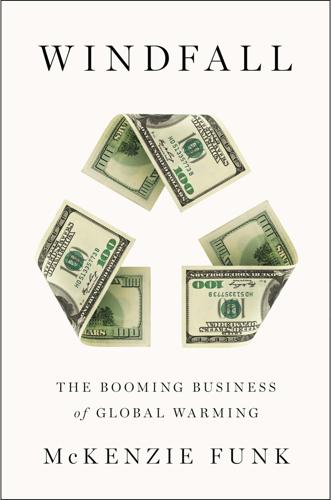
Windfall: The Booming Business of Global Warming
by
Mckenzie Funk
Published 22 Jan 2014
Our house is near Seattle’s new light-rail, and during a remodel I made sure we insulated it well and got a high-efficiency furnace. But we drove all over that summer, and we bought a lot of Shell gas. The many flights I took, from a carbon perspective, were even worse. One afternoon, after I watched the Kulluk get towed north, I went to the “prediction market” Web site Intrade and put a $100 wager down in its Climate and Weather category. I could have bet on global temperature anomalies or on Sandy being the last named storm of the 2012 hurricane season, but instead I chose the melting polar ice cap: “Arctic sea ice extent for Sep 2012 to be less than 3.7 million square kilometres.”

A New History of the Future in 100 Objects: A Fiction
by
Adrian Hon
Published 5 Oct 2020
Nadia 91 MORAL AGENTS United States, 2057 Depending on whom you asked, the Selinger incident was either an outrage or an overreaction. But while the answer was divisive, everyone agreed on the question: were moral agents usurping human virtue? In 2057, the Bautista Humanitarian Award was given to Luciano Selinger. The front-runner in prediction markets for weeks, Selinger’s tireless work on improving living standards for the displaced inhabitants of the global warming-ravaged US Midwest was without peer. At twenty-eight, Selinger was considerably younger than the other nominees, but his entire life seemed as if it were an arrow shot from a bow.

Global Catastrophic Risks
by
Nick Bostrom
and
Milan M. Cirkovic
Published 2 Jul 2008
Introduction 29 The fruitfulness of further work on global catastrophic risk will, we believe, be enhanced if it gives consideration to the following suggestions: • I n the study of individual risks, focus more on producing actionable information such as early-warning signs, metrics for measuring progress towards risk reduction, and quantitative models for risk assessment. • Develop and implement better methodologies and institutions for information aggregation and probabilistic forecasting, such as prediction markets. • Put more effort into developing and evaluating possible mitigation strategies, both because of the direct utility of such research and because a concern with the policy instruments with which a risk can be influenced is likely to enrich our theoretical understanding of the nature of the risk
…
His major fields of interest include health policy, regulation, and formal political theory. He is known as an expert on idea futures markets and was involved in the creation ofthe Foresight Exchange and DARPA's FutureMAP project. He is also known for inventing Market Scoring Rules such as LM S R (Logarithmic Market Scoring Rule) used by prediction markets such as Inkling Markets and Washington Stock Exchange, and has conducted research on signalling. James J. Hughes is a bioethicist and sociologist at Trinity College in Hartford, Connecticut, where he teaches health policy. He holds a doctorate in sociology from the University of Chicago, where he also taught bioethics and health policy at the MacLean Center for Clinical Medical Ethics.
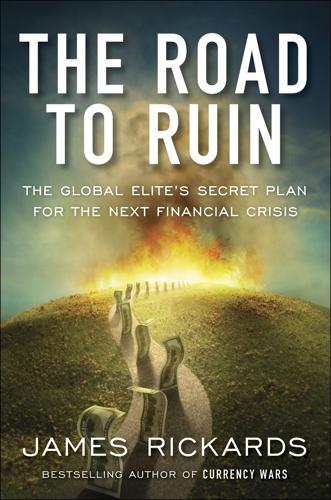
The Road to Ruin: The Global Elites' Secret Plan for the Next Financial Crisis
by
James Rickards
Published 15 Nov 2016
Complexity’s essence is that invisible changes in initial conditions produce radically different systemic outcomes. Market processes are nonlinear and practically nondeterministic. There may be a cause-and-effect relationship between catalyst and collapse. Still, it is too small to observe and the timing is difficult to forecast. Predicting market crashes is like predicting earthquakes. One may be certain the event will occur, and can estimate its magnitude, yet one will never know exactly when. Laboratory science, in particular sand pile experiments (similar to a snowflake-avalanche dynamic) and computer simulations using cellular automata, reveal degree distributions of extreme events.

#Republic: Divided Democracy in the Age of Social Media
by
Cass R. Sunstein
Published 7 Mar 2017
In this way, social media have a powerful democratizing function.16 Countless websites are now aggregating diverse knowledge. For diverse products—books, movies, cars, doctors, and computers—it is easy to find sources that tell you what most people think, and it is easy as well to contribute to that collective knowledge. Prediction markets, for example, aggregate the judgments of numerous forecasters, and they are proving to be remarkably accurate. There is much to be said about the growing ability of consumers to be producers too.17 But that is not my topic here. I will provide little discussion of monopolistic behavior by suppliers, or manipulative practices by them.
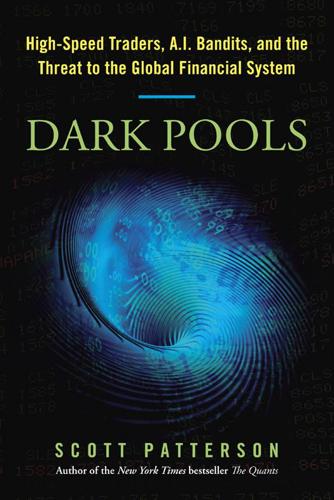
Dark Pools: The Rise of the Machine Traders and the Rigging of the U.S. Stock Market
by
Scott Patterson
Published 11 Jun 2012
He was so skilled at discovering patterns in the market’s daily ebb and flow that he’d risen to the top of the trading world, working first at an elite Chicago firm, packed with math and physics Ph.D.s, called Hull Trading, then inside a top secret quantitative derivatives operation at Goldman Sachs, before taking over a powerful global desk at UBS, the giant Swiss bank. In 2007, he broke out on his own and convinced twenty-five top-notch traders, programmers, and quants (an industry term for mathematicians who use quantitative techniques to predict markets) from across Wall Street to join him. He set up shop in Stamford and launched Trading Machines just as signs emerged of an impending global financial crisis. It had amounted to one of the most ambitious trading projects outside a large investment bank in years. Despite the bad timing, Trading Machines had fared well in its debut, posting a tidy profit during a time when most of Wall Street was imploding.
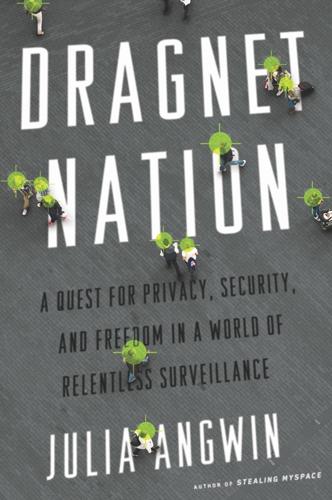
Dragnet Nation: A Quest for Privacy, Security, and Freedom in a World of Relentless Surveillance
by
Julia Angwin
Published 25 Feb 2014
In 1996, self-proclaimed Internet anarchist Jim Bell posted on an Internet forum an essay titled “Assassination Politics,” describing how anonymous cash could enable the establishment of cash prizes to people who correctly “predict” somebody’s death. “It would be possible to make such awards in such a way so that nobody knows who is getting awarded the money, only that the award is being given.” Bell described this death prediction market as a way to punish “violators of rights” by putting a price on their heads. “Consider how history might have changed if we’d been able to ‘bump off’ Lenin, Stalin, Hitler, Mussolini, Tojo, Kim Il Sung, Ho Chi Minh, Ayatollah Khomeini, Saddam Hussein, Moammar Khadafi, and various others, along with all of their replacements if necessary, all for a measly few million dollars,” he wrote.
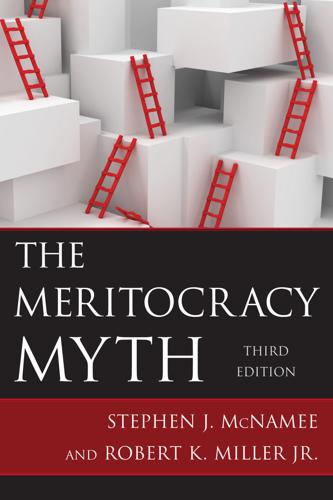
The Meritocracy Myth
by
Stephen J. McNamee
Published 17 Jul 2013
The biggest difference between playing the stock market and other forms of gambling is that the odds for winning in the stock market are much better, although the return is usually much less. The odds of “winning” in the stock market can be increased beyond random chance by knowing as much as possible about the companies in which one invests and by being able to predict market changes. Knowing about companies and markets, in part, is a matter of social and cultural capital—being in a loop composed of people with accurate and current information. As recent investment scandals have underscored, these odds can be increased illegally through insider trading. Apart from such schemes, however, there is still an element of investor risk.

The Deep Learning Revolution (The MIT Press)
by
Terrence J. Sejnowski
Published 27 Sep 2018
Information technology such as block chain, which is a secure Internet ledger that replaces financial middlemen in transactions, is being tested on a small scale but could soon disrupt multitrillion-dollar financial markets. Machine learning is being used to improve credit evaluation on loans, to accurately deliver business and financial information, to pick up signals on The Rise of Machine Learning 15 social media that predict market trends, and to provide biometric security for financial transactions. Whoever has the most data wins, and the world is awash with financial data. Learning the Law Deep learning is just beginning to affect the legal profession. Much of the routine work of associates in law firms who charge hundreds of dollar an hour will be automated, especially in large, high-value commercial offices.

The Permanent Portfolio
by
Craig Rowland
and
J. M. Lawson
Published 27 Aug 2012
The entire universe of potential future economic environments is actually quite small. The economy is a bit like the weather—although it is driven by an almost infinitely complex set of processes, it manifests itself in the form of climatic conditions in which it is always either hot or cold and wet or dry. Rather than attempting to overcome uncertainty through predictions, market analysis, and punditry, the Permanent Portfolio strategy embraces the concept of uncertainty in all human affairs and assumes that uncertainty will always be present, and that this uncertainty will manifest itself through changes in the economy. This aspect of the Permanent Portfolio is one of the features that most distinguishes it from other approaches to investing.
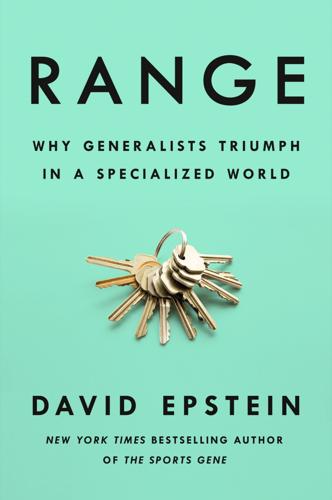
Range: Why Generalists Triumph in a Specialized World
by
David Epstein
Published 1 Mar 2019
Every team member still had to make individual predictions, but the team was scored by collective performance. On average, forecasters on the small superteams became 50 percent more accurate in their individual predictions. Superteams beat the wisdom of much larger crowds—in which the predictions of a large group of people are averaged—and they also beat prediction markets, where forecasters “trade” the outcomes of future events like stocks, and the market price represents the crowd prediction. It might seem like the complexity of predicting geopolitical and economic events would necessitate a group of narrow specialists, each bringing to the team extreme depth in one area.
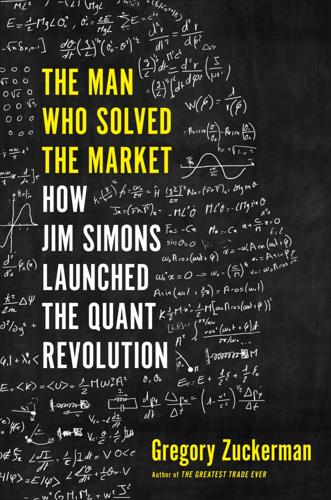
The Man Who Solved the Market: How Jim Simons Launched the Quant Revolution
by
Gregory Zuckerman
Published 5 Nov 2019
Gann’s renown grew, based partly on a claim that, in a single month, he turned $130 into $12,000. Loyalists credited Gann with predicting everything from the Great Depression to the attack on Pearl Harbor. Gann concluded that a universal, natural order governed all facets of life—something he called the Law of Vibration—and that geometric sequences and angles could be used to predict market action. To this day, Gann analysis remains a reasonably popular branch of technical trading. Gann’s investing record was never substantiated, however, and his fans tended to overlook some colossal bloopers. In 1936, for example, Gann said, “I am confident the Dow Jones Industrial Average will never sell at 386 again,” meaning he was sure the Dow wouldn’t again reach that level, a prediction that didn’t quite stand the test of time.
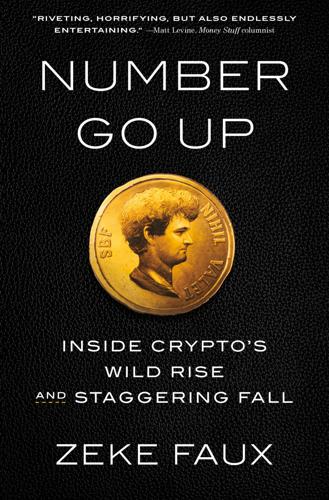
Number Go Up: Inside Crypto's Wild Rise and Staggering Fall
by
Zeke Faux
Published 11 Sep 2023
Her attempts at flirting sounded robotic: “I like to pursue romantic things like a healthy body and the surprise and preciousness of love.” After a day, Vicky revealed her true love language: Bitcoin price charts. She started sending me graphs of prices going up. She told me that she had figured out how to predict market fluctuations and make quick gains of 20 percent or more. The screenshots she shared showed that during that week alone she’d made $18,600 on one trade, $4,320 on another, and $3,600 on a third. The trades, she explained, hinged on a cryptocurrency called Tether. She told me it was safe, because Tether is a “1:1 cryptocurrency with the US dollar, also known as a stablecoin.”

In Our Own Image: Savior or Destroyer? The History and Future of Artificial Intelligence
by
George Zarkadakis
Published 7 Mar 2016
As Artificial Intelligence evolves further, it will become the driver of a new machine age that could usher our species to new economic, social and technological heights. Supercomputers endowed with intelligence will be able to accurately model and simulate almost every natural process. We will acquire the power to engineer virtually everything: from new drugs to predicting markets and solving the problems of economic scarcity, to terraforming planets. Artificial Intelligence could make us virtually omnipotent. As citizens of a free society, we have a duty to come to terms with this future, and to understand and debate its moral, legal, political and ethical ramifications today.

Nerds on Wall Street: Math, Machines and Wired Markets
by
David J. Leinweber
Published 31 Dec 2008
Macroeconomic indicators like inflation, interest rates, housing starts, and oil reserves all seem reasonable in the right context. For an idea of the many ways to predict, look for books on regression analysis, times series methods, classification and regression trees (CARTs), neural nets, and wavelets, to name a few. This doesn’t touch ideas like collective intelligence and prediction markets, which bring people into the mix. Doing this correctly can put you on the fast track to that hockey rink in the yard or the Forbes 400, or both. Doing this incorrectly will keep you off the streets for a while, but will prove detrimental to your financial health if you follow your own advice.
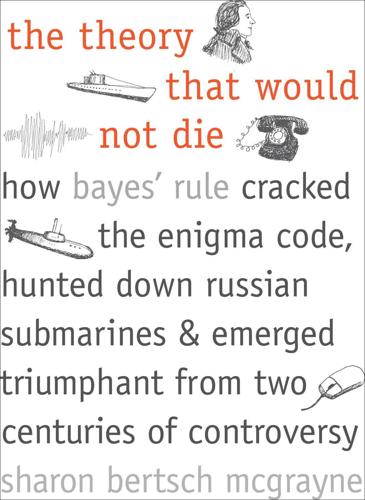
The Theory That Would Not Die: How Bayes' Rule Cracked the Enigma Code, Hunted Down Russian Submarines, and Emerged Triumphant From Two Centuries of Controversy
by
Sharon Bertsch McGrayne
Published 16 May 2011
For several years, their Medallion Fund, limited to former and current employees, averaged annual returns of about 35%. The fund bought and sold shares so rapidly one day in 1997 that it accounted for more than 10% of all NASDAQ trades. To search for the nonrandom patterns and movements that will help predict markets, RenTech gathers as much information as possible. It begins with prior knowledge about the history of prices and how they fluctuate and correlate with each other. Then the company continuously updates that prior base. As Mercer explained, “RenTec gets a trillion bytes of data a day, from newspapers, AP wire, all the trades, quotes, weather reports, energy reports, government reports, all with the goal of trying to figure out what’s going to be the price of something or other at every point in the future. . . .
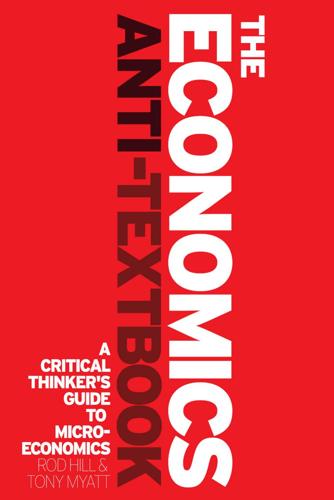
The Economics Anti-Textbook: A Critical Thinker's Guide to Microeconomics
by
Rod Hill
and
Anthony Myatt
Published 15 Mar 2010
There is no strategic interaction between firms in monopolistic competition because they are all too small to pay attention to each other. In contrast, strat egic interaction is the core problem in the last industry structure – oligopoly. It occurs when there are relatively few firms in an industry, whether they differen tiate their products or not. Strategic interaction makes it the least predictable market structure of all, since no firm knows precisely how its rivals will react to any move it makes. The mainstream textbook presents some basic game theory to explain the conditions under which firms may collude to achieve the (shared) monopoly outcome. With only two firms the simple ‘prisoner’s dilemma’ is illustrated; neither firm trusts the other and any collusive agreement (or implicit cartel) invariably breaks down.
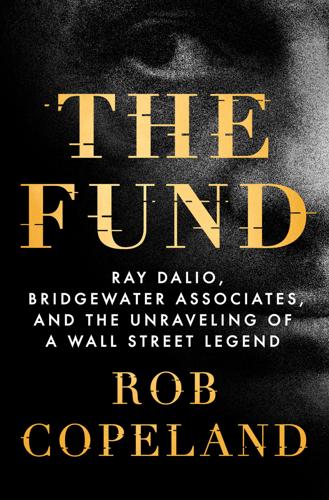
The Fund: Ray Dalio, Bridgewater Associates, and the Unraveling of a Wall Street Legend
by
Rob Copeland
Published 7 Nov 2023
He would have to slow play the move. As he had for going on two decades, Dalio came at it with reams of research. He announced to clients that he had gone through his thousands of investing insights and thrown out roughly nineteen out of every twenty. If he wasn’t totally confident in a rule’s ability to predict market moves, it wasn’t worth keeping around. Dalio rebranded the resulting assemblage of finance principles his “top 5 percent” and put out an open call for investors interested in putting money with this cream of the crop. The product flopped. “It sounded good, but after a while, I realized most of it was fluff,” said Chris Streit, who was tasked with marketing it.

The Optimist: Sam Altman, OpenAI, and the Race to Invent the Future
by
Keach Hagey
Published 19 May 2025
More philosophically, fighting entropy meant abiding by five principles: Boundless Expansion, Self-Transformation, Dynamic Optimism, Intelligent Technology, and Spontaneous Order. (Dynamic Optimism, for example, involved a technique called selective focus, in which you’d concentrate on only the positive aspects of a given situation.) Robin Hanson, who joined the movement and later became renowned for creating prediction markets, described attending multilevel Extropian parties at big houses in Palo Alto at the time. “And I was energized by them, because they were talking about all these interesting ideas. And my wife was put off because they were not very well presented, and a little weird,” he said. “We all thought of ourselves as people who were seeing where the future was going to be, and other people didn’t get it.
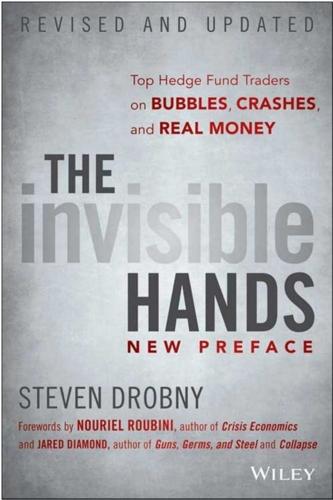
The Invisible Hands: Top Hedge Fund Traders on Bubbles, Crashes, and Real Money
by
Steven Drobny
Published 18 Mar 2010
Then you post a poll saying everyone believes that “A” will happen. But if you change the 60 percent to 40 percent and ask people the same question, they will respond that “B” will happen. Changing the probability only 20 percent swung the “expected outcome” from 100 percent “A” to 100 percent “B.” This is how I see my role in terms of predicting market sentiment. I do not go around asking people how they are feeling, but I look for cases where a small change in fundamentals could cause a large change in how people perceive the fundamentals. There have been large swings in sentiment during the past few years. How do you stay ahead of these swings when they are driven by only small changes in fundamentals?
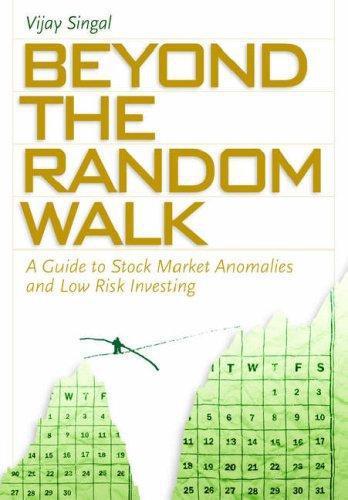
Beyond the Random Walk: A Guide to Stock Market Anomalies and Low Risk Investing
by
Vijay Singal
Published 15 Jun 2004
If insiders can accurately predict how their company is likely to perform, then an aggregation of all insider recommendations should suggest whether the overall market or an industry is a buy, sell, or hold. The Vickers weekly insider report (go to vickers-stock.com) computes an “Insider Index” based on insider trading among all companies that is supposed to predict market direction. Similarly, Thomson provides its assessment of the market through its “Market Tearsheet” (go to insider.thomsonfn.com). The third source is WallStreetCity (go to www.wallstreetcity.com), which lists insider trading by industry. While these indices may be useful, the construction of the indices is critical.
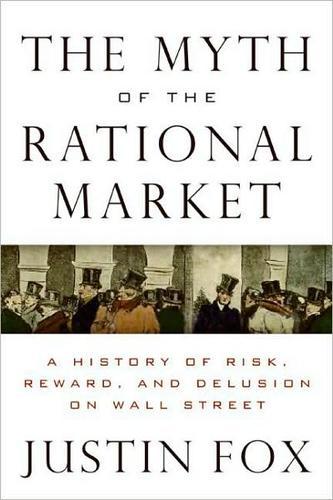
The Myth of the Rational Market: A History of Risk, Reward, and Delusion on Wall Street
by
Justin Fox
Published 29 May 2009
“Market expectations, therefore, have a certain necessary inaccuracy.” His concern was how much “objectionable inaccuracy” there might be, due to speculators overreacting to news or taking too long to digest it. Any sort of persistent errors on the part of speculators would lead to persistent, predictable market patterns: If it is possible under any given set of circumstances to predict future price changes and have the predictions fulfilled, it follows that the market expectations must have been defective; ideal market expectations would have taken full account of the information which permitted successful prediction of the price change.40 Working wrote this at a time when most economists still agreed with Keynes’s depiction of securities markets as a futile exercise in “anticipating what average opinion expects average opinion to be.”
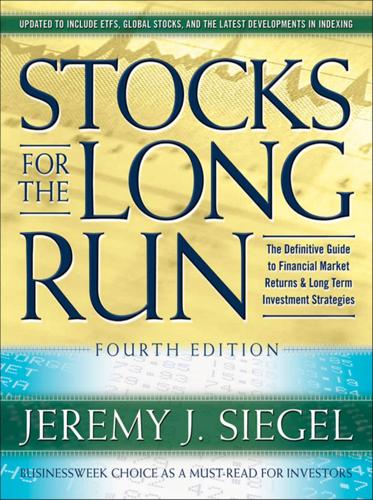
Stocks for the Long Run, 4th Edition: The Definitive Guide to Financial Market Returns & Long Term Investment Strategies
by
Jeremy J. Siegel
Published 18 Dec 2007
But if inflation again rears its head, investors will do much better in stocks than in bonds. This page intentionally left blank 12 CHAPTER STOCKS AND THE BUSINESS CYCLE The stock market has predicted nine out of the last five recessions! PA U L S A M U E L S O N , 1 9 6 6 1 I’d love to be able to predict markets and anticipate recessions, but since that’s impossible, I’m as satisfied to search out profitable companies as Buffett is. P E T E R LY N C H , 1 9 8 9 2 A well-respected economist is about to address a large group of financial analysts, investment advisors, and stockbrokers. There is obvious concern in the audience.
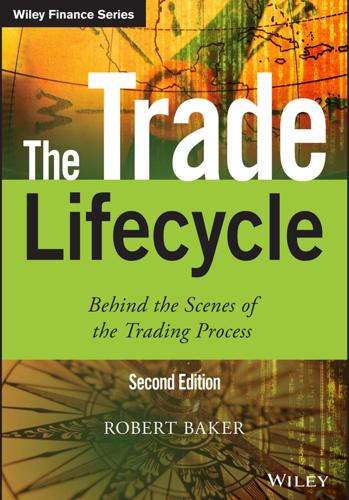
The Trade Lifecycle: Behind the Scenes of the Trading Process (The Wiley Finance Series)
by
Robert P. Baker
Published 4 Oct 2015
As well as looking at the past, market risk needs a thorough understanding of current exposures and will generally use official data or possibly live data for this purpose. Credit risk control Credit risk control staff are interested in measuring exposure to counterparties’ default on payment. They are concerned with current and predicted market positions and will use data accordingly. Finance The finance department prepares and maintains the official books and records. It would normally use data approved by middle office. Legal The legal department is generally more concerned with the context and definition of data than the content.
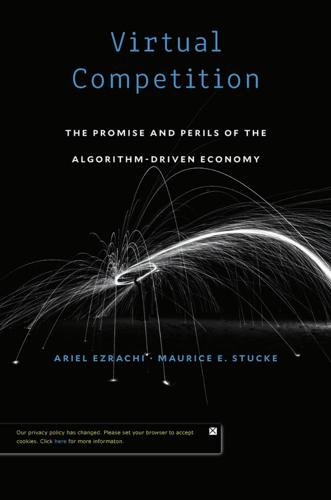
Virtual Competition
by
Ariel Ezrachi
and
Maurice E. Stucke
Published 30 Nov 2016
Federal Energy Regulatory Commission’s merger review policies were criticized for relying on data supplied by the regulated entities, rather than conducting its own independent fact gathering and analysis of market definition.42 The risk that sector regulators, even the most dedicated ones, may fail to understand and predict market dynamics, is real. Such failure will likely lead to a generalized approach that ultimately reduces welfare. In addition to the risks of imperfect information and regulatory capture, the government can undertake anticompetitive intervention because of weaker incentives to avoid mistakes than private actors who fully bear the costs of their mistakes, “political myopia,” and the lack of direct accountability to the public.43 Moreover, the road to perfect price regulation may also lead to a world of limited privacy, among other things.
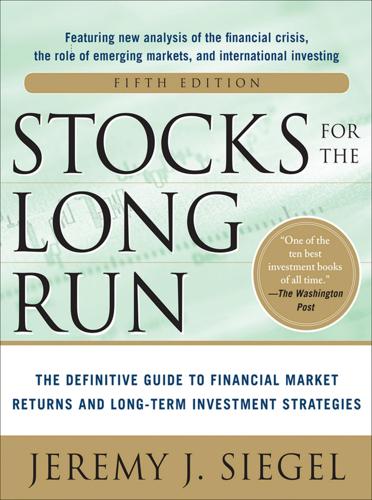
Stocks for the Long Run 5/E: the Definitive Guide to Financial Market Returns & Long-Term Investment Strategies
by
Jeremy Siegel
Published 7 Jan 2014
Fortunately for investors, central bankers around the world are committed to keeping inflation low, and they have largely succeeded. But if inflation again rears its head, investors will do much better in stocks than in bonds. 15 * * * Stocks and the Business Cycle The stock market has predicted nine out of the last five recessions. —PAUL SAMUELSON, 19661 I’d love to be able to predict markets and anticipate recessions, but since that’s impossible, I’m as satisfied to search out profitable companies as Buffett is. —PETER LYNCH, 19892 A well-respected economist is about to address a large group of financial analysts, investment advisors, and stockbrokers. There is obvious concern in the audience.
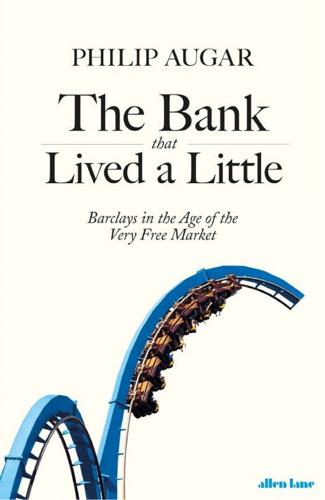
The Bank That Lived a Little: Barclays in the Age of the Very Free Market
by
Philip Augar
Published 4 Jul 2018
Three weeks later there was more bad news. One of Wall Street’s most prestigious funds, Long Term Capital Management, which boasted a roster of smart investment bankers, Nobel Prize-winning economists and rocket-scientist traders among its principals, became insolvent. They used computer models to predict market movements and borrowed huge amounts of money to leverage their bets. Barclays and other banks had been falling over themselves to provide LTCM credit, taking a small fee while LTCM’s investors made huge returns. After a four-year winning streak, the Russian crisis prompted a sell-off in other emerging markets, the LTCM models failed and the hedge fund was bust.

The Future Is Asian
by
Parag Khanna
Published 5 Feb 2019
But as the political psychologist Philip Tetlock has demonstrated, full transparency over political deliberations can lead to decisions aimed at being popular rather than correct.10 Hence democracy must be supplemented by technocratic instruments that assess the long-term implications of decisions and offer correctives. Tetlock’s work also demonstrates the failure of experts to correctly predict a range of political and economic events. This is not a knock on technocracy. Governance is not about predictions but about decisions. Technocrats aren’t supposed to compete in prediction markets but listen to them, as well as to subject-matter experts and the public, and craft holistic policy. Indeed, there is ample evidence that Singapore’s ruling party, even though it faces little electoral competition, responds to citizens’ concerns and even reverses course on policies when necessary.
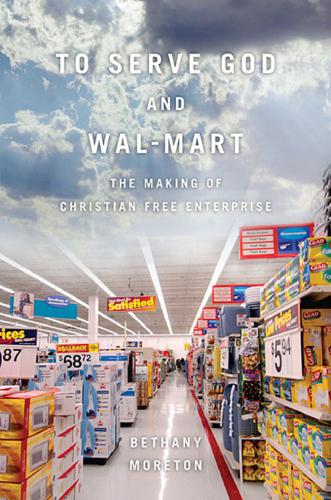
To Serve God and Wal-Mart: The Making of Christian Free Enterprise
by
Bethany Moreton
Published 15 May 2009
The result was an irresistible target for the Arkansans: an audience of slightly bewildered city folk, struggling to comprehend the company’s magic. With encouragement from Walton, Senior Vice President Ron Loveless elaborated on one of management’s typical in-Â�house gags 6 OUR FATHERS’ AMER I CA and presented it to the attentive crowd. “People often ask us how we predict market demand for discount merchandise,” Loveless began, and you’ve heard a lot of numbers today. But there is more to it€than that. We raise a good many chickens in Northwest Arkansas, and we’ve come to depend on them for what we call the Loveless Economic Indicator Report. You see, when times are good, you find plenty of dead chickens by the side of the road, ones that have fallen off the trucks.
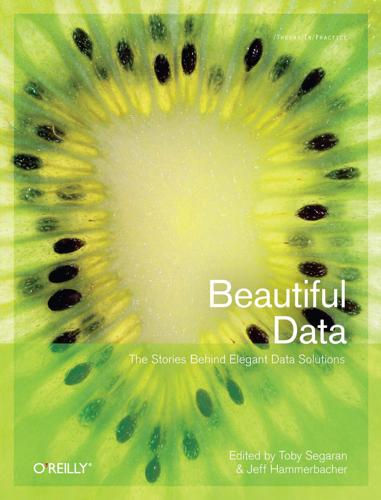
Beautiful Data: The Stories Behind Elegant Data Solutions
by
Toby Segaran
and
Jeff Hammerbacher
Published 1 Jul 2009
As we’ve learned recently, it can be a mistake to assume discrete events (a homeowner defaulting on his mortgage, for example) are independent, and to build large edifices upon such assumptions (tradeable financial products sliced into tranches, for example) when they are not necessarily so. Prediction markets and group decision-making processes can work exceptionally well—in some cases, better than the estimates of a set of experts. They’ve been shown to break down, however, when information cascades and interdependencies enter the system (Bikhchandani et al. 1998). 9. Data Doesn’t Stand Alone In real-world decision-making, data comes in many forms.

Computer: A History of the Information Machine
by
Martin Campbell-Kelly
and
Nathan Ensmenger
Published 29 Jul 2013
At this point the traditional business-machine manufacturers, such as IBM, began to take an interest. THE IBM PC AND THE PC PLATFORM IBM was not, in fact, the giant that slept soundly during the personal-computer revolution. IBM had a sophisticated market research organization that attempted to predict market trends, and once the personal computer became clearly defined as a business machine in 1980, IBM reacted with surprising speed. The proposal that IBM should enter the personal-computer business came from William C. Lowe, a senior manager who headed the company’s “entry-level systems” division in Boca Raton, Florida.

Terms of Service: Social Media and the Price of Constant Connection
by
Jacob Silverman
Published 17 Mar 2015
Like viral media, there may be a smattering of success stories, people who rise above the herd and manage to master the system, but the most productive online laborers usually manage to make only a few dollars per hour. Premise—a company specializing in what it calls “hyperdata,” using rapidly collected photos of goods, particularly in grocery stores, to predict market conditions—pays its photographers 8 to 10 cents per snapshot. Premise then passes its analysis on to hedge funds and major conglomerates, who pay four-or five-figure monthly subscription fees. Some industry leaders argue that this kind of labor opens up new possibilities of work that otherwise wouldn’t exist without distributed micro-work and smartphone-connected laborers.

Algorithms to Live By: The Computer Science of Human Decisions
by
Brian Christian
and
Tom Griffiths
Published 4 Apr 2016
Simple games like rock-paper-scissors may have equilibria visible at a glance, but in games of real-world complexity it’s now clear we cannot take for granted that the participants will be able to discover or reach the game’s equilibrium. This, in turn, means that the game’s designers can’t necessarily use the equilibrium to predict how the players will behave. The ramifications of this sobering result are profound: Nash equilibria have held a hallowed place within economic theory as a way to model and predict market behavior, but that place might not be deserved. As Papadimitriou explains, “If an equilibrium concept is not efficiently computable, much of its credibility as a prediction of the behavior of rational agents is lost.” MIT’s Scott Aaronson agrees. “In my opinion,” he says, “if the theorem that Nash equilibria exist is considered relevant to debates about (say) free markets versus government intervention, then the theorem that finding those equilibria is [intractable] should be considered relevant also.”
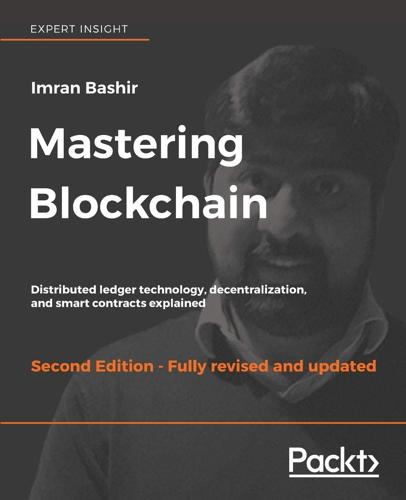
Mastering Blockchain, Second Edition
by
Imran Bashir
Published 28 Mar 2018
Applications (DApps and DAOs) developed on Ethereum There are various implementations of DAOs and smart contracts in Ethereum, most notably, the DAO, which was recently misused due to a weakness in the code and required a hard fork for funds to be recovered that have been syphoned out by the attackers. The DAO was created to serve as a decentralized platform to collect and distribute investments. Augur is another DApp that has been implemented on Ethereum, which is a decentralized prediction market. Many other decentralized applications are listed on https://www.stateofthedapps.com/. Tools Various frameworks and tools have been developed to support decentralized application development such as Truffle, MetaMask, Ganache, TestRPC and many more. We will talk about these in Chapter 13, Development Tools and Frameworks.
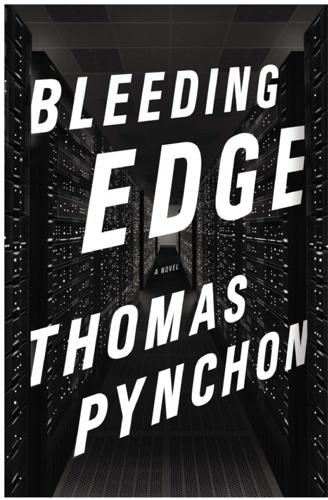
Bleeding Edge: A Novel
by
Thomas Pynchon
Published 16 Sep 2013
The times we shorted Amazon, got out of Lucent when it went to $70 a share, remember? It wasn’t me that ever ‘knew’ anything. But something did. Sudden couple extra lines of brain code, who knows. I just followed along.” “But then . . . if it was that same weird talent that kept you safe . . .” “How could it be? How could predicting market behavior be the same as predicting a terrible disaster?” “If the two were different forms of the same thing.” “Way too anticapitalist for me, babe.” Later he reflects, “You always had me figured for some kind of idiot savant, you were the one with the street smarts, the wised-up practical one, and I was just some stiff with a gift, who didn’t deserve to be so lucky.”
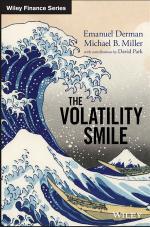
The Volatility Smile
by
Emanuel Derman,Michael B.Miller
Published 6 Sep 2016
Thus, some of the apparent correlation in Figure 8.9 would occur even if the smile stayed completely stationary as the market dropped. How much of the correlation is true comovement and not merely a consequence of a negative skew? We will see later in the book that different models produce different predictions. Market participants often talk about how “volatility changed.” One must be very precise in speaking about volatility changes because there are so many different kinds of volatility: realized volatility, at-the-money volatility, and the implied volatility of a particular strike. In option markets, the most commonly referred to volatility is current at-the-money implied volatility.

The Quiet Coup: Neoliberalism and the Looting of America
by
Mehrsa Baradaran
Published 7 May 2024
Much like the financiers of the early to mid-aughts, DeFi platform founders assure investors that it is nearly impossible to lose money in cryptotrading because of the “advanced statistical models” created by quants to slice and dice cryptoassets into various securities, including—yes—mortgage-backed cryptoassets.15 The types of trades on FTX ran the gamut: price speculation on cryptotokens, NFTs, and derivatives of NFTs, as well as variations on sports betting and speculation in the prediction markets. Market mayhem—and likely increased boredom during the pandemic—led to incredible rates of trading on the platform, and, in turn, skyrocketing revenues. In 2020 and 2021, FTX earned $85 million in trading fees; revenue grew by over 800 percent within a year. In 2021, the site reached a daily average trading volume of $993 million, a peak that surpassed prior peaks in derivatives trading.

New Market Wizards: Conversations With America's Top Traders
by
Jack D. Schwager
Published 28 Jan 1994
If you ever find yourself tempted to seek out someone else’s opinion on a trade, that’s usually a sure sign that you should get out of your position. What are your goals? There’s no better satisfaction than playing a piece well, whether the instrument is a piano or the markets. I measure my progress not in dollars but in my skill in predicting market patterns—that is, in how close I can come to pinpointing my entries and exits to the market turns. I believe that I can go into any market with just a quote machine and out-trade 98 percent of the other traders. Over the next ten years, I would like to significantly step up my trading size. I really believe that I can become one of the best traders around. 310 / The New Market Wizard Certainly one of the primary common characteristics I have found among the great traders is an almost compelling sense of confidence in their ability to succeed.
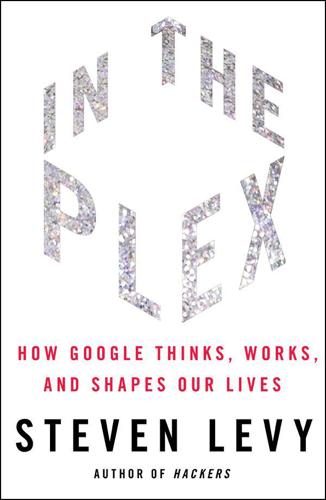
In the Plex: How Google Thinks, Works, and Shapes Our Lives
by
Steven Levy
Published 12 Apr 2011
After a number of involuntary exchanges, people either stopped checking or learned to hide their peeking more effectively. But Googlers were affected by stock ownership. (They were, after all, human.) Bo Cowgill, a Google statistician, did a series of studies of his colleagues’ behavior, based on their participation in a “prediction market,” a setup that allowed them to make bets on the success of internal projects. He discovered that “daily stock price movements affect the mood, effort level and decision-making of employees.” As you’d expect, increases in stock performance made people happier and more optimistic—but they also led them to regard innovative ideas more warily, indicating that as Googlers became richer, they became more conservative.

Never Let a Serious Crisis Go to Waste: How Neoliberalism Survived the Financial Meltdown
by
Philip Mirowski
Published 24 Jun 2013
See also Chwieroth, Capital Ideas. 100 Hayek, Studies in Philosophy, Politics and Economics, p. 172. 101 See the papers and data available for download at http://elsa.berkeley.edu/~saez/. 102 Rajan, Fault Lines. 103 See Van Horn and Mirowski, “The Rise of the Chicago School and the Birth of Neoliberalism.” 104 Nace, Gangs of America. 105 Jensen and Meckling, “Theory of the Firm.” 106 Nik-Khah, “A Tale of Two Auctions.” 107 On the ill-fated DARPA “policy analysis market” project, see www.sfgate.com/cgi-bin/article.cgi?file=/c/a/2003/07/29/MN126930.DTL (accessed December 2, 2006) and Justin Wolfers and Eric Zitzowitz, “Prediction Markets in Theory and Practice,” www.dartmouth.edu/~ericz/palgrave.pdf. 108 For unabashed examples of this neoliberal argument, see Litan, “In Defense of Much, but Not All, Financial Innovation” and The Derivatives Dealer’s Club; Shiller, Finance and the Good Society. A more skeptical summary is Engelen, et al., After the Great Complacence.
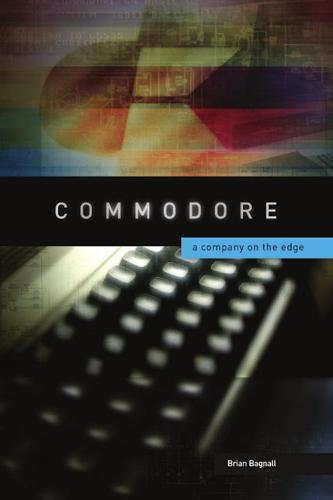
Commodore: A Company on the Edge
by
Brian Bagnall
Published 13 Sep 2005
“I think it might have been, ‘Is it ready enough to show?’ And he made that decision there.” The nervous engineers displayed the result of almost two months of compressed labor. “We told him what it was, how simple it was, and what it could cost,” recalls Russell. “He said, ‘Put it on the floor.’” As Winterble predicted, marketing was not happy to learn of the project so late in development. “When these guys found out about it, and found out that they were not involved in it, then right away you can imagine: it hit the fan,” says Winterble. “It was turmoil.” With no advanced warning, Kit Spencer had to work non-stop to prepare print material for the prototype.

The Rise of the Network Society
by
Manuel Castells
Published 31 Aug 1996
Or, to put it in other words, it is based on the assumption of the “five zeros”: zero defect in the parts; zero mischief in the machines; zero inventory; zero delay; zero paperwork. Such performances can only be predicated on the basis of an absence of work stoppages and total control over labor, on entirely reliable suppliers, and on adequately predicted markets. “Toyotism” is a management system designed to reduce uncertainty rather than to encourage adaptability. The flexibility is in the process, not in the product. Thus, some analysts have suggested that it could be considered as an extension of “Fordism,”26 keeping the same principles of mass production, yet organizing the production process on the basis of human initiative and feedback capacity to eliminate waste (of time, work, and resources) while maintaining the characteristics of output close to the business plan.

Accessory to War: The Unspoken Alliance Between Astrophysics and the Military
by
Neil Degrasse Tyson
and
Avis Lang
Published 10 Sep 2018
Kleinfield, “Seeing Dollar Signs in Searching the Stars,” New York Times, May 15, 1988; Gary Weiss, “When Scorpio Rises, Stocks Will Fall,” Business Week, June 14, 1993, 106; Anne Matthews, “Markets Rise and Fall, but He’s Always Looking Up,” New York Times, Mar. 12, 1995; Reid Kanaley, “Astrological Web Sites Predict Market Movements,” Philadelphia Inquirer, Oct. 15, 1999; “Investrend Co-Sponsors Astrologers Fund Triple Gold Investment Conference February 1,” Financial Times Information, Jan. 30, 2006; David Roeder, “Some Large-cap Deals Hide in Plain Sight,” Chicago Sun Times, Apr. 30, 2006. 39.Ilia D. Dichev and Troy D.

Rationality: From AI to Zombies
by
Eliezer Yudkowsky
Published 11 Mar 2015
Lonely dissent, I called it. True dissent doesn’t feel like going to school wearing black; it feels like going to school wearing a clown suit. That’s what it takes to be the lone voice who says, “If you really think you know who’s going to win the election, why aren’t you picking up the free money on the Intrade prediction market?” while all the people around you are thinking, “It is good to be an individual and form your own opinions, the shoe commercials told me so.” Maybe in some other world, some alternate Everett branch with a saner human population, things would be different . . . but in this world, I’ve never seen anyone begin to grow as a rationalist until they make a deep emotional break with the wisdom of their pack.
…
Do not rely on being able to successfully think high-minded thoughts unless experimentation is so costly or dangerous that you have no other choice. But sometimes experiments are costly, and sometimes we prefer to get there first . . . so you might consider trying to train yourself in reasoning on scanty evidence, preferably in cases where you will later find out if you were right or wrong. Trying to beat low-capitalization prediction markets might make for good training in this?—though that is only speculation. As of now, at least, reasoning based on scanty evidence is something that modern-day science cannot reliably train modern-day scientists to do at all. Which may perhaps have something to do with, oh, I don’t know, not even trying?

The Transhumanist Reader
by
Max More
and
Natasha Vita-More
Published 4 Mar 2013
Robin Hanson, PhD, is Associate Professor of Economics, George Mason University. He authored “Meet the New Conflict, Same as the Old Conflict” (Journal of Consciousness Studies 19, 2012); “Enhancing our Truth Orientation” (Human Enhancement, Oxford University Press, 2009); and “Insider Trading and Prediction Markets” (Journal of Law, Economics, and Policy 4, 2008). Patrick D. Hopkins, PhD, is Associate Professor, Philosophy and Gender Studies, Millsaps College. He authored Sex/Machine: Readings in Culture, Gender, and Technology (Indiana University Press, 1999); and co-authored with Larry May et al.

Enlightenment Now: The Case for Reason, Science, Humanism, and Progress
by
Steven Pinker
Published 13 Feb 2018
Tetlock and the psychologist Barbara Mellers held a rematch between 2011 and 2015 in which they recruited several thousand contestants to take part in a forecasting tournament held by the Intelligence Advanced Research Projects Activity (the research organization of the federation of American intelligence agencies). Once again there was plenty of dart-throwing, but in both tournaments the couple could pick out “superforecasters” who performed not just better than chimps and pundits, but better than professional intelligence officers with access to classified information, better than prediction markets, and not too far from the theoretical maximum. How can we explain this apparent clairvoyance? (For a year, that is—accuracy declines with distance into the future, and it falls to the level of chance around five years out.) The answers are clear and profound. The forecasters who did the worst were the ones with Big Ideas—left-wing or right-wing, optimistic or pessimistic—which they held with an inspiring (but misguided) confidence: As ideologically diverse as they were, they were united by the fact that their thinking was so ideological.